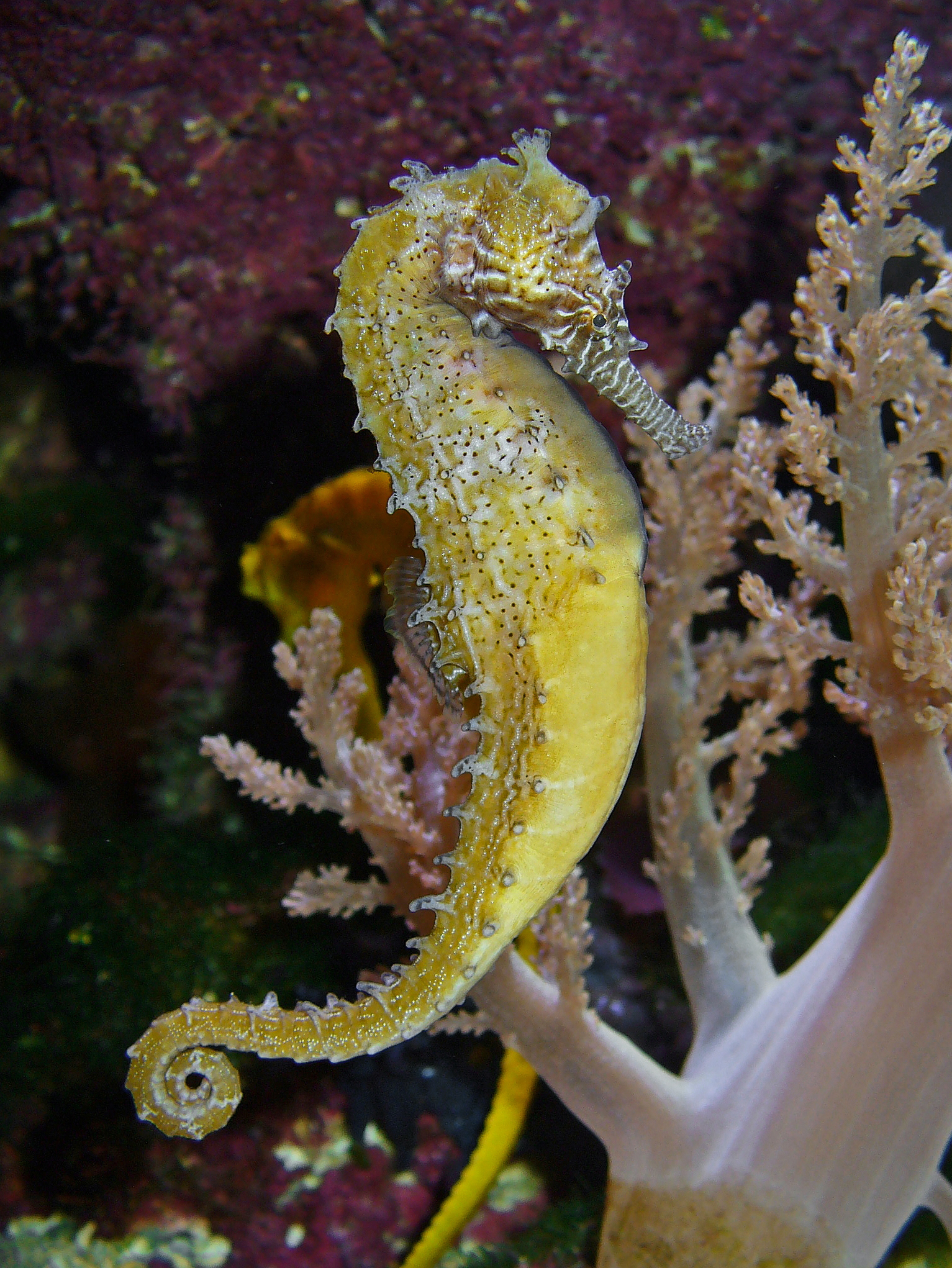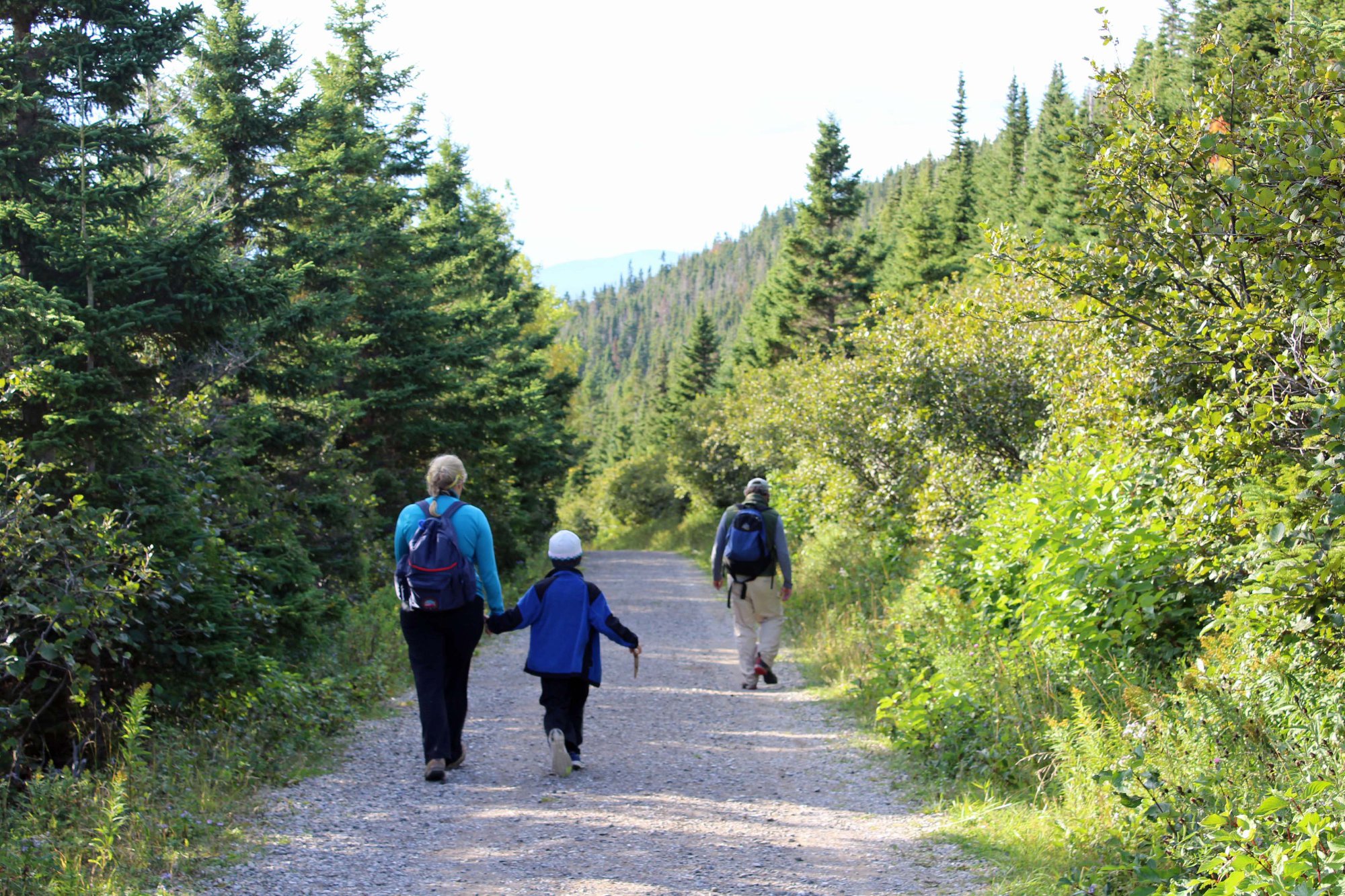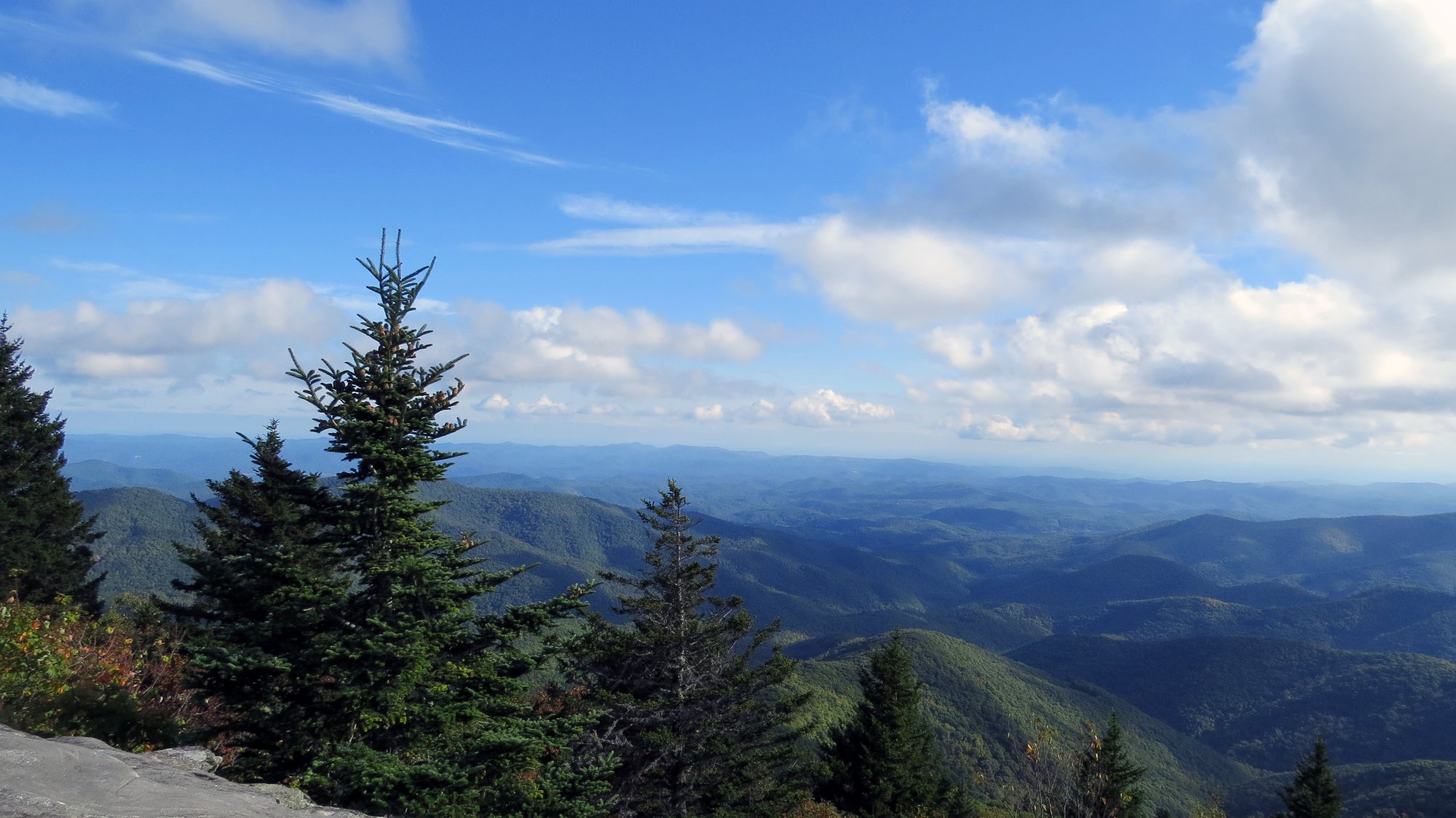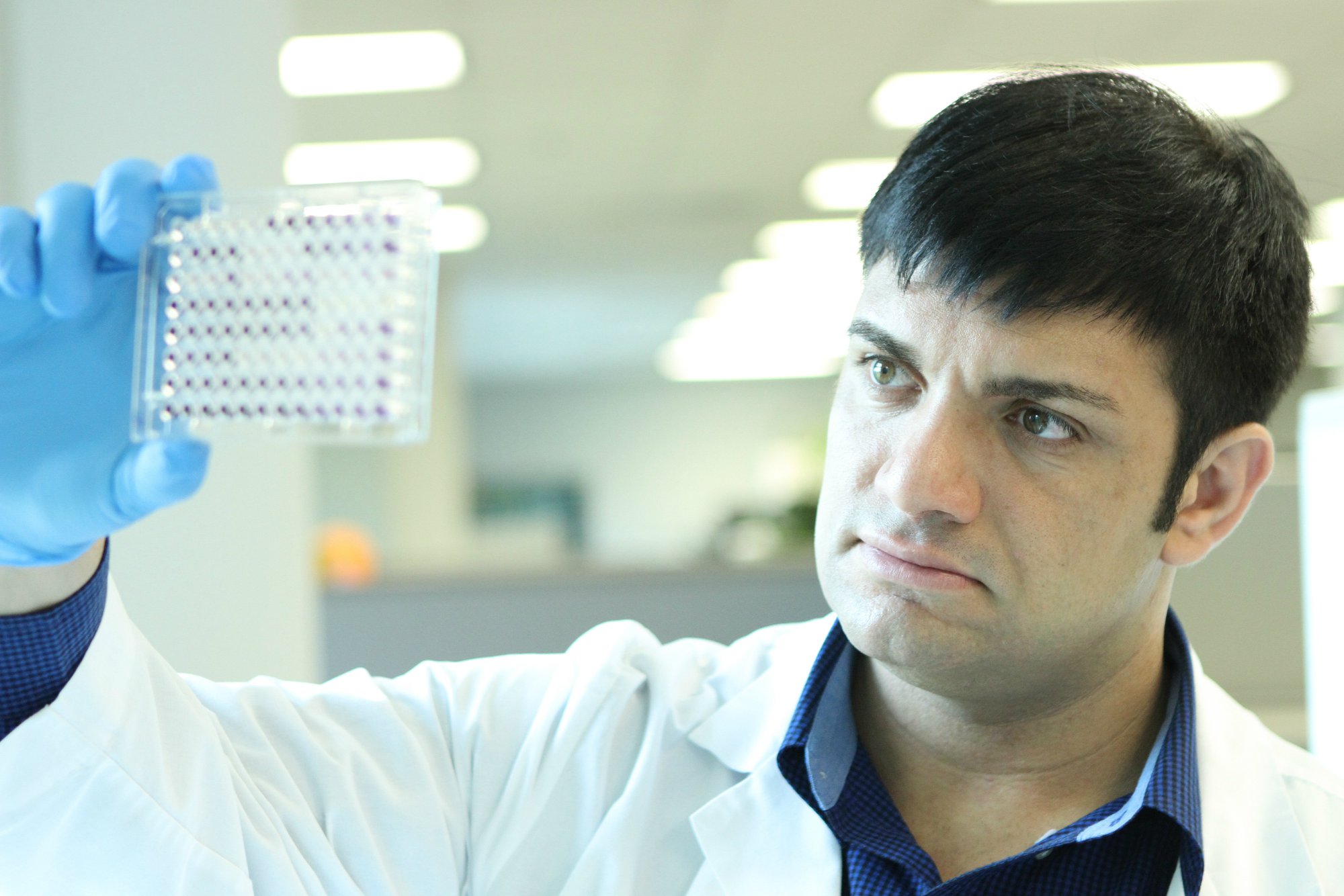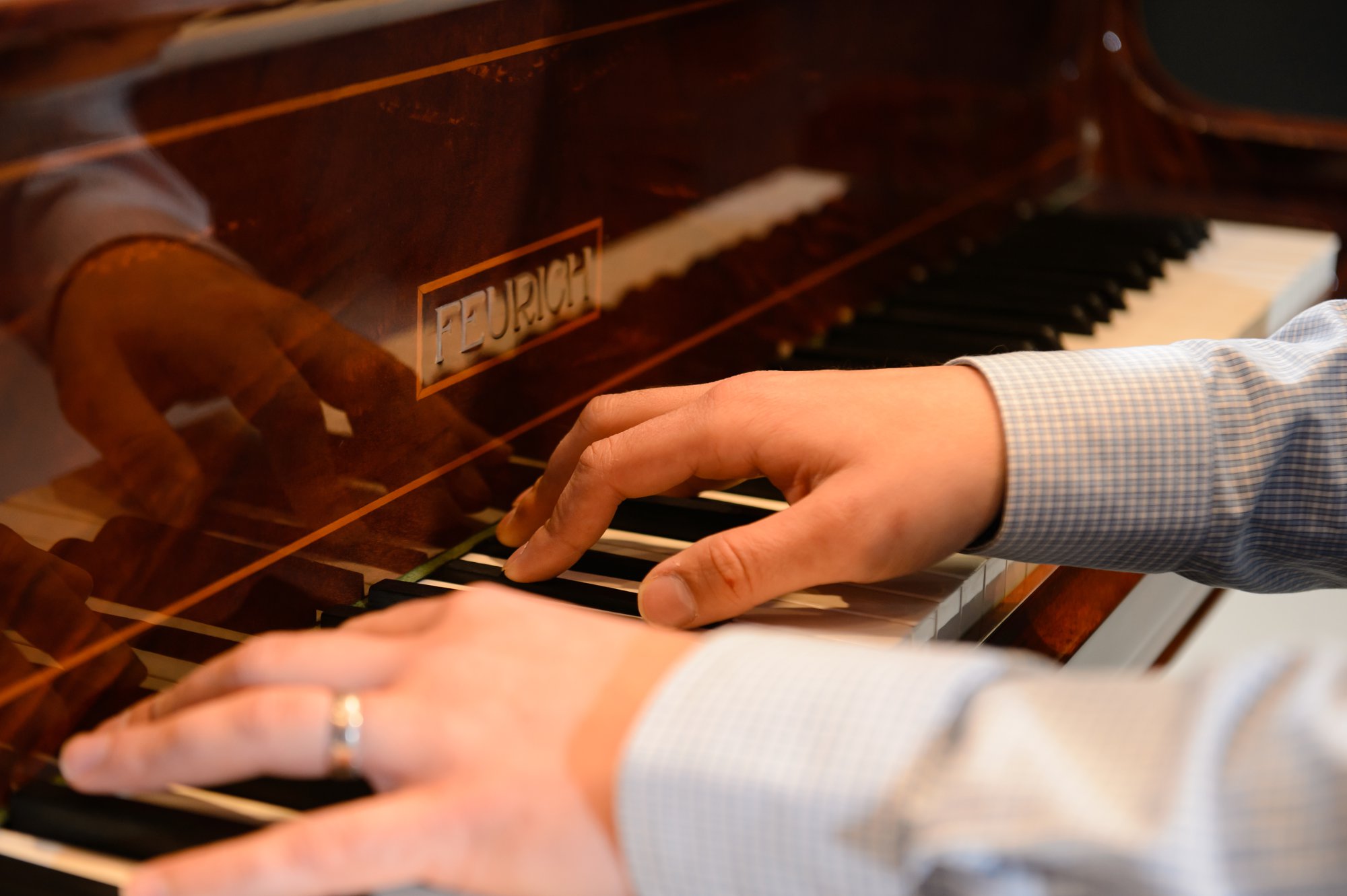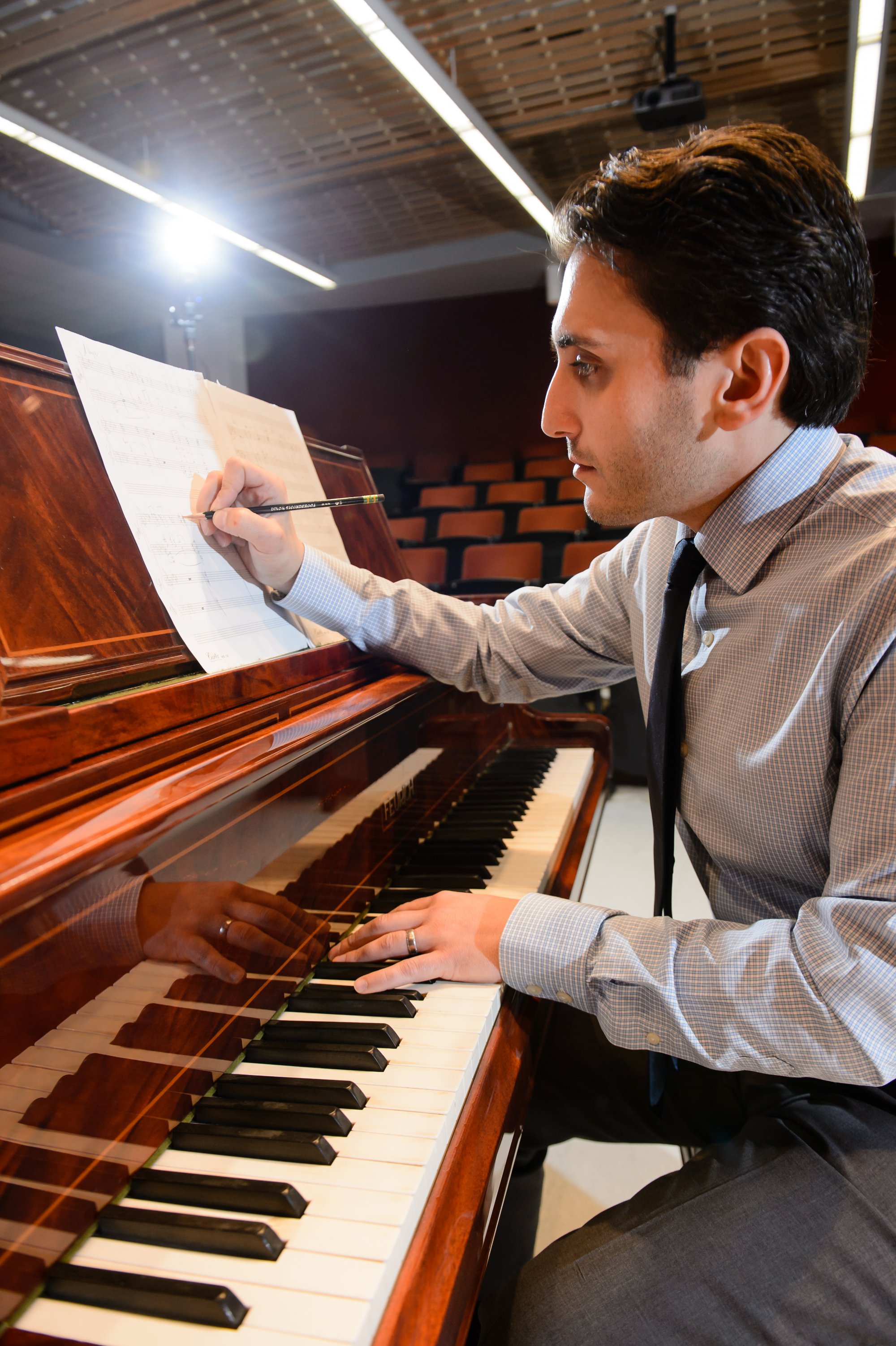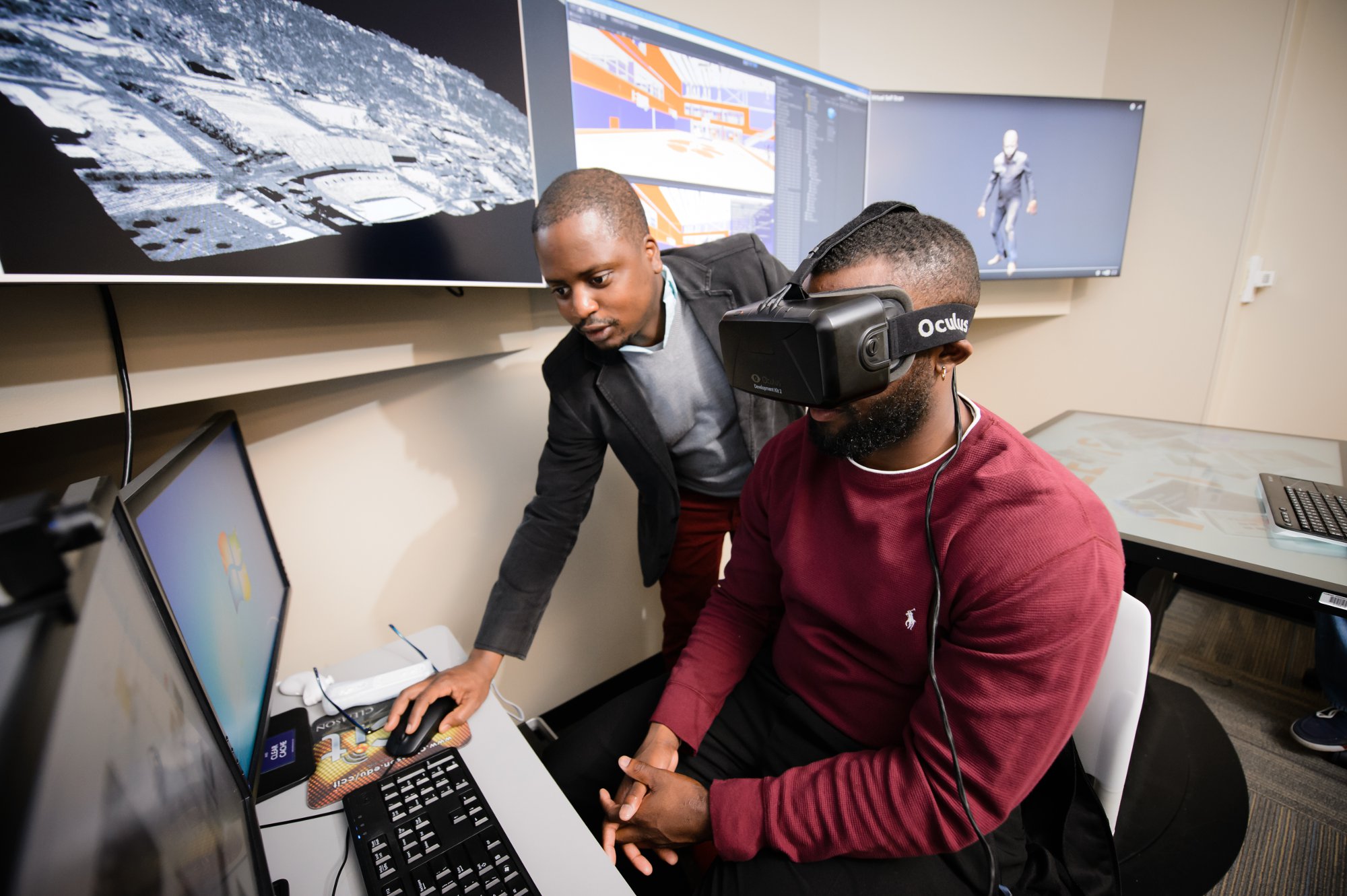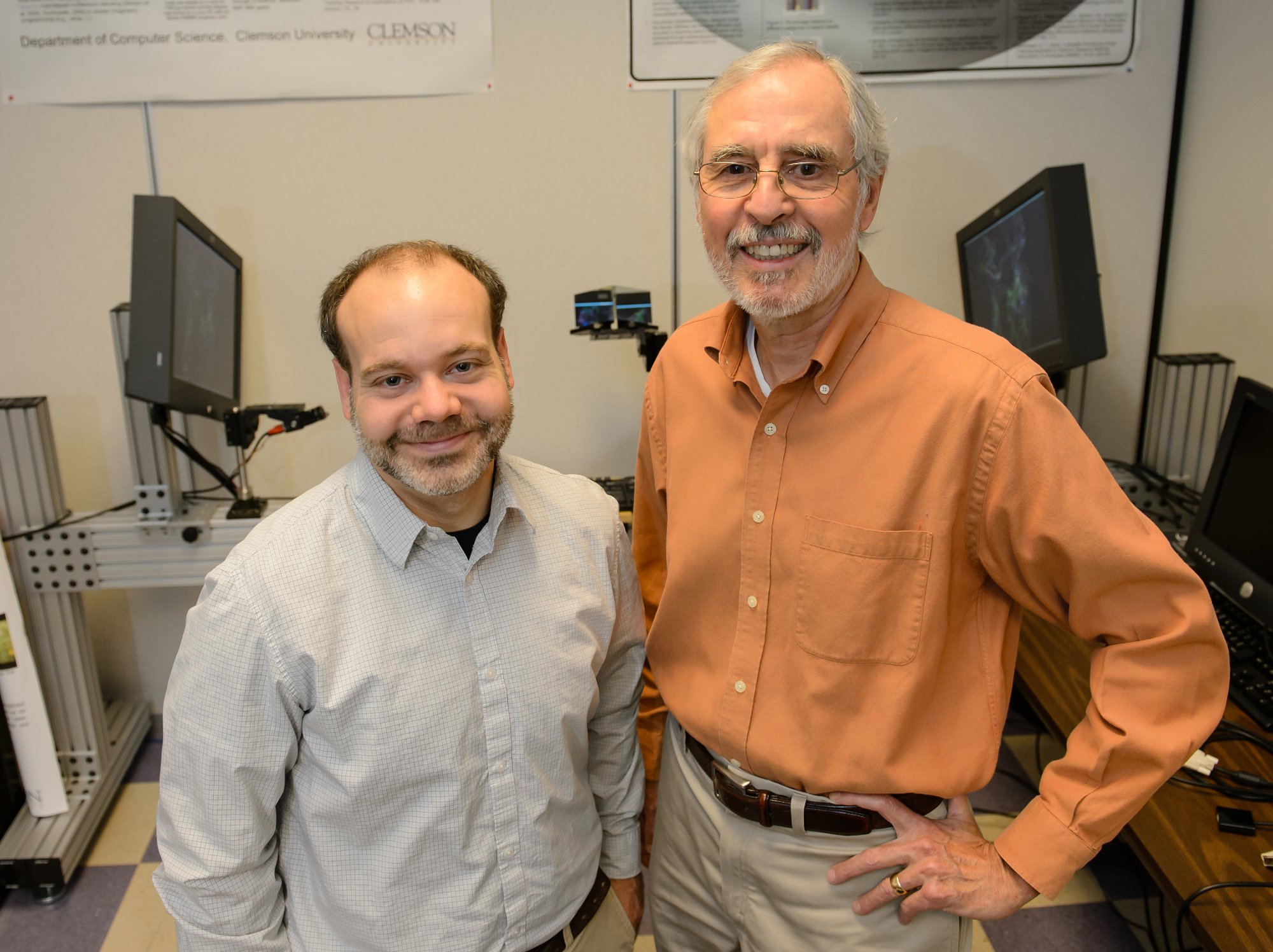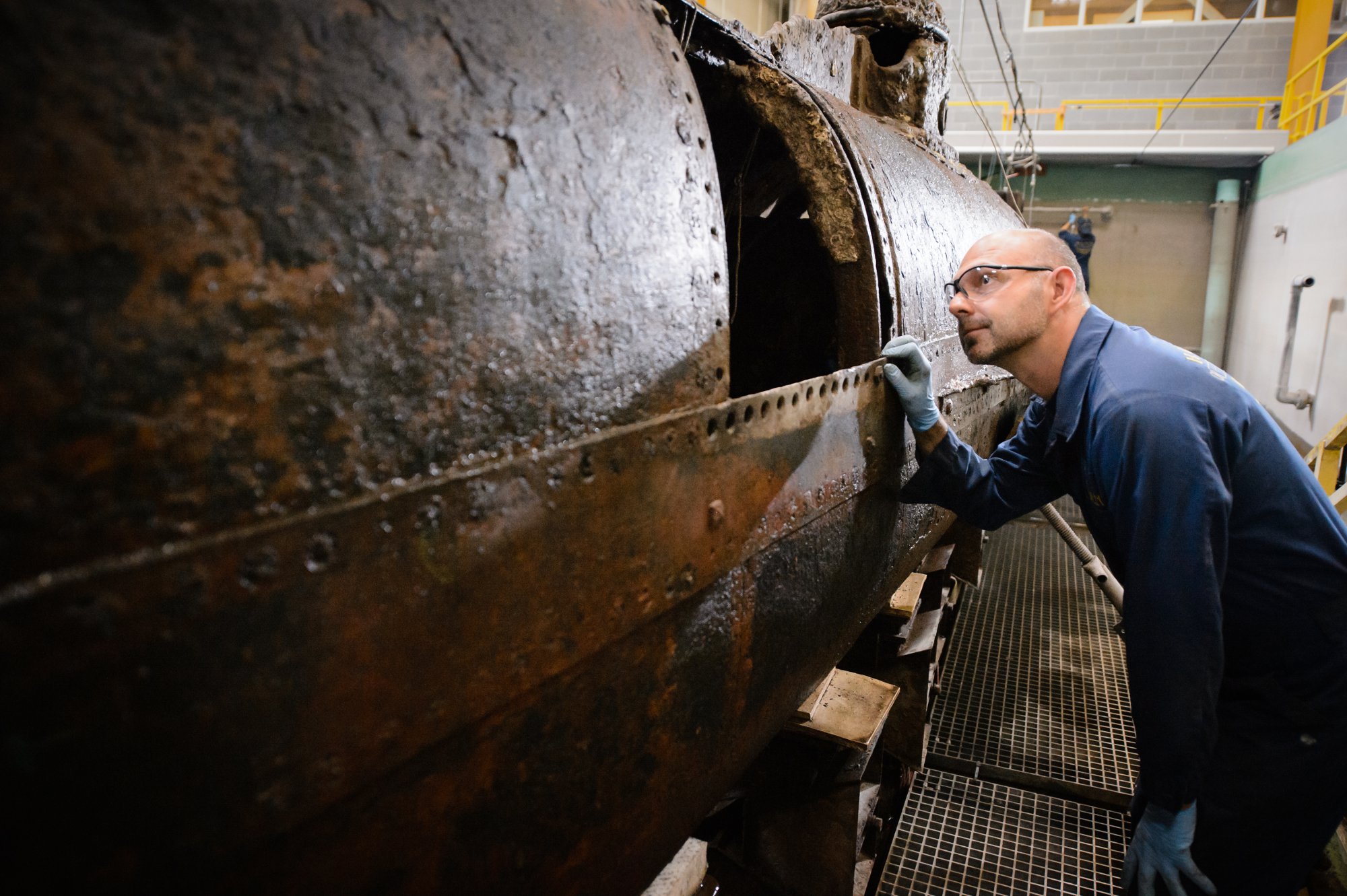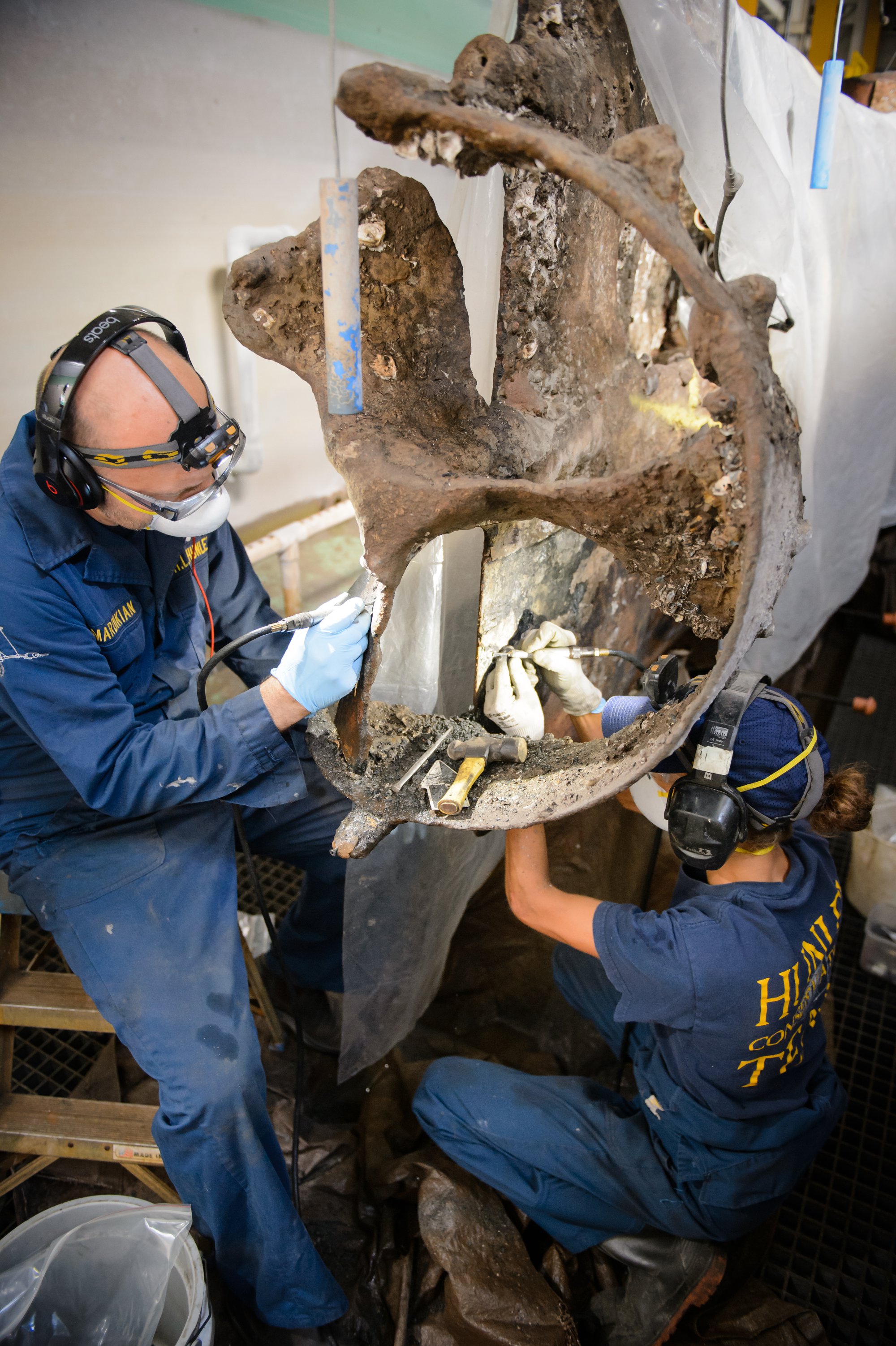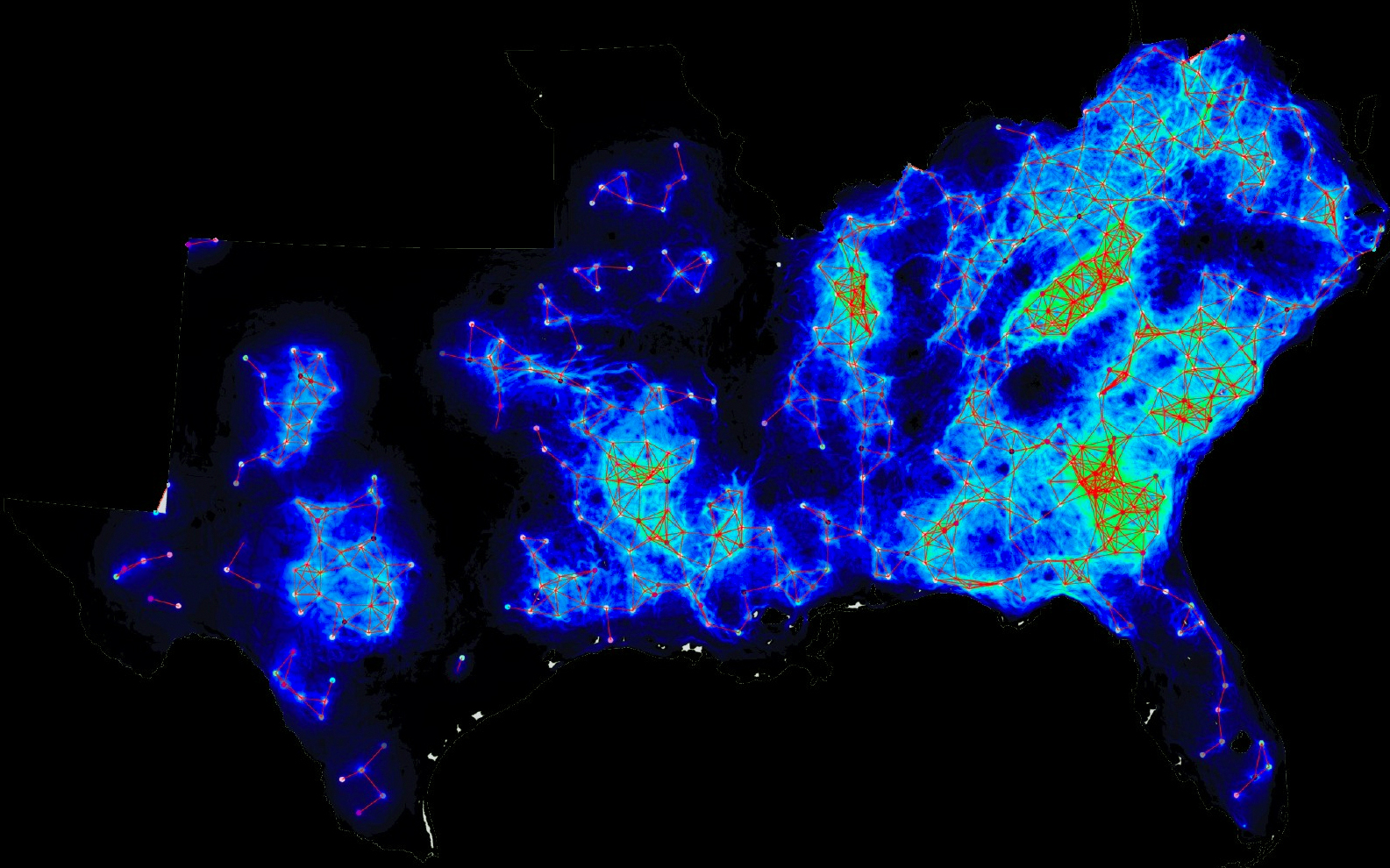
This habitat connectivity map, created by Paul Leonard, a postdoctoral fellow who works on conservation planning in the Baldwin lab, funded by the Appalachian Landscape Conservation Cooperative, shows the routes of animals like black bears, timber rattlesnakes, and Rafinesque big-eared bats.
Off-the-shelf software would’ve taken two and a half years to compute the millions of linear algebraic equations used to generate a map like this. But using the Palmetto cluster supercomputer to combine billions of bytes of data, including satellite photographs and the information from hands-on fieldwork, Leonard produced maps in a mere two days. These geospatial maps, which model habitat connectivity for South Carolina and the southeastern United States, account for habitat corridors and ranges as well as natural and artificial areas “resistant” to animal movements, such as mountains, rivers, cities, and highways.
Due to the map program’s ability to zoom in and zoom out, Baldwin, who works closely with Leonard, says, “We can see patterns influencing local animals like box turtles, as well as wide-ranging animals like black bears.”
By understanding the routes and areas animals actually use, through uniting computation with conservation, maps like this can help the federal government and conservation groups develop effective strategies that span states but also serve local populations. Or, as Leonard says, “The maps provide novel information that can help all these sources come up with smart and effective conservation plans.”
]]>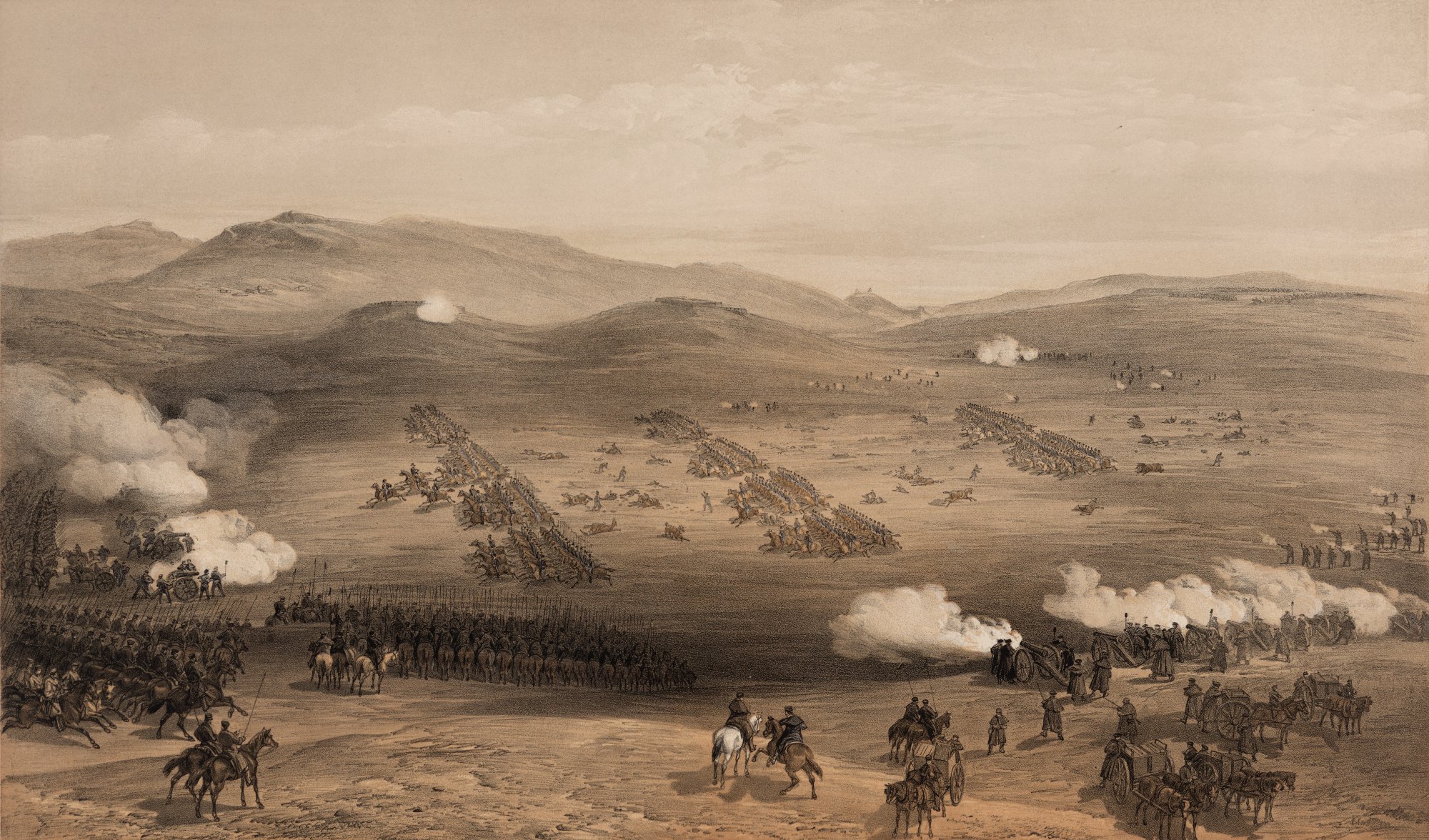 In the Crimean War’s disastrous Charge of the Light Brigade, the British cavalry was sent on a frontal assault against a Russian artillery battery that resulted in a massacre. Library of Congress.
In the Crimean War’s disastrous Charge of the Light Brigade, the British cavalry was sent on a frontal assault against a Russian artillery battery that resulted in a massacre. Library of Congress.
Why do the British celebrate a lack of success so enthusiastically?
Stephanie Barczewski explains that the topic for her new book, Heroic Failure and the British (Yale University Press, 2015), came to her largely by way of Antarctica.
“In my previous work on two prominent British explorers of the early twentieth century, Robert Falcon Scott and Ernest Shackleton, I was intrigued by the fact that although these men failed to achieve the primary goal of their expeditions to the South Pole, they became celebrated heroes in England anyway,” says Barczewski, who has taught British history at Clemson for twenty years. Her book on these two explorers, Antarctic Destinies: Scott, Shackleton and the Changing Face of Heroism, was published in 2007.
In doing research for this earlier book, Barczewski noted a curious trend: British explorers and military leaders who failed to achieve their goals, sometimes in costly and dramatic fashion, were often celebrated and honored—by widespread public acclaim, with statues, and in some cases, knighthood. Trying to understand this puzzling mindset led her to write her recently published book.
“In my research I wanted to answer two basic questions,” she says. “Do the British celebrate heroic failure more frequently and more enthusiastically than other cultures? If the answer is ‘yes,’ then why are they so enamored of heroic failure?” Barczewski speculated that the answers to these questions might reveal a great deal about British identity.
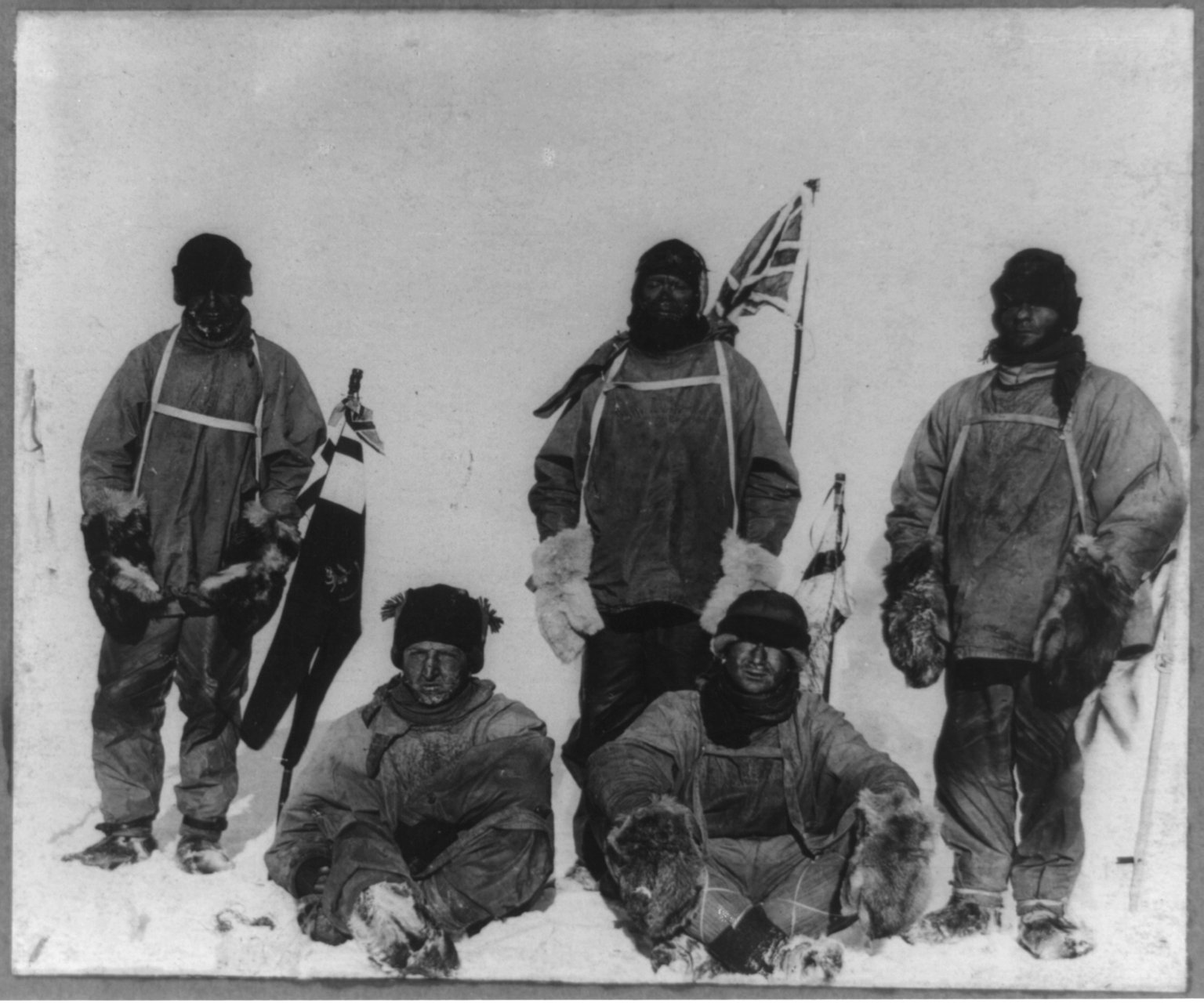
Scott (left) led the doomed Terra Nova expedition to the South Pole. Barczewski questions why Scott’s failure is commemorated in London. Library of Congress.
The Charge of the Light Brigade
One of the best-known military episodes in British history, the Charge of the Light Brigade exemplifies how failure became enshrined as heroic in Britain. The charge took place on October 25, 1854, during the Crimean War. In the Battle of Balaclava, Lord Raglan, commander of the British forces, ordered the Light Brigade to pursue a retreating Russian force, a task well-suited to light cavalry. Due to miscommunication in the chain of command, however, the Light Brigade was instead sent on a frontal assault against an artillery battery—one well-prepared with excellent fields of defensive fire. The battery was deployed at the end of a mile-long valley and flanked on both sides by additional guns that fired down from above.
The Light Brigade’s action was in defiance of every basic principle of the use of cavalry in warfare, Barczewski states. Of the approximately 670 men who participated in the charge, almost three hundred were killed, wounded, or taken prisoner, and this massacre took barely twenty minutes from start to finish. The assault ended with no significant gains.
But despite the fact that the charge was a debacle, the survivors came home as heroes, even those officers who may have been involved in the string of errors and misunderstandings that led to the slaughter of so many British troops. Barczewski chronicles this public reaction in her chapter titled “The Charge.”
Captain Soame Gambier Jenyns, for example, returned from Balaclava to his familial home, Bottisham Hall in Cambridgeshire. A large crowd cheered him as he rode into the village on his horse, Ben, another survivor of the charge. The parish priest observed that “it must have been gratifying to our gallant friend to see the welcome accorded, while there was not a man, woman or child, but what turned out to do him honour.” Two years after he retired from the army, Jenyns died. His funeral cortege in Bottisham featured a military band and a column of Hussars; Ben, now twenty-five years old, was led behind the coffin. Hundreds of people packed the church and the surrounding streets. After the coffin was placed in the family vault, three volleys were fired by a rifle team, followed by a trumpet flourish. A memorial was later installed in the chancel of Bottisham church, highlighting the fact that Jenyns was a survivor of the Charge of the Light Brigade.
“Jenyns’s example illustrates how this military debacle was enshrined as a heroic failure,” Barczewski says. “The survivors became celebrities who were feted at annual banquets and, as the decades passed, were given lavish public funerals. This was despite the fact that the charge had been a total disaster.”
Finding her academic calling
During her two decades at Clemson, Barczewski has written books, articles, book chapters, book reviews, and given presentations at conferences in the United States, the United Kingdom, and Ireland—all focused on British history.
Where did this intense interest come from?
“My passion for British history can be pinpointed to a very specific moment,” Barczewski explains. “In January 1989, when I was beginning my second semester as a junior at Columbia University, I was an English major but needed a fifth class to fill out my schedule. I decided, somewhat arbitrarily, to take David Cannadine’s British History Since 1832 class and was enthralled from the minute I sat down. Professor Cannadine, who now teaches at Princeton and is one of the most distinguished British historians in the world, was the most amazing lecturer I had ever heard. I loved the class.”
In her senior year Cannadine agreed to supervise an independent study project Barczewski wanted to undertake. “He spent hours patiently and enthusiastically discussing and improving my work,” she says, and at this point her English degree was, so to speak, history.
“I was well and truly hooked,” Barczewski laughs. “I knew I was on the right academic path.” Barczewski went on to attend graduate school at Yale University, where her dissertation was supervised by Cannadine’s equally distinguished wife, Linda Colley. “So I was incredibly lucky to be mentored by two such brilliant British historians,” Barczewski says.
But what if…?
But when asked what she thinks she might have done professionally if this academic path hadn’t opened for her, Barczewski doesn’t hesitate.
“If I could do anything else in the world besides what I am doing now, I would be an Imagineer for the Walt Disney Company, a history consultant to help them design Disney theme parks. I think it’s fascinating to try to present meaningful history to a mass audience whose entryway to history is through simply having fun.”
When she was a child and a teenager, her parents took her to the Magic Kingdom “quite a few times,” Barczewski says, adding that the experience somehow became embedded in her DNA.
“And actually I go more now than when I was a kid!”
Race to the South Pole
Heroic failures in Britain were not only military. In her research, carried out over four years in over a dozen archives in the United Kingdom and the United States, Barczewski discovered that from 1850 on, numerous British explorers were unsuccessful in achieving their primary goal. Captain Scott’s second expedition—which attempted to be the first to discover the South Pole—is a prime example.
Scott’s march south began in October 1911. Leaving nothing to chance, Barczewski explains, Scott devised an elaborate system of transport, using newly invented motor-sledges (the precursor to today’s Sno-Cats), ponies, and dogs, all of which were loaded on in New Zealand. He realized the limits of man-hauling (sleds pulled by men), but even so, decided it was to be the sole means of transport for the crucial last stages of the journey to the South Pole and for virtually the entire journey back.
The task was demanding enough in itself, but at the eleventh hour Scott was surprised to learn that he had competition. The Norwegian explorer Roald Amundsen, who had led the first expedition to sail through the Northwest Passage from 1903 to 1906, had intended to be the first to reach the North Pole, but after Frederick Cook and Robert Peary both claimed to have gotten there in 1909, he turned south instead.
It was not until Scott reached Melbourne in the summer of 1910 while on his way to Antarctica that he received a telegram simply stating: “Am going south Amundsen.” Amundsen had sent Scott the telegram because explorers honored an unwritten code requiring them to be straightforward about their plans. Scott readily understood what this meant: Amundsen was a veteran polar explorer whose abilities were not in doubt. He was, moreover, only trying to reach the South Pole, whereas Scott intended to carry out an extensive scientific program as the team made its southern journey. Scott opted not to alter his plans, but he recognized that Amundsen was likely to win the race. He did: The Norwegian reached the South Pole on December 14, 1911. Slightly over a month later, on January 16, 1912, Scott and his men were ten miles from the Pole when they saw a black flag fluttering in the snow, irrefutable evidence that they had been beaten.
Scott’s journey had been a struggle from the start, and after being trumped by Amundsen, a series of tragedies befell the five-man polar party. They burned an enormous amount of calories daily due to the physical exertions of man-hauling, and their food supply was dwindling. The men were gradually starving to death. Their progress slowed so that they reached their next supply depot (laid by the expedition the previous season) with little food or fuel to spare. One man collapsed and died. Another, who had been suffering badly from frostbitten feet and from scurvy, bid his mates goodbye and left the tent one night to die in the cold. Two days later, Scott and his remaining two companions were pinned in their tent by a blizzard. The tent became their tomb.
Justifying failure
The news of Scott’s death did not reach Britain until February 1913. By this time, a narrative had taken shape that justified Scott’s failure to beat Amundsen to the South Pole by claiming that the Norwegians had cheated. By not telling Scott, and the world, that he was going for the South rather than the North Pole until the last minute, Amundsen had not played the game fairly and had not allowed an honest competition to take place.
From all across the United Kingdom, people sent condolences, poems, and other communications to the families of the dead. These expressions of sympathy flowed in from all ranks of society. There were frequent descriptions in newspapers and elsewhere of the kind of heroism Scott and his companions had represented, which focused on their endurance, fortitude, and self-sacrifice. The unpredictable Antarctic weather was seen as the main reason for the disaster, not any errors of planning or deficiencies on the part of the explorers.
Commemorating failure
In Waterloo Place in central London, just south of Piccadilly Circus, a statue of Scott stands alongside memorials to the Crimean War and the Arctic explorer Sir John Franklin, who died along with 148 of his men while leading an expedition to discover the Northwest Passage in the 1840s.
“Waterloo Place represents a strange use of London’s urban space for commemorative purposes,” Barczewski says. “Most of its monuments recall events—the Crimean War and the polar expeditions of Franklin and Scott—that were failures rather than triumphs. Why, one might ask, would such a prominent and precious space in London be used to commemorate these particular events and persons?”
The answer, she says, relates to a strain in British culture that embraces the nobility of suffering, defeat, and heroism in the face of disaster over triumph and the glory of victory.
“In this conception of heroism,” Barczewski states, “effort, perseverance, pluck, and grace under pressure are seen as more important than winning.”
But why is heroic failure so prominent in British culture?
Barczewski argues that answering that question requires an understanding of the role of the British Empire, which reached a peak of economic and strategic importance in the nineteenth century. “A growing number of historians in recent years have reminded us of the true nature of the violent and coercive forces that built and sustained the empire,” she says. “It was important for the British to see themselves not as aggressive, authoritarian, and violent imperial conquerors, but as benevolent administrators who had acquired much of their colonial territory by accident, who ruled it with a velvet glove rather than an iron fist, and who often sacrificed their own lives in order to benefit the places over which they ruled.
“Heroic failure arose from British power and dominance, and from the need to provide alternative narratives of empire that distracted from its real-life exploitative and violent aspects by emphasizing an idealized version of the nation’s character,” Barczewski says. “The British wanted to be seen not as conquerors but as representatives of a nation that was doing good in the world.”
Michael Porter first began studying seahorses when his Ph.D. adviser, at the University of California-San Diego, handed him a seahorse and asked him to look at its armor. It seems strange to think that there’s any strength in a teeny seahorse at all, but it can withstand crushing forces better than many other animals. The trick is an interlocking mechanism that joins its bony plated armor together, allowing the tail to be highly flexible and impact resistant. Like other scientists, Porter has learned that it’s not only the composition of a material that makes a difference. Its configuration can be extremely important, too.
Porter directs the Natural Engineering Lab, whose mission is to integrate engineering with the study of biological materials and organisms for crossdisciplinary research. He wants not only to create sustainable designs—such as new mechanical devices and robotics—but also to learn more about natural systems and how they fit into their environments.
Porter says he has always been fascinated with how, and why, things work as they do. An avid surfer, he has spent most of his life near beaches around the country exploring aquatic life. Nowadays, when he hears the surf is up, he still likes to get away occasionally to the coast of South Carolina or Florida.
At Clemson, Porter has continued his research on the seahorse, focusing his attention on the animal’s prehensile tail, with a structure that is markedly different from other tails. A cross-section reveals that the animal’s tail is a series of square boxes, each composed of four interlocking, right-angled plates. It’s not cylindrical as is, say, a monkey’s tail. It has external plating that’s organized to hold on to objects. Its structure is quite complicated; it has external plating that surrounds the vertebrae column, with ball-and socket, peg-and-socket, and gliding joints. The four angular, overlapping plates that make up each square unit of the tail are bony, but they contain a lot more collagen than ordinary bone. The collagen makes the plates flexible, allowing them to bend without breaking, but the mineral content of the bones makes them stiff. Bones usually are composed of about 65 percent stiffening mineral and 35 percent collagen. The plates in a seahorse tail have a mineral content of only 40 percent, which allows them to deform under pressure and then spring back when other bones would ordinarily be broken or crushed.
Porter printed out a three-dimensional model of a seahorse tail and a hypothetical round tail for comparison. He then subjected the two tails to a series of tests to gauge their strength, impact resistance, and flexibility. The seahorse tail was stiffer than the cylindrical tail and also able to absorb more energy. When subjected to compressive forces, the seahorse tail flattened out, but, once released, it fell back into place. At high-stress locations, the seahorse tail has joints that prevented failure. When Porter twisted the seahorse tail replica and then released it, he found that it returned to its resting position. The square design of the seahorse tail gives it more surface contact when grasping objects.
He concluded that the seahorse’s square tail is, in many ways, better than the cylindrical tail. It’s stiffer and stronger, as well as being more elastic. His paper on the research, “Why the Seahorse Tail is Square,” was published in a recent issue of Science magazine. The musculoskeletal structure of the tail may lead to future robotics applications. But that’s not why Porter is studying it, he says. His motivation is to learn more about the basic science, the biomechanics of the tail.
Bio-design is a cutting-edge topic: Across the country, engineers are studying all sorts of animals and insects on the micro and nano-level, and are designing devices based on their findings.
Fall semester at Clemson, Porter designed and taught an undergraduate mechanical engineering class on biomimetics and bioinspired design. He laughs when he talks about the amount of work required to plan, research, and execute a new course, adding that he’s looking forward to teaching it the second time. Bio-design is a cutting-edge topic: Across the country, engineers are studying all sorts of animals and insects on the micro and nanolevel, and are designing devices based on their findings—wall-climbing robots with the same directional adhesive abilities as geckos, a cane for sight-impaired people based upon bats’ ability to navigate with ultrasonic echoes, and the tapered nose of a Japanese bullet train with a design derived from the beak of a kingfisher.
Porter says he wanted to introduce biology to undergraduates “who may not have had any biology since high school.” Students learned not only about bio-design, but also about biomimetics (the study of how various aspects of nature can be mimicked to solve human problems), structural biopolymers, biological materials science, surface textures, and animal locomotion, among other topics. He taught the mechanics of biology, solid mechanics, and fluid mechanics.
Nakul Ravikumar is a doctoral student in mechanical engineering and a teaching assistant in Porter’s lab. Because, he confesses, he hadn’t had a biology course in years, he audited the class. He says the students were excited about bio-design and seemed to enjoy learning the topics, especially locomotion and flight.
“He talked about biology in the beginning and then linked it to mechanics,” Ravikumar says. “He concentrated on aquatic and ground locomotion and flight. And when it came to prehensile abilities, he talked about his research on the seahorse tail.”
The course has helped Ravikumar think about possibly collaborating with other departments for his doctoral research. He believes that in using biomechanics “we can reduce the waste we produce. Green energy is so important.”
photos by Craig Mahaffey.
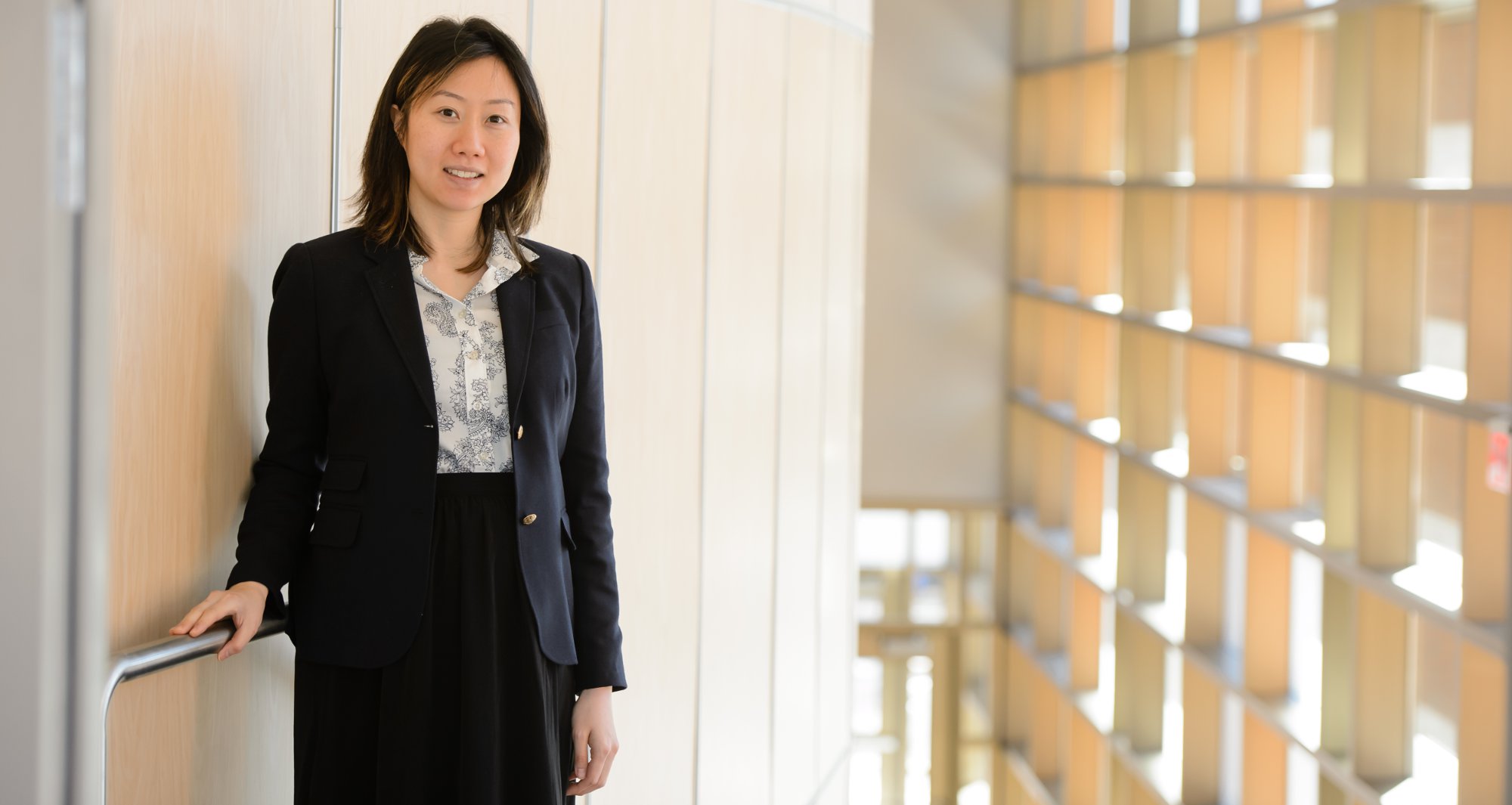
Sara Riggs, an assistant professor in the Department of Industrial Engineering, designs and tests systems in which we can’t trick ourselves.
A video popped up on my Facebook feed. Could I count the number of passes the basketball players wearing white made? I watched, and I counted. And I did not see the man in the gorilla suit march through players, beat his chest, and then stomp onward.
Called a “selective attention task,” this video meme began as a real-world experiment measuring human perceptual limitations. Derren Brown, a well-known British magician, gave a nod to the test in his stage magic show, Enigma, in which he used perceptual limitations to trick his willing audience. I missed the man in the gorilla suit that time too.
Sara Riggs, an assistant professor in the Department of Industrial Engineering, designs and tests systems in which we can’t trick ourselves. Her work in the field of cognitive ergonomics focuses on accounting for human cognitive and perceptual limitations, and developing displays that support people in various work environments.
“There’s a lot we have to take into account,” Riggs explains. “It’s actually very methodical in the way that we go about doing this, because it’s based on science, on findings from previous studies that inform how we go about doing things. We’re pulling from different studies, from multiple disciplines, including, but not limited to, psychology, engineering (e.g., industrial, systems), human-computer interaction, and ethnography.”
But what are the cognitive and perceptual limitations Riggs considers?
Well, for one thing, a human being can only viably process so much perceptual information at one time.
“For data overload, there is a threshold that may vary slightly from one person to another of how much visual information we can attend to at once,” Riggs says, “while also keeping it in working memory so that we can use it later on.”
This can be applied to auditory limitations as well. Over time it becomes easy to “tune out” repetitive sounds so that we can focus on the task at hand. But if the sound we tune out is the beep-beep-beep of a heart monitor, and that beeping flatlines without a doctor or nurse noticing, then that’s a case of a human limitation that could put a patient at risk.
“So we have to have the right attention, and if there’s a change, we have to be able to notice that,” Riggs says. “Based on our ability to perceive the world, we have certain limitations in how we can perceive it.”
Cognitive limitations can be categorized as biases or heuristics. As an example, Riggs cites confirmation bias, where a person starts out with a hypothesis and searches the environment for clues to support it. Confirmation bias exists because it has benefits. It’s a shortcut that speeds up the deduction process. But, Riggs says, “If you’re going in the wrong direction, this will work against you.
“That’s usually the purpose of these heuristics and biasesin terms of how we view the world,” Riggs continues. “Rather than processing all of the information and stimuli around us, we become more efficient. So this is something we have to take into consideration when we design displays, especially in terms of information and how information is presented: How do we account for these biases, these limitations, these heuristics, in terms of how people are perceiving the world around them?” Basically, where a stage magician will use our perceptions and cognitive limitations against us to create the illusion of magic, Riggs uses scientific data to flip that paradigm—so that we can make our limitations work for us.
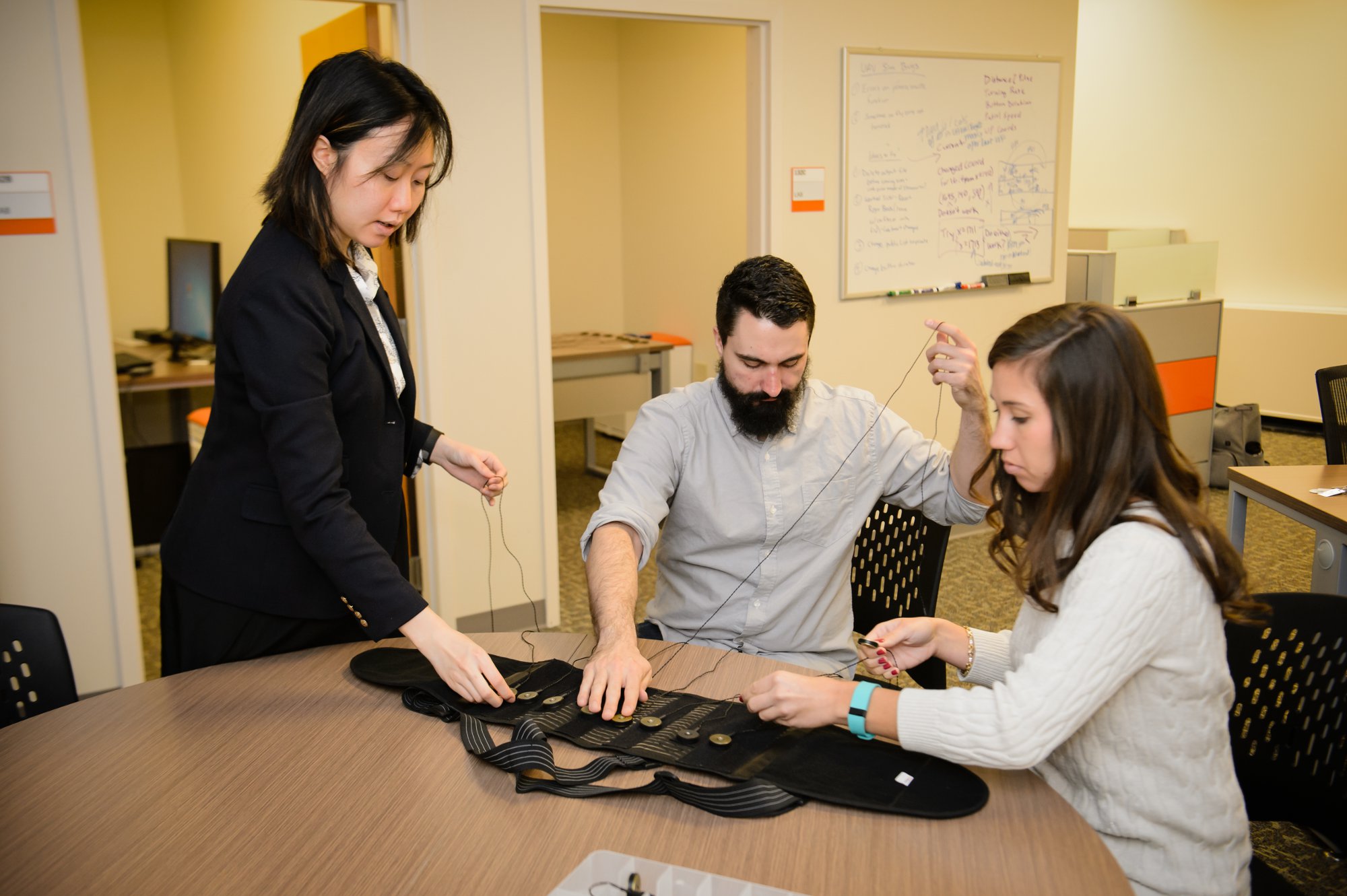
Riggs (left) works with students on a prototype of a vest that could help anesthesiologists save lives. The vest conveys information through the tactile channel, enabling quicker response times.
What do Boeing pilots, anesthesiologists, and military personnel have in common?
In high-stress environments, where a lapse puts lives at risk, how can we best present information so that the right decision is made at the right time? As technology multiplies and data maxes us out, designers must confront that question for the Boeing pilots, anesthesiologists, and military personnel of the future. Current state-of-the-art displays are visual and auditory, and an operating room, with its many beeping machines, screens, and readouts with zigzagging lines, is no exception. But a visual display must be watched. And an auditory alert affects everyone within hearing range.
Riggs proposes what might be an answer: a tactile display. With a tactile display, Riggs says, “You can create more or less private displays that don’t disrupt everyone.”
Having reviewed the literature, Riggs has developed a multidisciplinary team of computer scientists and industrial engineers to help the head of anesthesiology at the Medical University of South Carolina devise the future of anesthesiology. “What we’re planning on testing, just to see if it works,” Riggs says, “is a vest where we place a lot of these tactor devices so that a potential anesthesiologist in the future can wear it and get their information via the tactile channel.”
The tactors, similar to the technology that makes a cell phone buzz, are slightly larger than those in a mobile device, but they’re designed so that Riggs can manipulate more of their parameters. The tactors can provide information with a combination of three methods: amplitude, frequency, and pulse pattern.
“Just by manipulating those parameters, you can convey a lot of different information if you assign them appropriately,” Riggs says.
The vest itself would have similar parameters set for everyone—rather than every anesthesiologist being able to custom design their own—so that anesthesiologists could move from vest to vest with greater ease. The personalization would occur in an adjustable strength of stimuli, so that people of differing body types and sensitivities would be able to set the vest so that it buzzes at a comfortable level. Riggs says, “We’re trying to find a nice medium of how to individualize this but keep it consistent so that if we go from one operating room to another there isn’t confusion as to ‘what do these tactile stimuli mean?’”
When asked about the prototype’s first trial, Riggs admits, “I’m kind of a guinea pig in terms of when my students are testing these things. I’m pretty active in the lab.”
In order to test the vest, Riggs and her students will create a mock-up operating room, bring in participants, train them on the task, and then ask them to perform that task (a) with the current state of technology vs. (b) with the new technology they’re testing. Participants, whether they’re pilots or lit majors, have similar perceptual and cognitive limitations, so Riggs intends to start them out with doing a simplified version of what an anesthesiologist would do before bringing an actual anesthesiologist. Once they get to that stage, Riggs will be able to present a very polished product.
Right now, Riggs nears the end of a different study. She’s working on displays for military personnel to control unmanned aerial vehicles (UAVs). Currently it takes three people to monitor one UAV: They watch its status, reroute as necessary, and respond to chat messages. But the military’s grand vision is to have one person monitoring up to nine UAVs.
“If you want to talk about data overload, that’s a prime example,” Riggs says. “So the challenge is how we can best support the operators so that they are best able to do that.”
In Riggs’s UAV experiment, one person tracks the health status and chat messages, and reroutes sixteen UAVs. “So it’s a lot of tasks,” Riggs says, which to me sounds like an understatement. But, she says, skilled gamers have one up on the rest of us and find this level of multitasking relatively straightforward.
Working under the assumption that most people must look at a display to engage with it, Riggs uses an eye tracker to determine how people juggle these UAVs. The eye tracker not only collects data on where people look and for how long, but it can also provide insights on participant accuracy and response times. After the participants have taken part, Riggs debriefs them to discuss what their strategy was when managing these sixteen UAVs. Soon Riggs will be analyzing the data and the participant feedback to understand how her proposed design worked.
Previously, Riggs worked with Boeing pilots on designing next-generation cockpits. Current technology is still radar-based, and the industry would prefer to shift that to satellite-based information that can show real-time changes regarding weather data, for example. Riggs found tactile displays could convey information—though less information than visual or auditory displays, which can convey language, because there is no tactile language. Yet most importantly, she also discovered that, “the response times in the tactile channel can trump that to auditory and visual.”
In high-stress environments, when a split-second decision determines life or death, that could be a critical finding indeed. Work continues in determining which sensory channel should be used to convey what information. Riggs will be “using a sense of touch to augment visual and auditory displays, which are state of the art for most environments now, and honing in on the benefits of a sense of touch to convey different types of information in the most appropriate manner.”
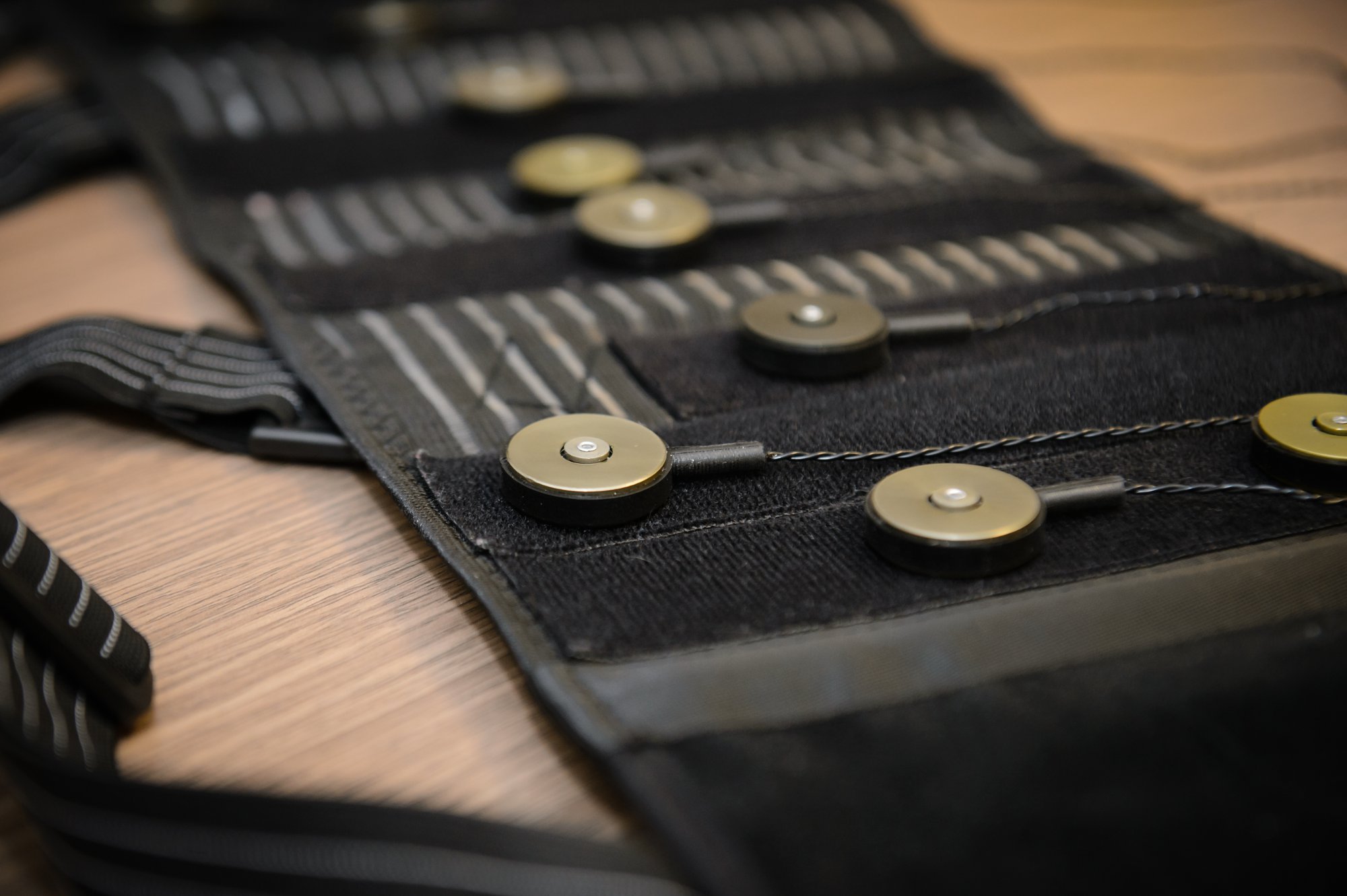
This tactor, similar to the technology that makes a cell phone buzz, is designed so that Riggs can manipulate parameters like amplitude, frequency, and pulse pattern.
Bridging the boundaries between scientific disciplines, man, and machine
“The main part of being an engineer is fixing a problem,” Riggs says. But these days, the multifaceted problems of our increasingly technology-dependent culture aren’t something that one person can tackle alone. They require a team from multiple disciplines and across many agencies.
Riggs seeks “collaborations with external funding agencies outside the university.” Her anesthesiology project works in combination with the Medical University of South Carolina. Her UAV project receives military funding. NASA and the FAA actively look for academic partners to work with them on the future of aviation.
Then there are the teams that Riggs puts together. The anesthesiology project, for example, draws on the expertise of computer scientists, industrial engineers, and medical professionals. As Riggs says, each experiment is “a combination of science and technology.”
The experiments themselves draw on previous studies in multiple disciplines. Controlling for variables in each experiment requires a regimented process and methodical procedures, so that Riggs can be sure they’re testing the variable they wish to test.
“Getting all of the pieces to come together can be a hurdle,” Riggs says. “But I feel at the end of the day that’s very rewarding.”
What Riggs is searching for from all of these experiments is information that’s applicable to more than one domain. Whether it’s telemedicine in the ICU environment or monitoring UAVs, Riggs wants to extract principles.
As technology becomes more and more complex, more scientists like Riggs will be working to determine the best interfaces to bridge the gap between man and machine. Riggs says that her experiments give her “hope that my work will solve the lingering questions that will need to be addressed in a future with the advent of new technology.”
Whether it’s in the operating room or in a cockpit, it’s guaranteed our future selves will be processing and picking out patterns from more data than ever before. With personalized signals sent to each individual, we’ll respond faster than ever to real-time, changing situations. It’ll be so intuitive, so easy, it’ll look like sleight of hand—but only because it’ll be designed by science to take advantage of human limitations.
A Clemson scientist and his family spend three months exploring the Appalachian Mountains — for the sake of conservation.
By defining the large, interconnected areas necessary to protect current and future biodiversity, Baldwin’s science can help local groups take action to hedge against these future uncertainties.
During his distinguished career as a conservation scientist, Rob Baldwin had hiked in the wilderness many times and savored the wonders of nature firsthand. But nothing he had ever experienced rivaled this.
On a flawless day in early fall, Baldwin stood motionless on the peak of a mountain in Quebec and reveled in the beauty of his surroundings. The sky—so perfect it lacked even the slightest wisp of cloud—arced around him like a deep blue dome. The crisp air felt enchantingly hushed, as if it too were in awe. A herd of antlered caribou surrounded him, heedless of his presence.
Baldwin knew that moments like these were rare and regretfully brief. If you overstayed your welcome, they lost their allure. So he left the mountaintop and slowly wound his way downward among a jumble of ancient boulders. Even then his wonder lingered, like dust on a well-worn jacket. When he finally reached his campsite, his family greeted him.
“Where’ve you been for so long?” his wife said. “The kids and I were worried.”
Baldwin had no answer, other than to smile.
A journey to remember
Baldwin, an associate professor of conservation biology and geographical information systems, has spent much of his career studying the fragmentation of wildlife habitats in North America. Because of this splintering—caused largely by human development such as cities, roads, and farms—many animals have lost their freedom to roam within and between their natural ranges. This disturbing lack of mobility and resulting inability to intermingle has had a devastating effect on a plethora of species. One of Baldwin’s more important avenues of research has been working with colleague Paul Leonard to redesign and enhance state-of-the-art habitat connectivity maps that can be paired with satellite imagery to display corridors that could be used by animal populations. These maps provide public and private decision makers with highly detailed information about what areas are more valuable than others when it comes to reestablishing and fortifying these essential passageways.
In a recently published research article, “Interacting Social and Environmental Predictors for the Spatial Distribution of Conservation Lands,” joint authors Baldwin and Leonard examine the existing distribution of conservation easements in the Appalachians. This ancient series of mountains, which extends from Alabama to northeastern Canada before plunging into the Atlantic Ocean and resurfacing in parts of Europe and Africa, has a long and complex history of human development and land use. Though relatively large swaths of the mountains and surrounding valleys are owned by the government and therefore publicly protected, the majority of the land is privately owned, especially in the lower elevations.
Because of this, conservation easements are extremely important. These legally binding restrictions, which are placed on pieces of private property to protect the lands for future generations, are either voluntarily donated or sold by landowners.
“Is the distribution of these easements driven by social factors, such as how people feel about the land?” Baldwin and Leonard ask. “Or is it driven by environmental factors? In our article, we concluded that it is more driven by social factors. We think people protect land that they know and love.”
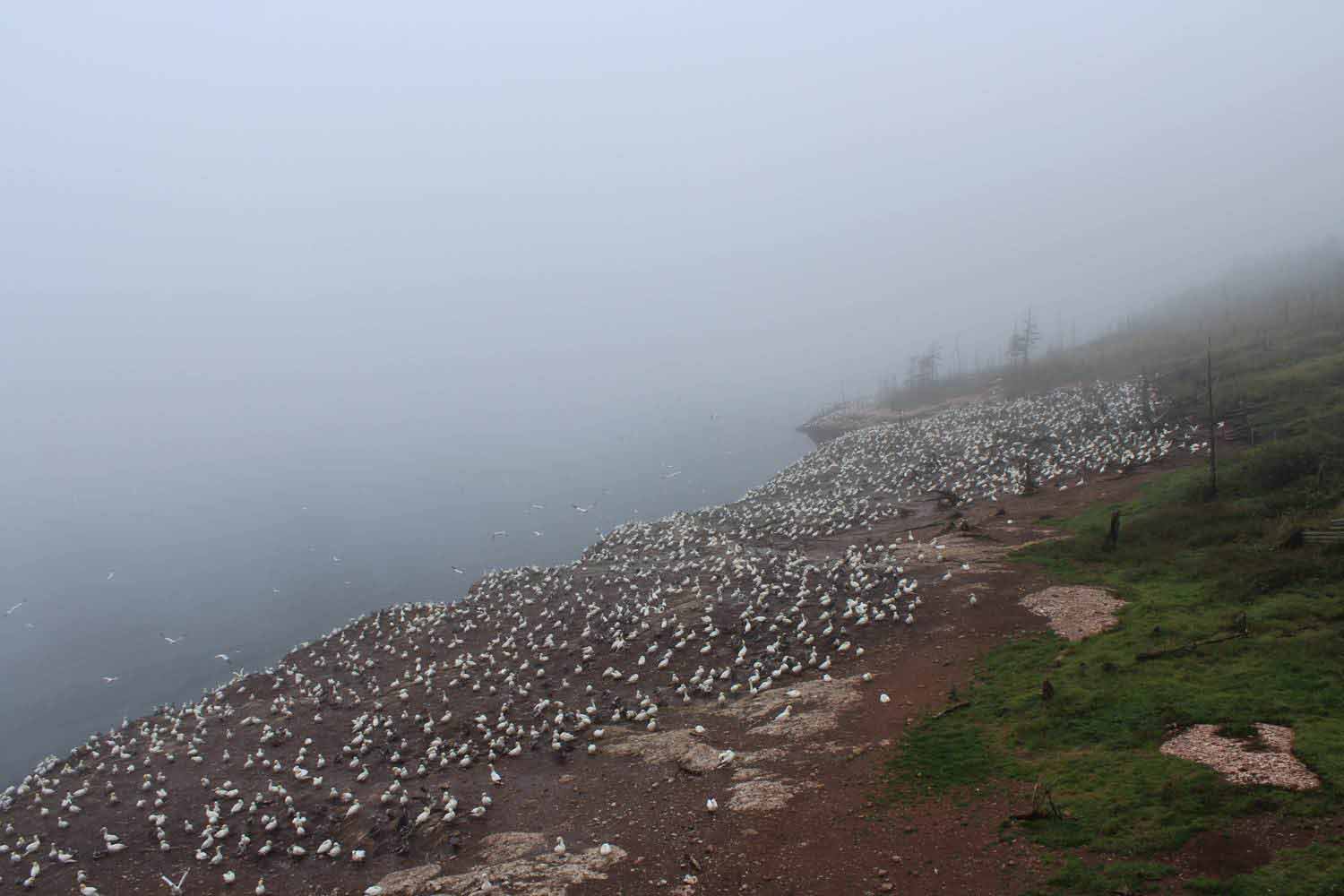
On Isle de Bonaventure in Quebec, conservationists founded a project in the early twentieth century to protect these seabirds from egg predation.
Baldwin has been doing research on the article for years. And in September 2013, he and his family began a months-long sabbatical to test his theories in an experiential manner. Their objective? To travel virtually the entire length of the Appalachians, starting in Canada. Along the way, they would camp in a tent, explore as much of the land as time allowed, and meet with local conservationists.
“I just wanted to get on the ground,” Baldwin says. “I sit here in my office and map the stuff at 33,000 feet, and I wanted to get out there and see the people who are interested in these maps and talk to the decision makers who are using them.” Baldwin chose the Appalachians because he views them as the unifying element for conservation in the eastern United States.
“My wife Betty is also an associate professor at Clemson who focuses on the people side of conservation, so we organized our sabbaticals to start at the same time,” Baldwin says. “We had to spend the summer planning because we were going to camp every night. And we also had to do a lot of planning with our kids, because we were going to homeschool them along the way. There was a lot of prep work, to say the least. But finally, we jumped in the car and headed north.”
Cape Breton, Nova Scotia
On September 3, 2013, Rob, Betty, Ella and Julian (thirteen and seven at the time) arrived at Cape Breton, Nova Scotia, where they pitched their tent—affectionately called Big Agnes—on a high, cold plateau with wide-ranging views of the Atlantic Ocean. Cape Breton is home to a national park that stretches from one side of the island to the other.
“We camped in this spectacular high country,” Baldwin says. “And we could look out over the mountains right down to the ocean, where there were pods of pilot whales in the waves—and in the foreground, a moose. And we would hike down to the shore and just sit silently and watch.”
Most of the land in Nova Scotia is owned or leased by private timber companies, which feed their mills with the forests. The people who live there view these companies with a mixture of distrust and acceptance. Only about 12 percent of Nova Scotia is publicly owned and protected, but the province’s citizens have voted to require the government to increase that total to the global target of 17 percent. As you might imagine, the wheeling and dealing necessary to achieve such a goal can be complicated. While in Nova Scotia, Baldwin met with a pair of conservationists— David McKinnon and Peter Bush—who were using habitat corridor and biodiversity maps to prioritize which lands offered the maximum benefits.
“The overall purpose of the trip, for me, was to look at the theme of ‘How does conservation happen?’” Baldwin says. “And on my first stop, I encountered a classic example. Conservationists were working directly with private landowners, who in return would often provide valuable information. The landowners would say, ‘We haven’t cut that stand of trees for a hundred and fifty years. You should go look at that. We’re willing to do a deal, but we really want to keep this area over here because we’ve invested a lot in it.’ So they are making compromises in Nova Scotia that are really practical, while also satisfying the needs of the public who want more land for outdoor recreation.”
Gaspé Peninsula, Quebec
After spending about a week in Cape Breton, the family traveled across the environmentally fragile Chignecto Isthmus to the Gaspé Peninsula in eastern Quebec, where Baldwin had his transformative encounter with the caribou.
Like its sister province, Quebec also has an influential timber industry. But a much larger percentage of the land is publicly owned. Canadians, as a whole, adore the outdoors, and the colder it gets, the more they want to commune with nature. Cross-country skiers, including young children, will ski from hut to hut on the peaks of ragged mountains in eight feet of snow when it’s 20 degrees below zero.
“We saw one young couple biking three hundred miles around the peninsula in the rain and cold while towing their baby behind them,” Baldwin says. “And here we were driving.” He chuckled. “It made us feel really slack.”
Baldwin and his family set up camp in Forillon National Park, which is located at the outer tip of the peninsula. The managers of the spectacular park impressed Baldwin with their enthusiasm and diligence, but he found that not all was positive about this remote area of the world.
“Forillon is very isolated, and they do a really nice job there of education and conservation. There isn’t much private land activity going on up there. And this is true of Quebec, as a whole,” Baldwin says. “But there’s an enormous amount of provincial land, which is owned by the province and leased to timber companies. And there are very few people. The timber companies don’t do a beauty strip alongside the road. They just harvest for miles. There’s a lot of controversy about its effects on the environment. But some wildlife do benefit, particularly those that like early succession.”
While in Forillon, the family stood within a stone’s throw of black bears gorging on mountain ash berries. Two months later, they watched another population of bears eating the same type of berries in the Smoky Mountains.
“We were in Canada in early September watching bears eat the berries,” Baldwin says. “Scroll forward about two months, and we saw the same thing hundreds of miles south. It shows the ecological affinities at both ends of the Appalachians.”
Julian became fascinated with finding the colorful piles of mountain ash scat.
Parc National de la Gaspésie, Quebec
Their final stop in Canada was at Parc National de la Gaspésie, a provincial park that is near enough to Montreal and Quebec City to be a popular outdoor destination for those urban folk. The park has several core wilderness areas, but it also has more than its share of logging. Baldwin was relieved to find that the multiple uses were managed according to a regional conservation and recreation plan.
In the winter, snow falls so heavily that trail markers have to be placed atop ten-foot poles, but the harsh conditions don’t stop a small but viable population of woodland caribou from thriving there.
Throughout the Appalachians, we need to take the threat of rapid-onset climate change due to human-released carbon dioxide very seriously. The experience I had with the caribou may not be one my grandchildren can have.
“Up in Canada, the mountains are smaller than in the southern Appalachians, only about four thousand feet in the Chic-Chocs compared with six thousand and above in the Smoky Mountains near Clemson,” Baldwin says. “But in these relatively small mountains, you get tree lines. And that’s where the caribou are—above the tree line. This was another interesting parallel with the southern Apps, where elk have been reintroduced. At both ends of the spectrum, we have large mammals attempting to thrive. We have thousands of people enjoying the wilderness. We have multiple uses: timber harvest, trapping, recreation. To me, that’s a very hopeful scenario.
By defining the large, interconnected areas necessary to protect current and future biodiversity, Baldwin’s science can help local groups take action to hedge against these future uncertainties.
“Still, there is a sobering reality,” Baldwin continues. “Climate change will ultimately influence those high, fragile ecosystems first and most severely. Throughout the Appalachians, we need to take the threat of rapid-onset climate change due to human-released carbon dioxide very seriously. The experience I had with the caribou may not be one my grandchildren can have. Or, for that matter, finding fir and spruce on the tops of the Smoky Mountains.”
By defining the large, interconnected areas necessary to protect current and future biodiversity, Baldwin’s science can help local groups take action to hedge against these future uncertainties.
Surry, Maine
After several weeks of camping in the cold dampness of Canada, Baldwin and his family were pleased to return to the United States and sleep in real beds in his home state of Maine. Here, they gave Big Agnes a brief respite while they stayed with members of Baldwin’s family in Surry, a small town about 45 minutes south of the University of Maine.
During his stay in the state where he was raised and educated, Baldwin met with a pair of his longtime friends, Malcolm Hunter and Aram Calhoun, who are renowned conservation scientists.
Hunter and Calhoun provided another interesting example of public and private conservation collaboration. For most of their adult lives, they had worked to protect thousands of acres of privately owned land. Together, they helped broker deals with state government and private industry officials to strategically arrange a series of easements and public lands designed to reduce the land’s environmental vulnerability and enhance its habitat corridors.
“They’ve used their influence as well-known scientists to piece together this huge project that happens to be an area of high biodiversity,” Baldwin says. “So we went to their house and walked some of the land with them and talked about what motivated them to do this work. And Mac, who has been a professor at the University of Maine for about thirty years, said he started to work on it back in the ’80s because he loved the place. As he hiked there, he realized that few people knew or cared about these hills and wetlands in Down East Maine.”
Big changes in land ownership patterns began to occur in the late 1980s and continued through the 2000s, with big timber companies entering the real estate business by selling lucrative parcels of pristine wilderness land. In many areas of the United States, mansion-sized vacation homes were being built next to ponds and rivers and on the tops of ridges. An important habitat corridor connecting coastal and mountain forests was literally in Calhoun and Hunter’s backyard. But because of their diligence, the majority of the land is now protected.
“They managed some tricky political maneuvering, informed the state legislature, put out a lot of publicity, and, most importantly, got the major players together at the same table,” Baldwin says. “Some of the timber companies were interested because of sound management plans that were already in place. That’s what a lot of big timber companies are moving toward: ‘How can we make conservation part of our bottom line?’ They aren’t willing to do it on all their lands. But there are some places that they know are important ecologically and that they want to protect. And this gives them a viable reason to do this from a corporate point of view. In the United States, more than 80 percent of the land is in private hands. Conservation cannot progress without landowners who are engaged.”
Northern Vermont
After saying goodbye to his relatives, Baldwin and his family went to Vermont, a small but vibrant state with a spirited history of public engagement in conservation. In many ways, the area’s economy is linked to its natural beauty.
They stayed in several state parks and were pleased to see evidence of conservation everywhere. There was an extreme public consciousness and sensitivity about the land, with an extra emphasis on locally produced foods and other products.
“I was sitting in a coffee shop in Middlebury and a guy walked in with this giant mushroom called ‘chicken of the woods,’” Baldwin says. “And he sat there while I was drinking coffee and negotiated with the coffee shop owner, who ended up buying it on the spot for three hundred bucks. ‘Chicken of the woods’ mushrooms only grow in mature hardwood forests. And so it was interesting to learn that the people of Vermont were wild harvesting and making significant money.”
Baldwin visited with Nancy Patch, a county forester who works extensively with landowners in northern Vermont. Using habitat connectivity maps that Baldwin helped create, Patch has been, well, patching together a corridor between northern Vermont and Canada.
“When I make these maps, there’s a part of me that’s always thinking, ‘Does anyone really use them?’” Baldwin says. “So I was excited when Nancy called up a map on her computer screen, and it was one that I had worked on with a doctoral student, Ryan Perkl, at Clemson.”
Another Vermont conservation scientist named Sue Morse has been training landowners and volunteers to hike into the wilderness to identify and report animal tracks. This has resulted in a vast database of movement habits.
“So you have this army of people tracking lynx, bobcat, coyote, and bear. And everyone wants to be the one to find the wolf track,” Baldwin says. “And Sue connects them with the animals. She has the world’s largest traveling collection of pelts from mountain lions, wolves, and grizzlies. And she has skulls and skeletons that she lets the kids look at and pick up. To me, that’s where a love for conservation begins, when you can get someone to actually care.”
The Adirondacks
After their stay in Vermont, the Baldwins left the Appalachians for the first time and headed across Lake Champlain to the Adirondacks, a ring of remote mountains in northern New York. There they spent five days exploring vast blocks of the largest wilderness area in the eastern United States.
“We saw extreme, shocking poverty in those mountains,” Baldwin says. “You’ll have one really affluent town like Lake Placid. And then twenty miles away you’ll have a town where literally only one out of every ten storefronts is open. This is a huge, thinly populated area. They’re talking about wolves showing up in the Adirondacks from Canada, and there is a lot of other wildlife, as well.”
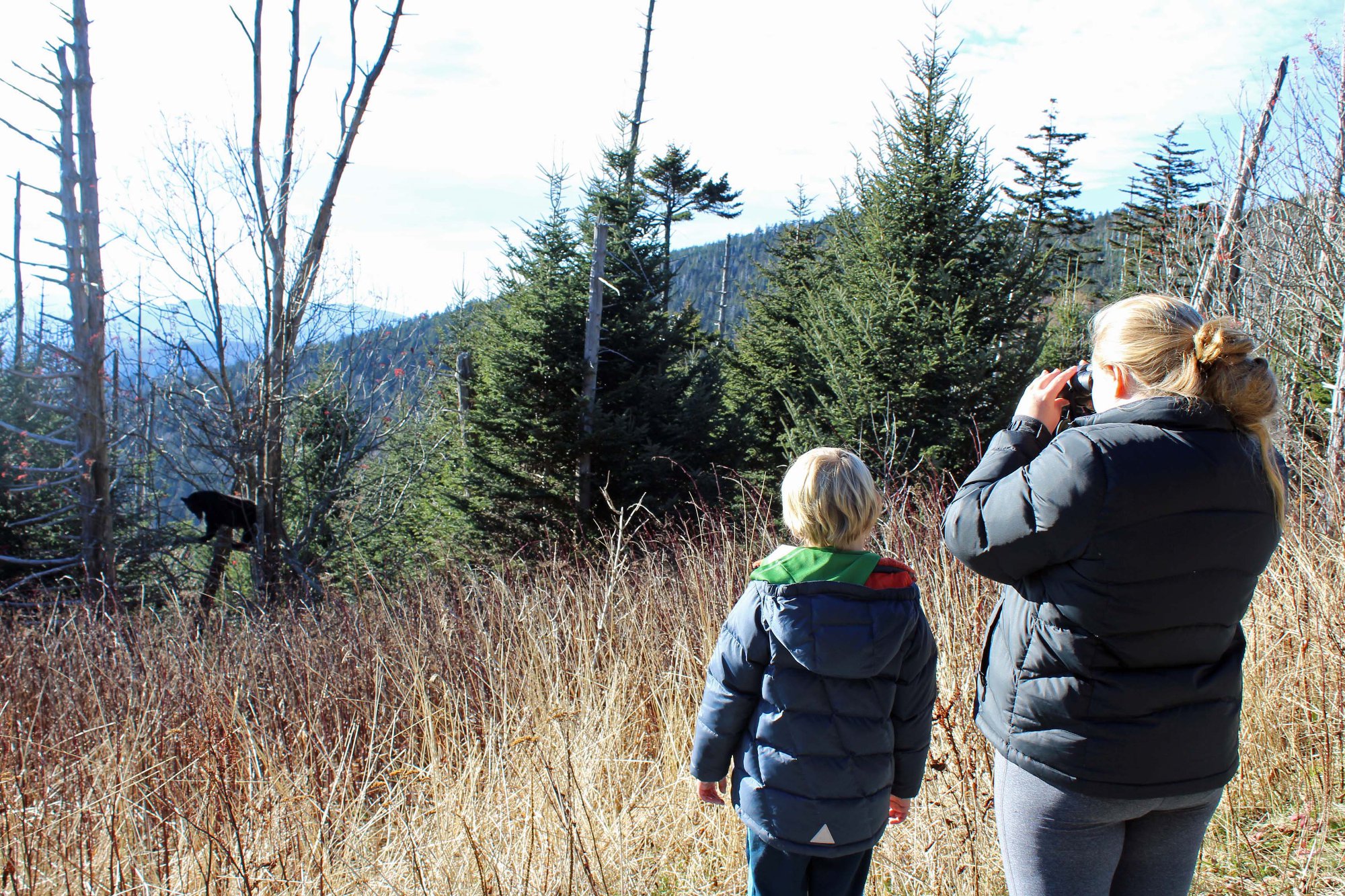
While in Forillon, the family stood within a stone’s throw of black bears gorging on mountain ash berries. Two months later, they watched another population of bears eating the same type of berries in the Smoky Mountains.
Western Massachusetts
The family left the deep wilderness behind and traveled to western Massachusetts, which, like Vermont, is also intensely committed to local conservation. The state contains thousands of easements that have been cleverly arranged to protect habitats over large areas. And more importantly, most of the easements are well managed.
“A problem with easements is making sure they are monitored and protected. And this takes money,” Baldwin says. “So people in Massachusetts had some great ideas about how to generate this money. For instance, they’re putting small sawmills on the easements that are selectively harvesting high-value trees. Then they are selling them as local lumber and using those funds to support the management of the easements.”
The family spent a week in western Massachusetts and was impressed by how passionate its residents were about preserving the state’s natural splendor. Baldwin described the area as “ground zero” for conservation planning.
“For many years, they have had programs to help salamanders cross roads when they’re migrating in the spring,” Baldwin says. “The local citizens go out in the middle of the night in a rainstorm and fill buckets with frogs and salamanders on one side of the road and move them to the other side. When I talk to my students about this here at Clemson, it always seems to blow them away. Education filters into the community—and then people think, ‘Oh, this is something we should do.’”
Hawk Mountain
The family next drove to Hawk Mountain Sanctuary, an international center for raptor conservation, observation, and research located along the Appalachian flyway in eastern Pennsylvania. The sanctuary has been a hawk-migration monitoring site since the 1930s.
“Hawk Mountain is an example of interpretation that reminds us why conservation is important to us as humans,” Betty Baldwin says. “They use art and information to help visitors of all ages explore why the mountain serves as a funnel for raptors on the eastern edge of North America—and also where it fits into conservation on a global scale.”
The Blue Ridge Parkway
The family then drove down through Virginia along the Blue Ridge Parkway in the southern Appalachians. Baldwin met with several colleagues during this part of the trip, including Jeff Walters, an ecology and conservation biologist at Virginia Tech.
“Jeff has worked with endangered species management a lot, and he believes that scientists need to provide relevant information and let the policy makers make the decisions,” Baldwin says. “This is not something I entirely agree with. I think we need to be a little bit more involved. We need to provide sound information and, when necessary, advocate for the use of that information. You can’t just hand them a piece of paper.”
The Smoky Mountains
It was now late November, and the long journey was nearing its end. The family was weary but also brimming with wonderful memories. But one final stop remained—the Smoky Mountains, where Rob had proposed to Betty twenty-five years ago. So being there with their kids made the visit extra special.
They stayed a week at Cade’s Cove, a verdant valley that is one of the Smokies’ most popular destinations.
“We did a bunch of hikes,” Baldwin says. “And then we spent a couple of days at Oconaluftee Valley observing the elk. These huge animals are surprisingly approachable. But this also causes problems. Some tourists are too bold and are getting injured.”
Chattanooga
After leaving the Smokies, Betty, Julian, and Ella returned to their home in Clemson. But Baldwin wanted to make one final trip on his own. So he went to the University of Tennessee at Chattanooga to meet with Andy Carroll, the GIS manager for the Center of Academic and Innovative Technologies.
“Andy and I drove down Lookout Mountain, which looms over the valley of the Tennessee River where there had been battles during the Civil War,” Baldwin says. “And Andy described how conservationists around Chattanooga are achieving complementary goals by protecting historical sites that also serve as habitat corridors. This reinforced the main thing I learned from the sabbatical: The more reasons you have to conserve a place, the more likely it’s going to happen. People are connected to the lands. Emotions can get them to take out their checkbooks.”
Baldwin is writing a book about his research. The mountains he learned to know and love so well will play a major role in his story.
“My family and I—and Betty and I, as professionals—brought back to Clemson an experiential perspective on people and the land,” Baldwin concludes. “And it continues to influence how we teach and communicate research. It’s naïve for academics to think our research will do much in the world unless we are willing to reach out to the people and places we are writing about. Betty takes busloads of students around the region. I spend a lot of time explaining conservation science to local conservationists from here to Maine.”
In researching the causes of autism, scientists hope to give a community new options
Clemson University researchers combine science and detective work as they piece together clues, cell by cell, to solve a genetic puzzle behind an increasingly common disorder that alters a child’s social interactions, behavior, emotions, and learning.
Autism Spectrum Disorder (ASD) affects one in every sixty-eight children in the U.S., according to the Centers for Disease Control, yet its cause remains shrouded in myth and mystery. ASD is five times more prevalent in males than females, and is found across all class and ethnic lines. And the numbers are on the rise, the CDC reports.
Public awareness of the autism spectrum is growing. A boy with Asperger’s syndrome, a form of autism, was a main character in NBC’s hit show Parenthood. A recent New York Times article alludes to numerous well-known personalities possibly being “on the spectrum.” At the same time, misunderstandings of the various disorders that fall under the umbrella of ASD abound. The South Carolina Autism Society has a webpage to rebut the myths: Autism is a developmental disorder; it is not a mental illness. These are not unruly kids who choose to misbehave. And autism is not caused by bad parenting.
We don’t know exactly what causes autism. And we don’t know why we’re seeing more of it. It could be solely due to greater awareness and better diagnosis. However, the CDC doesn’t rule out the possibility that there’s something more behind the increasing number of people with ASD.
By discovering the causes, researchers at Clemson University and the Greenwood Genetic Center hope to develop more definitive diagnostic tools and biologically specific treatment, says Kevin Champaigne, a research assistant professor of bioengineering. Champaigne is one of several Clemson researchers working with Greenwood Genetic Center scientists and clinicians to delve into the mystery of ASD.
“We are trying to investigate differences at the cellular level that are part of ASD,” Champaigne says. “If we can discover the differences between cell lines of children with ASD and typically developing children, we might be able to develop a diagnostic test or a treatment and potentially understand the underlying cause.” One difference is in the utilization of tryptophan, an essential amino acid in the human diet found in foods ranging from turkey to chocolate. Researchers exposed cell lines from children with and without ASD to various energy sources. When tryptophan was the only energy source provided, cells from patients with ASD showed a lower metabolic rate, Champaigne says. The researchers want to know why.
Perhaps a molecular defect affects tryptophan utilization, says Chin-Fu Chen, an assistant research scientist at Greenwood Genetic Center who works with Champaigne.
The team also includes Delphine Dean, Clemson’s Gregg-Graniteville Associate Professor of bioengineering; Greenwood Genetic Center faculty member Luigi Boccuto, an assistant research scientist who heads the team; and Charles Schwartz, research director at the center. They make up one of five multidisciplinary research teams, composed of Clemson and Greenwood Genetic Center scientists and clinicians, conducting studies related to autism.
A complicated condition
Unlocking the mystery behind the genetic disorder “is a critical challenge that can improve the lives of patients and their families,” Boccuto says.
Advocates for people with ASD point out that autism is not always a problem in need of a cure. For some, autism endows special gifts of intellect or creativity. Many individuals, and their families, are simply happy with themselves as they are. But for others, ASD impairs basic function. So there is no one-size-fits-all approach to diagnosis and treatment, researchers say. Yet everyone seems to agree that we need more research to understand ASD’s causes and to offer better options for helping people on the spectrum function in their families, their schools, and their society.
Why do the cells from patients with ASD metabolize tryptophan differently? One area of interest is mitochondrial function, which has been associated with ASD in multiple studies, Champaigne says. Mitochondria are the powerhouse of the cell. They provide energy and regulate the cellular metabolism. The researchers want to know if mitochondria play any role.
“If we can understand the mechanism and learn whether it is related to diet and nutrition, environment, genetics, or a combination of those factors, we may be able to reduce the prevalence of ASD,” Champaigne says.
Everyone seems to agree that we need more research to understand ASD’s causes and to offer better options for helping people on the spectrum function in their families, their schools, and their society.
Understanding why patients with ASD use tryptophan less efficiently could lead to new treatments, Schwartz says, and it also could lead to a diagnostic blood test. First researchers must learn whether the difference is specific to patients with ASD or if it shows up in patients with other developmental disorders, such as ADHD. If it’s consistent only in patients with ASD, the difference could be used as a biological marker in the development of a blood test to give doctors a more definitive diagnostic tool and identify at-risk children earlier in life, Schwartz says.
Several of the teams are working toward development of a blood test, and for good reason.
“Most of the time diagnoses now are based on behavior. If we can detect indications based on the metabolic signs, it should have an impact in earlier diagnosis and treatment,” says Anand Srivastava, a senior research scientist and associate director of the Center for Molecular Studies at the Greenwood Genetic Center and an adjunct professor of genetics and biochemistry.
The earlier treatment starts the more effective the intervention can be, and that has a lifelong effect on the patient, says Feng Luo, an associate professor in Clemson’s School of Computing, who is a part of the research team headed by Srivastava.
In order to understand the mechanism that causes ASD, the researchers have examined hundreds of metabolites—small molecules in the cell tissue, such as lipids, nucleotides, carbohydrates, and amino acids—and have identified more than twenty-five metabolites that differ in children with ASD compared with typically developing children, Srivastava says. These metabolic differences also could be used as potential biomarkers in development of a blood test.
Srivastava is after another big piece of the puzzle as well: Are the metabolic differences caused by ASD, or do they cause ASD? Srivastava wants to know, he says, because “If it is causing ASD, then researchers could be on the road to preventing ASD.”
Srivastava and his coinvestigators Luo and Liangjiang Wang, an associate professor of genetics and biochemistry, also are trying to capture disturbances in ASD at the transcription level. The team is elucidating contributions of long noncoding RNA genes and protein-coding genes in ASD to better understand the pathogenesis of ASD and to identify biomarkers for ASD.
Understanding toxic stress
Toxicologist Bill Baldwin, a professor of biological sciences at Clemson, suspects that exposure to chemicals in the environment or a poor diet plays a role in the increased occurrence of ASD. Baldwin and biological sciences professor Charles D. Rice, along with Boccuto and Schwartz, are comparing cells of autistic patients with a control group to see if toxic chemicals figure into the altered metabolism of tryptophan.
Baldwin’s starting point is the work Schwartz has done on differences in metabolizing tryptophan. Tryptophan makes NAD and NADH, which are part of the electron transport chain and carry electrons needed to make the high-energy molecule ATP in our bodies, Baldwin explains. The process occurs in the mitochondria. Baldwin is investigating whether a toxic component is obstructing mitochondrial function.
Toxic chemicals contribute to rising rates of other conditions, including obesity and reproductive disease in males, so perhaps a toxic component is interacting with genetics to fuel the increase in ASD, Baldwin says.
“The person who has autism probably has a genetic defect, but if it wasn’t for exposure to a toxic chemical or a really poor diet, this autism may not show,” Baldwin says.
If successful, this would open the door to new research that could offer a new level of treatment for patients with ASD.
Baldwin wants to find out if mitochondria are more sensitive in patients with autism than in other individuals. The research team has isolated cell lines from seventeen patients. First, they’re comparing the sensitivity of the cells of patients with ASD to those without ASD. Next, they’ll add toxicants to the cells to see whether mitochondria of cells of patients with ASD are more sensitive to the oxidative stress caused by substances ranging from polyunsaturated fats in our diet to toxic chemicals in the environment, Baldwin says.
If oxidative stress is a factor, “maybe changes can be made in the patient’s diet or in pregnant and breastfeeding mothers’ diets,” Baldwin says. “Perhaps certain antioxidants can be added to the diet to provide more protection.” This “may not get rid of autism but certainly can help the patients and the families that are susceptible to autism.”
Modi Wetzler’s work is slightly different. Wetzler, a research assistant professor of chemistry, is interested in brain development, synapses, and a substance called N-modified creatine. He is working with Sue Chapman, an associate professor of biological sciences, and Schwartz on a project aimed at treating an X-linked intellectual disability with autistic features, not autism itself.
About 1 percent of Americans suffer from X-linked intellectual disabilities. The team is studying a specific X-linked problem, called creatine transporter deficiency, that affects an estimated 50,000 Americans, Wetzler says. Creatine, an amino acid that provides the burst of energy needed for the cell to do its job, can’t get from the bloodstream to the brain in individuals with this deficiency. Protein transporters aren’t able to carry it across the blood-brain barrier.
“If you could make a substance that mimics creatine that can cross the blood-brain barrier by itself instead of having to be carried by a transporter, then you could treat the underlying cause of the intellectual disability as opposed to treating just the symptoms with medication such as mood-altering drugs,” Wetzler says.
Although the idea isn’t new, the Clemson and Greenwood Genetic Center researchers are using a different approach that is currently in the patenting process.
“Historically there is basically no treatment of any X-linked intellectual disability. Instead of treating the cause, they treat the symptoms with medications not related to the intellectual disability. It improves the manageability and quality of life for the patient and caretakers, but you aren’t treating the underlying cause of the disability,” Wetzler says.
The various collaborative studies of cellular differences and mitochondrial function could open up enormous possibilities for treating ASD, Schwartz says.
He envisions development of a treatment that can be applied to the patient’s cells to normalize them, just as insulin helps diabetic patients normalize their blood sugar levels or blood pressure medications help regulate patients with high blood pressure.
“If successful, this would open the door to new research that could offer a new level of treatment for patients with ASD,” Schwartz says.
By the time Anthony Bernarducci sits down at the keyboard, he’s already received the commission. Sometimes the request is more practical, a specific request, usually a capella, choir accompanied by piano, or occasionally even orchestral. Sometimes he’s asked to put a particular text to music, or sometimes he’s given a more open-ended commission.
With that sparking him, Bernarducci begins his research. For secular pieces, he’ll search public domain poetry, mumbling through it to sound the words aloud. He wants something easy, musical, but not too wordy. He wants to avoid cases where the diction is too harsh to set to music. For sacred texts, Bernarducci looks for pieces that are well known enough in the choral community to be familiar but haven’t been overused.
“Like ‘Ave Maria,’” Bernarducci says.
Bernarducci’s love of composition began at age twelve or thirteen, he says, when his parents gave him a Yamaha keyboard. He played with recording beats and experimented with sounds while taking lessons, emulating pieces he liked to discover his own unique style.
As an undergrad, he attended Westminster Choir College, where he immersed himself in the choral world. His undergraduate degree, he says, was both grueling and competitive. “You’re not only learning how to be an expert on an instrument, which can be quite a task, but you’re also learning music theory, music history, and you’re studying general education.”
After completing a master’s degree in conducting at the University of Arizona, he went on to teach high school. There he wrote his first composition, “Stepping Through.” It’s still performed every year. Even though the students may no longer know him, his music still creates a buzz and emotional response. “The idea of the piece,” Bernarducci says, “reaching that moment where you get to sing it at the graduation ceremony, still resonates with them.
“As an educator and as a conductor, I feel like I have an advantage when I compose for a choir,” Bernarducci says, “because I can always try to think about the educational value of a piece of music, what can be drawn from it in a classroom, and as I’m writing I’m also thinking about ranges, and I’m thinking about how the singers are going to find their pitches in this entrance or what leaps or skips might be easily done or not easily done.”
Bernaducci tries to balance his music, making it attainable and yet having sections that singers may need to spend more time with. He thinks about what he’d pick if he were to teach it, why he’d pick it, and what singers can gain from singing a piece. “Whether it’s understanding poetry, connecting to an ancient text, learning a Gregorian chant, I try to keep all of those aspects in mind as I’m composing, especially if I’m composing for a particular level.”
If he’s writing a piece for a college choir, for example, he wants to make sure it holds enough challenge to captivate the singers. But for a high school choir, he might take care that younger singers have a chance at mastery.
Bernarducci likens hearing a composition being performed live to meeting someone you’ve talked with over the phone for quite some time, and finally being able to shake their hand.
“I try to think about who my audience is and keep that idea consistent,” Bernarducci says.
Five years into teaching high school, Bernarducci and his wife began considering the ramifications of starting a family, and Bernarducci realized that if he wanted to take his education to the next level in graduate school, this would be his now-or-never moment.
His family picked up and moved to Tallahassee, Florida, where he started his doctorate at Florida State. Graduate work, he says, builds an already huge skill set even higher, and in addition, “There’s a great deal of research involved, whether it’s historical, analytic, or experimental. The music field itself has more substance than people realize.”
There, Bernarducci wrote “When Roses Cease to Bloom,” his take on an Emily Dickinson poem. It was the first piece he wrote that he did not conduct. Emily Dickinson’s poetry, as well as Christina Rossetti’s, are both very popular for choral music, and Bernarducci finds much of their work to be innately musical. The only line he found particularly troublesome was “when bumblebees fly.” The line “idling in Auburn,” however, inspired an “ostinato,” or a repeating pattern, that carried throughout the section. Sometimes, Bernarducci says, a single word, like “idle,” can compel him to come up with a technique that will work for the text.
Completing his doctorate, Bernarducci moved his family up to South Carolina. His time at Clemson marks the beginning of a very productive phase. While Bernarducci says that he can go a long time between writing pieces, once he gets an idea, obsession seizes him.
“I’m not very good at letting it sit for a week or two and then coming back to it. I will take breaks from the composing process on purpose. Over a weekend I’ll leave everything in my office. Sometimes I do need a little space because if you push it too far, you can wind up forcing things to happen that aren’t natural.”
Since coming to Clemson this past fall, he says things have taken off, especially with his well-received “Veni Creator Spiritus,” and recently he’s been doing more work with Latin texts.
When Bernarducci has the text he’s going to put to music, he says, “Normally, my process is to spend time with the text. If it’s a poem, I’ll read it for quite some time and try to understand it for myself. I talk to people in the English department, to gather as many interpretations as possible.”
To discover the text’s natural rhythm, Bernarducci spends some time speaking it aloud. He notates rhythms where he hears them in the text’s natural flow. Then, Bernarducci sketches how he might “sectionalize” the piece. Whether it’s in verse or free form, Bernarducci searches to differentiate the portions that can use the same music from those that can’t. “Once I make a rough sketch I can use as a baseline,” Bernarducci says, “then I might as well get going.”
A melody is his next step. He sits down at his keyboard and, “I just start making things
up until one little motive might stick,” Bernarducci says. “I know when I have it right when I can do it the same way every time. Then I’m not tweaking it anymore.”
After Bernarducci has a melody, he’ll harmonize it. He says, “If it’s a mixed choir texture, for example, I might flip the melody up and put it into different voice parts and things like that.”
Moving from his piano keyboard to his computer keyboard, Bernarducci inputs the pencil-scribbled score into his music notation software. The MIDI-generated sounds give him, he says, a better idea of how voice pitches sustain, because piano pitches disappear so quickly it’s hard for him to hear how they mesh.
But his work’s not done there. Now revisions begin. He moves between computer keyboard and piano keyboard, clean electronic copy and messy handwritten copy, changing notes, adding notes, altering voice leading, and more.
When that’s done, he prints off a clean copy, takes it away from both of his keyboards, to get a visual overview of the music. “I’ll sing each voice part myself,” Bernarducci says. “If I have any trouble singing a voice part, then I’ll know that something in there could be changed that could make it easier. I’ll look for any communicable indications I missed or should have put in.” He does general editing, repeating this process until it meets his satisfaction and “it’s smooth and working together.”
That could be just for the first section of the music. The whole rest of the piece awaits. Sometimes to create a tricky section, Bernarducci will take the piece away from both his keyboards yet again, singing through it and searching for “motives that might be hidden within the music that could be transformed into a whole new section of music.” This could be a few notes or pitches or rhythms that can be expanded upon to make something larger.
“I find the motives that are in a section of music that I wrote, so it’s new music but it’s related,” Bernarducci explains, “so it works in transition.”
For “Veni Creator Spiritus,” published with Hinshaw Music, Bernarducci tried to approach the composition with techniques that would make it sound ancient to the ear, “like drones, or perfect intervals, or with the mixed meter,” and he incorporated the original Gregorian chant tune with a modern harmonization. “This resulted in,” he says, “a mixed-meter piece, so it may start in four-four, four beats to the measure, but the next measure might have a new time signature, and the next measure might have one too.”
Before a composition goes near a choir, Bernarducci must show it to his critics. His wife is his first—and his hardest—critic. Bernarducci says, “But she tells me the truth, which I appreciate. Sometimes, even after eight years, it’s still hard to hear.” After acquiring essential feedback from his wife, Bernarducci hands the composition over to a close friend. Subsequently he may show it to others to garner their thoughts.
“I always show it to a couple of people before letting it out,” he says. Bernarducci likens hearing a composition being performed live to meeting someone you’ve talked with over the phone for quite some time, and finally being able to shake their hand. “I know the piece very well by the time it’s composed. But there’s something about having it be put onto the human voice, and real performers, and seeing the natural musicality come out of them that I am not imposing, and that the piano and the computer cannot possibly capture. It’s just wonderful.”
He says every time that happens, something about the performers’ interpretation surprises him. Earlier in his career, that made him nervous and he worried he wasn’t writing enough direction into his music. But later, he adopted the standpoint that this was actually a good thing, because it means his music has enough to it that it can be interpreted, and as Bernarducci says, “that a person can feel it in a different way than I do.”
Although Bernarducci tries to attend the first performance of his compositions, he doesn’t always get the chance, because his pieces are performed around the country.
“The most humbling moment was when I was at the American Choral Directors Association, the ACDA,” Bernarducci says. There, several hundred high school students from across the nation gathered to audition for the choir—and they performed “Veni Creator Spiritus” twice. The house was packed with choral directors. “It was vulnerable for me, not knowing if people were going to take to the piece.”
But people did, and since then it’s been performed across the nation.
“With that piece I am very happy,” Bernarducci says. He was also able to hear it sung in Atlanta by the St. Olaf’s Choir during its winter tour. “That was a spectacular moment. The St. Olaf Choir is, arguably, one of the best choirs in the country. To see this piece performed at such a high level was very amazing.”
Anton Armstrong, the conductor, brought Bernarducci backstage before the concert, and Bernarducci had the chance to speak to the choir. Bernarducci describes it as “an honor to even be on the program,” and when Armstrong asked for more of Bernarducci’s music, Bernarducci wrote a new setting of the Tennyson poem “Crossing the Bar.” He’s followed that up with “Dies Sanctificatus” and “Pordia Domini Misericordias Domini.” He’s looking forward to “Winter Roses,” coming out in January with Hinshaw Music, which is for a women’s chorus accompanied by piano. And right now he’s working on a commission for a full orchestra and mixed choir.
Usually Bernarducci’s choral pieces are between three to four minutes. When he’s not working under a deadline, completing compositions of that length takes him one or two months.
“It’s difficult, because when you’re creating a new piece of music, a composition, or you finish a concert after months and months of practice, there’s this personal stance to it,” Bernarducci says. “There’s so much skill involved, so much emotion, so much hard work. It’s a complete human experience.”
Fellow parents, it’s time to thank the gamers.
All of that time and money our kids have lavished on video games did not go to waste. The investment has helped reinvent modern science.
For several decades, our culture’s insatiable appetite for bigger, faster, more lifelike games has inspired high-tech industry to crank out ever-more-powerful chips to fill our screens with action-packed animations. Today, those chips, known in the trade as graphic processing units or GPUs, can blaze through the likes of Mortal Kombat or Call of Duty at warp speed, without dropping a pixel.
And now, those same GPUs have begun to reveal, in astounding detail, whole new realms of science.
And it’s not just the hardware retooling research. Those kids we nagged to unplug their controllers and turn off their screens? Lots of them are now plying their well-honed visual acuity in labs around the world. They are mining huge mountains of data and bringing them to life.
It’s one thing to hit the leaderboard for “Grand Theft Auto;” it’s another to unearth a secret of nature. Yes, our gamer kids can do that now. And science will never be the same.
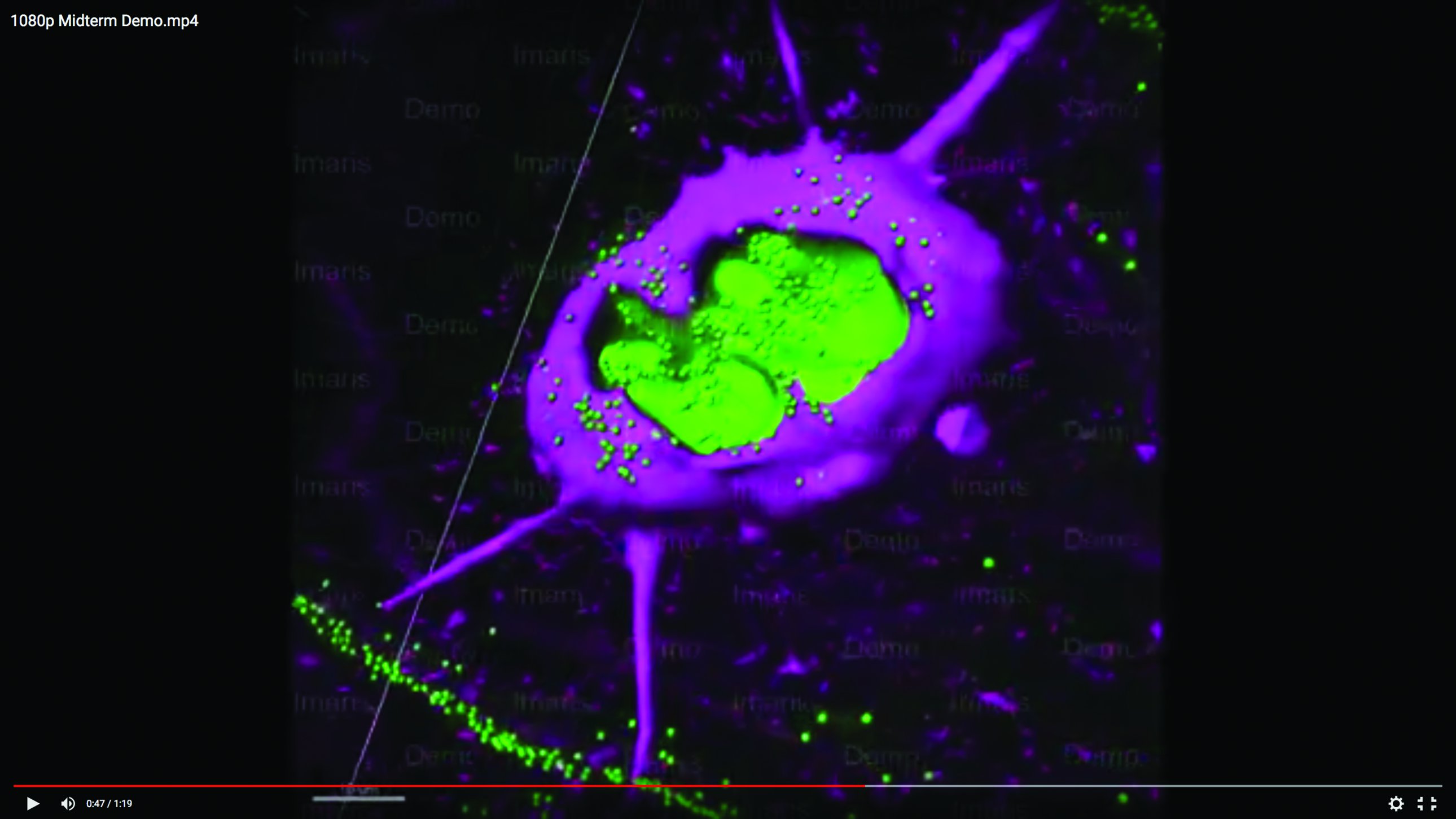
By developing a model of a barnacle larva, Zhang detected, for the first time, the membrane around the chitin plaque. Image courtesy of Andy Mount.
Riding the wave
Andrew Mount, who studies the molecular and cellular biology of marine invertebrate organisms, learned biology the old-fashioned way, with experiments he could observe, using his eyes and a lens, and with drawings rendered by hand.
But when he saw the power of computers to help him detect and display the long-hidden secrets of, say, oyster shell formation or barnacle adhesion, there was no turning back.
Mount and his team now use a powerful confocal microscope to collect three-dimensional data from experiments on biofouling (such as barnacles on ships and marine gear), biomineralization (the way mollusks form their shells), and ocean acidification. The researchers then model their data on computers, in 3-D.
“That allows us to take that three-dimensional data and produce exquisite images, unparalleled in beauty,” Mount says. “And we’ve been doing this since 2010.”
Last summer, through an internship program sponsored at Clemson by the National Science Foundation (NSF), Mount mentored nineteen-year-old Caroline Zhang, a rising sophomore from Emory University. He put her to work turning data into images. One of the problems hassigned her was to help his team visualize the production of chitin, a natural polymer common in crustacean shells and many other living structures, in a barnacle cyprid, the barnacle’s last larval stage before adulthood. Because a cyprid’s job is to find a place to settle and attach, understanding its biology could lead to methods for protecting ships’ hulls and marine gear from fouling. Using software called Imaris, Zhang modeled the data in graphic animations that not only detected a chitin plaque but revealed, for the first time, a membrane surrounding it. The NSF was so impressed that the agency invited Zhang to present her poster, titled “Stuck at Sea,” in Washington, D.C., last October.
“That’s the power of visualization,” Mount says. “You actually can advance science, and you don’t need to have umpteen years at the bench.”
And there’s money in it.
In labs around the world, visualization—seeing what otherwise couldn’t be seen—is taking science to a whole new level. The NSF, recognizing the potential of visualization and its power to attract young people into science, sponsored the summer internship program in which Caroline Zhang took part. Clemson landed the program, called Research Experience for Undergraduates (REU), and brought eight students to campus in June and July of last year. Vetria L. Byrd, who was then a visualization scientist with Clemson’s computing division, CCIT, wrote the grant and directed the program.

Caroline Zhang was asked by the NSF to present her research about barnacle formation in Washington, D.C. Image courtesy of Andy Mount.
Wole Oyekoya, who took over for Byrd when she left to join the faculty of Purdue University, says that in almost every field of science and scholarship, including the humanities, people are discovering the power of visualization and finding ways to use it. “I told the students that if this is an area you’re interested in, don’t be afraid to pursue it, because there’s going to be money in it,” Oyekoya says.
He leads me out of his office and down the hall to his lab, where one of his students, Barry Tucker, a student majoring in visual arts, is at a computer composing avatars. The avatars are 3-D representations of people whose forms will move and speak in realistic ways.
Animations like these are already proving useful in fields such as psychology, Oyekoya says, because a researcher can set up scenarios, including violent conflicts, and study how human subjects react without exposing anyone to harm. This kind of research would be unethical and impractical without visualization, Oyekoya says.
Parker Van Sickle, a senior in computer engineering, shows me an application for visualizing LiDAR (Light Detection and Ranging) data of the Clemson area, such as that collected via terrestrial or airborne LiDAR surveys. Airborne LiDAR is gathered by mounting a downwards-pointing LiDAR scanner on a low-flying aircraft and is used to gather high-resolution DEMs (digital elevation models) of the Earth’s surface.
Another of Oyekoya’s students, Joseph James, a junior majoring in mechanical engineering, hands me a headset and turns me loose to wander around in a 3-D model of the new Littlejohn Coliseum, now under renovation. I open doors, walk down a hallway, and step out onto the polished hardwood of the basketball court, where five imposing athletes, in uniform, are crouching and shifting in their stances, ready to defend their goal.
James asks me what I think.
“I think I’ve got no business on the court with these guys,” I say.
“That’s Not Good For You,” they said.
None of this virtual moving and shaking was possible a generation ago, except in rudimentary experiments using massive, exceedingly expensive hardware. Today, an ordinary desktop computer can render a coliseum and its occupants in three dimensions. But if you need to model, say, an ecosystem, a genome, or an earthquake-hazard zone, you’ll need big data and the services of a supercomputing center like Clemson’s Palmetto cluster, which can store and process terabytes and send them racing through the latest, fastest GPUs.
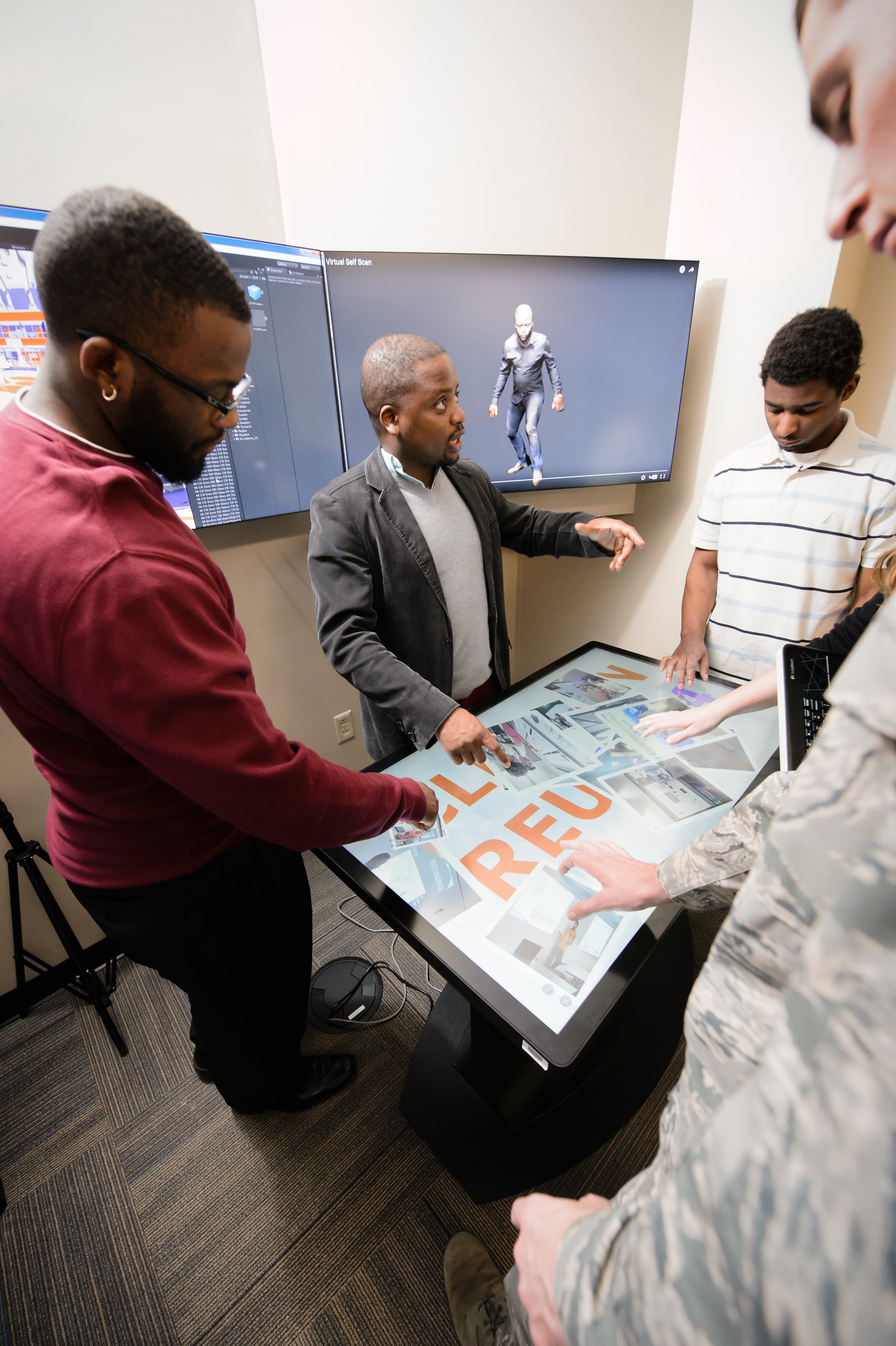
Here, Oyekoya works with students in his lab to develop 3-D avatars for use in psychology studies. Data visualizations have a potential application in almost every field. Photo by Craig Mahaffey.
I asked Oyekoya what happened, in just a few decades, to make all of this possible.
“It’s been driven by gaming mostly,” he says. “Over the years, these cards, these GPUs, have really become computers on their own.”
Oyekoya’s parents, like so many others, took a dim view of video games and warned him not to waste his time on them. “That’s not good for you,” they told him. Now it’s his job to help scholars and scientists fire up their GPUs and get into the game. “It’s a new area for me, to start delving into genetics, biology, and chemistry,” he says. “How do you talk to the researchers, understand what they need, and then be able to visualize it for them?”
That struggle to understand another field of study, to collaborate across disciplinary lines, is another way in which visualization is reshaping the scientific enterprise. People from very different backgrounds are finding common ground in the potential of GPU technology. Andrew Mount, who is both a biologist and an amateur astronomer, mentored a second REU student—Paris Smith, a senior mathematics major from Jackson State University—who rendered spectrographic tracings of solar storms and bursts of energy from Jupiter. Mount uses lasers in his biological research, and he says visualizing the data from those studies is much like visualizing data from space.
“When you analyze energy, whether it’s energy from Jupiter or energy from the sun or laser energy, the rules of physics are the same,” Mount says.
The methods and tools of visualization, Oyekoya says, have value in every field of scholarship and science, even in the humanities. One of the REU projects, mentored by Gabriel Hankins in English, visualized literary correspondence by detecting patterns within large collections of letters. Whatever the topic, visualization tends to attract bright, ambitious students who yearn to solve big problems, to answer questions too complex for any one discipline to tackle alone. Several of the researchers I spoke with about the REU summer internship program told me that their student interns came in with little or no expertise in the discipline and, before the summer was over, made real contributions to work in the lab.
Shaking skeletons apart
For the students and their mentors, the issues at stake are not trivial. Visualizing a complex problem in science could help protect property and save lives.
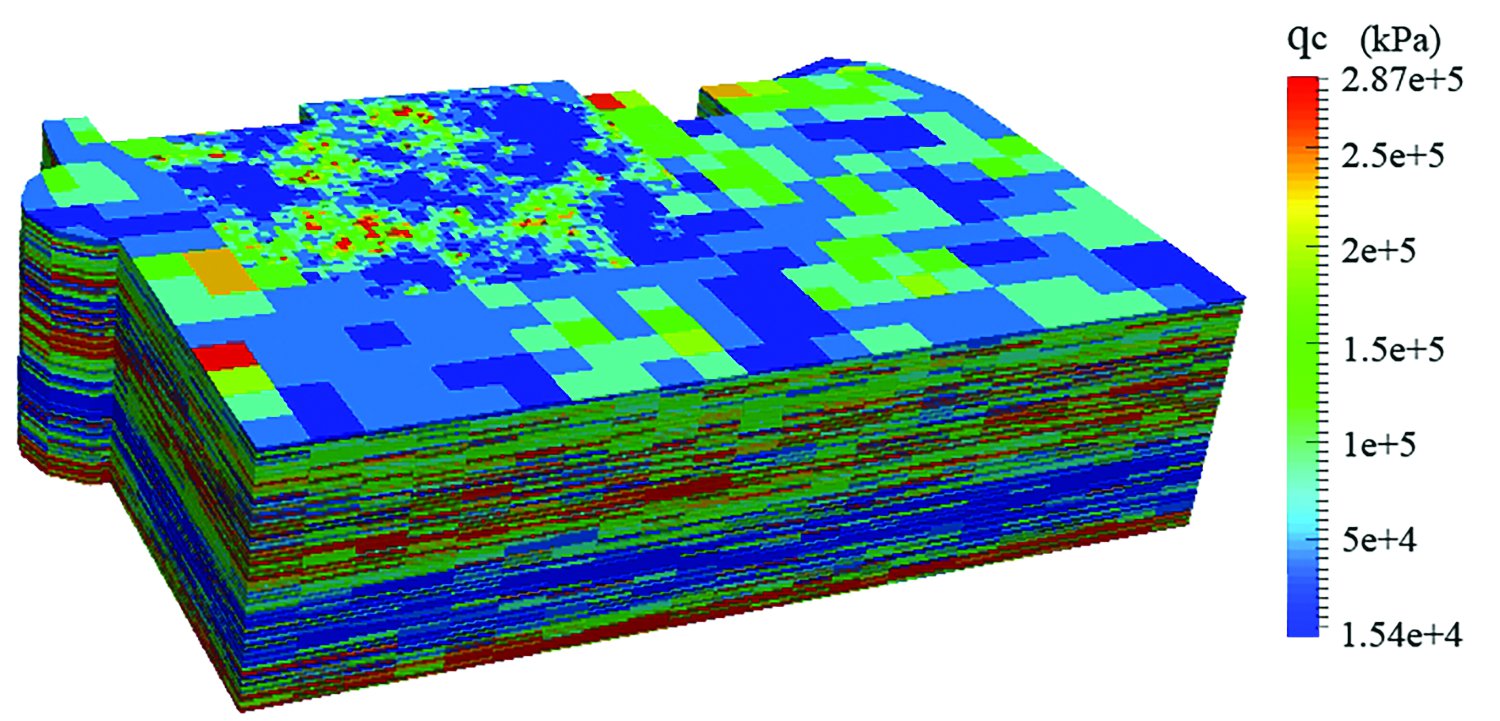
Chen’s map of the San Francisco Marina District enables quick analysis of which regions have higher potential for soil liquefaction in an earthquake. Chen says, “That’s something you cannot get just by using the data itself, or by using curves.” Image courtesy of Qiushi Chen.
Qiushi Chen, a civil engineer who studies soils and other natural materials, has been researching the risk of earthquake damage in Charleston, South Carolina, which occupies an active seismic zone. Chen explains that much of the catastrophic damage we see after earthquakes—cracked buildings and fallen bridges, for example—actually occurs as a result of liquefied soil.
Here’s how it works: An earthquake sends a jolt of pressure through the earth. If the soil is full of water—from rains, floods, or high water tables—this pressure wave can dramatically increase pore water pressure within the soil in a very short time and eventually break what Chen calls the soil’s skeletons, the structured particles that form when grains of sand or silt or clay combine. The skeletons, he explains, make soils strong enough to bear the weight of a building. But when the skeletons break down, the tiny soil particles flow like water, behaving more like a liquid than a solid, and the building can fail. This liquefaction, Chen says, is the biggest threat in seismically active coastal areas, where water tables tend to be high and the risk of liquefaction is great.
As sea levels rise, pushing the water table higher in some coastal soils, can communities like Charleston protect themselves from the destruction of a catastrophic quake?
Their chances are better, Chen says, if they understand their soils. Chen uses data generated by his colleague, Ronald Andrus, who has been sampling the soils of the Charleston area using metal cones equipped with sensors. Driven into the ground, the cones can measure soil resistance, which indicates strength, at various depths.
Andrus has conducted hundreds of these tests in the Charleston area. Chen uses the data to develop computer models that can delineate soil profiles at several depths throughout the area of interest and stores his data in the Palmetto cluster.
“So then we need to visualize the data,” Chen says, “and that’s where the student comes in.”
Chen’s student intern in the REU program was Janet Mendoza, a senior from the University of Puerto Rico. Mendoza took output from the computer models and reformatted the data to something that could be read by the visualization software, in this case a program called ParaView.
“So what we have now is a three-dimensional visualization of a soil profile from a given region for the area we studied,” Chen says. “That profile is important for seismic analysis because you can link the resistance of soil to the potential of liquefaction during earthquakes.”
Colors in the visualization indicate how strong or how weak a soil is, so it’s relatively easy to identify an area that could liquefy in an earthquake.
“That’s probably the area we should pay special attention when you’re designing foundations,” Chen says.
In September 2015, Chen’s group published a liquefaction potential map, generated using Mendoza’s visualization tool, of the San Francisco Marina District. “By looking at that map in different colors, you know which area is potentially liquefiable during an earthquake,” Chen says. “That’s something you cannot get just by using the data itself, or by using curves.”
Are there locations in Charleston that seem especially vulnerable?
“We’re still working on that,” Chen says. The researchers need more samples to define the hazard zones with certainty. As more data roll in, the lab will develop its models and apply the visualization tool that Mendoza developed last summer.
“She did an excellent job,” Chen says. “She’s an undergraduate student in computer science with no prior training or background in civil engineering. But it’s amazing how well she handled this project.”
Leaf by leaf
When it comes to the ecology of forests, Bo Song has turned over a new leaf. She uses visualization to understand how forests evolve and what threatens their health.

Understanding a tree for a forest
For eight weeks last summer, Song’s lab scanned a single sycamore tree, taking measurements to calculate the tree’s changing volume as it dropped leaves. Precise data regarding specific species will help researchers make accurate predictions about larger issues, like how vegetation will fare in the face of climate change. Images courtesy of Bo Song.
“We can visualize a hundred years of forest change in three dimensions on a computer,” she says.
The dynamics of modeling allow her to study, for example, forest succession, from herbs and shrubs to forests. She can also simulate the spread of forest fires or beetle infestations. And visualization, she says, is especially useful in outreach and extension programs.
“With visualization, you can show the tree, the different forest structures, the whole topography, and the different management options,” she says. “That helps people understand.”
To gather data, Song’s lab uses a laser 3-D scanner, which can measure with pinpoint accuracy the objects and textures within its range. This is the type of scanner used in law enforcement to capture the details of a crime scene, in the construction industry, and in science. It can also be used to study beach erosion and changes in sand dunes. A similar scanner tracks progress as conservators at the Clemson University Research Institute remove encrustations from the hull of the Civil War submarine, the H.L. Hunley.
For the REU program, Song was a mentor for Shayne O’Brien, a student from the State University of New York, Geneseo. “He has a mathematical background, and he helped us to figure out the math,” Song says.
Last summer, Song’s lab aimed its scanner at a single sycamore tree. “For eight weeks, we took a measurement every week,” she says, “and we use that to calculate how leaves were dropping to ground. Using the scanner we could not only visualize the tree in three dimensions but also calculate its volume. That’s very accurate scanning and very detailed.”
The scanning wasn’t as simple as it sounds. Light reflected from the tree and its surroundings sometimes left gaps in the data. O’Brien helped Song calculate and account for those gaps and complete the image. O’Brien’s paper about the work was accepted by two conferences and one publication, Song says.
Song says visualization has enormous potential in ecology, which requires vast troves of data to help researchers grasp the complex interrelationships of plants, animals, climate, and terrain—from the microscopic to the global.
“For ecology, it’s really hard to figure out all the factors,” Song says. “For example, let’s say we want to know how climate change will affect a forest. If I put in one degree of temperature increase, what will that do to the different types of vegetation? How will different forests relocate over time as some species disappear or invasive species come into the system? All of this we can predict, but if you don’t have visualization you can’t see it. And if we want to have a plan, we can basically realize it on the computer. And this is not only educational. It’s like playing a game. But it’s a game that provides ecological knowledge.”
The hurricanes in genes
For Alex Feltus, the name of the game is how to feed a hungry world. Feltus studies how genes interact, primarily in food plants such as corn, rice, and soybeans. “I try to find little sets of genes that are important for the crop, for bigger rice grains or increased drought tolerance, for example,” he says.

This image, taken from the animation that Feltus shared with Glimpse, reveals networks of genes connecting in nodes. Visualizations like these can highlight deep connections in huge arrays of data.
Because he’s typically looking for interactions among some fifty thousand genes or more, the patterns are exceedingly complex. He compares the task to what meteorologists face when they model the weather. “I’m trying to do the weather patterns of gene interactions,” he says. “I’m trying to find the little hurricanes. I’ve reached the point where I can’t even understand what I’m doing unless I can visualize it in some way.”
The need for visualization led Feltus to Melissa Smith in electrical and computer engineering, and to Smith’s Ph.D. student, Karan Sapra. Smith’s lab has found that when it comes to visualization, GPUs can often supply the primary brainpower, cranking through data faster and better than a CPU, a computer’s central processing chip. But to render the images of science instead of, say, a high-speed car chase, GPUs also need special instructions. For the genetics research Feltus is doing, that means writing software to access the data and take advantage of the GPU.
“I work with Melissa to develop visualization tools using GPUs, which are chips that were invented for video games,” Feltus says. “Now those chips are providing the infrastructure for visualizing complex scientific data, too.”
Genetics is complex not only because of how its puzzle pieces fit together, but also because that puzzle changes over time. As an organism develops, thousands of genes get turned on or off at various moments, in various ways. “They’re little switches,” Feltus says. “When you put a seed in the ground for a rice plant, the genes are activated. It starts to grow stems and leaves, and eventually flowers and produces more seed. There might be thousands of genes that affect yield, but there are two of them, or maybe a hundred of them, that are important. The goal is to breed the right rice plants together to get the right combinations of genes and alleles.”
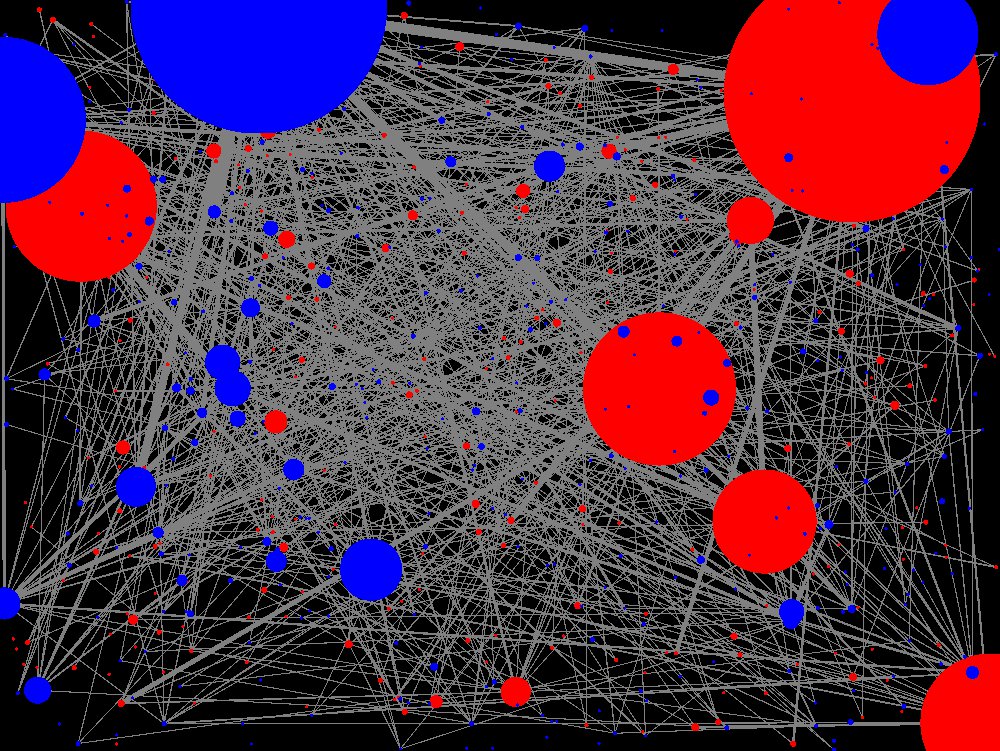
“It’s a new way of doing biology,” Feltus says of visualizations like these, that reveal networks of genes. Image courtesy of Feltus.
He shares a link to an animation showing networks of genes connecting in nodes over time. The image is lovely, and unfolds like something organic and living, but it is not a video. It is an animation revealing the deep connections in huge arrays of data, showing Feltus the relations of genes.
The networks are so complex that even with visualization they can overwhelm the eye. For the REU program, Feltus and his colleagues worked with two students, Kathleen Kyle from Florida State University and Amari Lewis from Winston-Salem State University, to map the nodes into simpler shapes that could serve to highlight points of interest.
“It’s a new way of doing biology,” Feltus says of visualization. “People have always studied biological systems. Aristotle studied biological systems, but he couldn’t see the genes. Mendel couldn’t see the genes; he could only see the phenotype.”
It is the seeing, Feltus says, that makes the data meaningful. To explain, he returns to the weather analogy. “If you could have Doppler radar for every location in every state, then you could really get high-resolution views of a complex system,” he says. That’s the general idea behind his high-resolution views of genetics. Like many of his colleagues in visualization, Feltus uses the Palmetto cluster for the high-performance computing necessary for his genetics research. As chair of the cluster’s faculty advisory board, Feltus has seen the wide range of applications for extracting trends and patterns from the massive arrays of information known as big data.
“When we get together, and I meet with all the researchers, everybody’s doing completely different stuff,” he says. “Side by side with my genomics work you see people modeling how fire propagates, or doing remote surgery and processing the images. Economic data is going through there—all sorts of stuff. So in all of these different fields, computers have opened up the possibility of studying an entire complex system, not just one tiny part of the system. So you can go to the computer and model what you think is going to happen before you actually do a physical experiment, to get predictions of the outcome. It’s pretty amazing.”
I ask him if visualization will help the public better understand the science of genetics, climate, or any other complex system. “I think it could help people accept the fact that things are complex,” he says. “It’s like seeing the Earth from the moon. You’re not just describing it for someone who has never seen it. You are seeing it in a whole new way.”
Qiushi Chen is an assistant professor of civil engineering and Ronald Andrus is a professor of civil engineering in the College of Engineering and Science. Gabriel Hankins is an assistant professor of digital humanities in the College of Architecture, Arts and Humanities.
Where science and fiction cross paths
by Neil Caudle
Not so long ago, serious science didn’t truck with the fanciful fictions of movies and games. Things have changed. Today, the realms of fact and fiction share a toolkit and the experts who know how to use it. Joshua Levine and Donald House are two of those experts— computer scientists who, in the course of their careers, have worked both sides of the street.
House developed a method of choice for simulating woven cloth in digital animations, and you’ve probably watched the drape and flow of his work in popular games and films. But he also understands scientific research. He has studied the science of depth vision in frogs and toads, research that inspired a 3-D graphics system called Jabka. And at Clemson these days, his collaborators are mostly scientists. With support from the National Science Foundation, he works with the National Hurricane Center to improve how hurricane predictions are rendered, to help emergency managers and the public make good decisions when a hurricane’s coming to call.
Levine has teamed up with Robert Geist, a computer graphics wizard known for his work on films such as The Hobbit: An Unexpected Journey, to simulate fractures, as in shattered glass or cracking stone. Geist and Levine are using a particle-based approach, meaning that they compose the material from a carefully constructed array of points—or particles—set to move around in space. Once the researchers work out the geometry, and the points are all moving as planned, the computer can flesh out the fragments of glass or stone, or most any other breakable material.
“We want to make something that looks good, that you’d be able to use in a movie,” Levine says.
Meanwhile, Levine is taking the project in a very different direction, developing tools that scientists could use to input and model their data, applying the particle-based approach. “We use a similar toolset,” Levine says, “but the graphics folks are focusing on the entertainment industry, and I’m focused on the scientists.”
This kind of back-and-forth across the great divide of fantasy and science has become business as usual, Levine says. Computer graphics types scan the literature of science and technology for breakthroughs they can use to amp up the atmosphere and action in their animated films and games. Then scientists figure out a way to put those graphic innovations to work in their research, through data visualization.
A blizzard, flake by flake
The visualization field got its start during the mid-80s, Levine explains, and gained official recognition from an NSF report published in 1987. People working with the national research laboratories, and with the Department of Energy in particular, took an interest in tools that could tap into the power of the computer graphics technologies transforming modern entertainment. “People at the labs were asking, ‘Can we do things that benefit not just games and movies but actually forward scientific progress?’” Levine says.
The answer turned out to be yes. Data visualization has become, in one generation, a considerable asset for modern science. That’s because big science often means big data. If you’re parsing a genome or predicting the impact of climate change, for example, you’ll have to grope your way through a blizzard of data. Visualization can help you navigate the storm and make sense of its patterns, right down to the shape of each snowflake.
But to make those patterns clear, you’ll have to do the math. And you’ll have to understand the nature of human visual perception.
Donald House can do both. He has learned not only how math can weave cloth but how our brains weave an image from the light beaming in through our eyes. In many ways, what we actually see when we look at the world is a fiction, he says. Our visual system picks up the contrasting patterns of incoming light, and our brains construct a scene using memory and imagination. So even when we’re climbing a staircase or petting the dog, the realms of fact and fiction converge.
“Everything you see, you’re actually constructing in your mind,” House explains. “It’s not like a movie running in your head. Your eyes are constantly moving around and exploring, and through that exploration you’re building up this image of what you see.”
So when House works on a scientific visualization, he keeps the nature of human perception in mind. “One of the keys to visualization is understanding that contrast is what people are reading,” he says. “So when you enhance contrast, you enhance legibility.”
Take medical imaging, for instance. Using data from CAT scans or MRIs, House and his students are trying to improve the rendering of medical images so that it’s easier to see features of interest. “If you’re looking at bones inside a body, you might want to render the musculature so you can see where the muscles are in relation to the bone, and you might also want to see the bone,” House explains. “So you have one thing in front of another.”
The usual fix for this problem is to give the tissues on top some transparency in the image. “The problem with that is that it’s very hard to see clearly the shapes of the bone surfaces and the muscle surfaces, because they’re over the top of each other,” House says. “So we’re looking at ways of putting texture on the surface, a kind of pattern that makes it easier to see how the surface is curving in and out.”
He faces a similar challenge when he works on tools for hurricane prediction. The path and strength of a hurricane are uncertain, and the uncertainty increases with time. “The hurricane may look like it’s heading right for Charleston,” House explains, “but actually it might hit the Outer Banks. So people in the Outer Banks need to be aware of what chance there is that the hurricane may hit up there.”
The trick is to layer uncertainty into the visualization without making the image cluttered and confusing. That means carefully selecting the data that yield an accurate, meaningful contrast, House says.
A glut of granularity
For today’s scientific research, with its enormous data sets and models that incorporate multiple simulations, finding a meaningful contrast is easier said than done. Sometimes, there’s too much data, too many flakes in the blizzard.
This kind of overload is relatively new. A decade ago, Levine says, the problem in science was how to find enough computing power to generate the data at the appropriate scale to understand the subject of study. But as computing power increased, so did the data. Exponentially.
“Ten years ago, if you ran a climate simulation, for example, you might have been getting granularity of every fifty kilometers,” Levine says. “So every fifty kilometers, you knew what the temperature was. Now we can get the data at much, much finer resolution. The problem is, the resolution is too high. We’re generating more data than we ever thought possible, and the visualization tools are trying to cope with it.”
So the new challenge facing researchers like House and Levine is how to find ways to glean the data that are truly important and leave out the stuff that’s less relevant. Levine’s work with Alex Feltus and Ph.D. student Karan Sapra is one example. Feltus, a geneticist, is sorting through thousands of plant genes to decide whether pairs of sequences are similar or different. “What comes out of that simulation is a kind of element-by-element comparison,” Levine says, “and they’re trying to see what that comparison looks like, in the grand scheme of things.”
In genetics, that means reaching into a thicket of data and pulling out a few tiny morsels of meaning. By one school of thought, you can manage this kind of sorting with something called machine learning, which involves programming a computer to figure out what to keep and what to throw away. But visualization keeps the human being in the loop, Levine says, and that can be useful.
“There are things that humans do really well,” he says. “We’re really good at picking out patterns, if you present those patterns in the right way. So a lot of what visualization is doing now is not just processing more and more data, but doing some of that summarization.”
Where fact and fantasy converge
Whatever the task, most scientific visualization relies heavily on hardware developed primarily for computer graphics and video games. Companies such as Nvidia, AMD, and Intel have pushed the technology of graphics chips—called GPUs—to such speeds and capacities that they now constitute much of our hightech processing power, even in the supercomputers scientists use. One reason is the GPU’s capacity to handle multiple streams of data at once, in parallel; another is that the graphics chips tend to consume less power than their cousins, the CPUs. In a supercomputing facility, which can sometimes consume enough electricity to require its own power plant, the energy savings add up.
Because of these advantages, the modern GPU, like the human brain, is a place where fact and fantasy cross paths. The same hardware that serves the computer graphics side, and the fanciful creations of people like Geist, also serves the science side, including the data visualizations of House and Levine. (Clemson, which has received research support and equipment from Nvidia, has been designated an Nvidia GPU Education Center and a GPU Research Center.)
It’s a new blend for a new age, and it has opened up a world of possibilities for students, so long as they’re willing to take on the rigors of math and computer science. The same basic skill set can equip them for careers in science, entertainment, or both. Josh Levine and Don House are living proof.
I ask House about how he’d made the transition from working with filmmakers to working with scientists. Wasn’t that a leap? “Here’s the main difference,” he says, laughing: “The people making films are trying to do their best to create an illusion of reality that isn’t really real. The filmmakers want to show you a huge explosion, even though it’s just a firecracker. But the scientists want you to do your best to show them the data without changing anything. They don’t want anything you’ve invented; they just want to see the data. So it’s totally the opposite of what the film people are doing. It’s all in the audience. It’s all in your point of view.”
photos by Craig Mahaffey
An angry swarm of hornets has invaded the home of the H.L. Hunley.
Or so it would seem from the noise boiling out of the tank where the world’s most famous submarine has rested now for fifteen years.
Finally freed from near-constant immersion in a pool of fresh water—its protective bath since being raised from Charleston Harbor in August 2000—for the first time in 151 years the old sub is showing itself in all of its raw, ironclad beauty.
Shorn of its thick, hardened coat of sand, sediment, and shell, the naked submarine is offering researchers their best clues yet about how the manpowered sub worked and why it famously disappeared after sinking a Union warship blockading Charleston in 1864.
The raucous sound of mad hornets comes from a team of conservators wielding small, but noisy, pneumatic chisels. They chip away the last patches of sea-made crust—residue collected from 136 years of resting on the bottom of Charleston Harbor—from the sub’s hull. This summer, the team celebrated the end of the tedious job of removing all of the material, called concretion, from the Hunley’s iron hide. The work, which took a solid year to complete, was long awaited not only by the Hunley’s caretakers but by maritime archaeologists the world over.
“We are now seeing the actual surface of the submarine. It’s the first time anyone has seen this in more than a hundred and fifty years,” says Stéphanie Cretté, director of Charleston’s Warren Lasch Conservation Center. Home to the Hunley, the center is a cornerstone of the Clemson University Restoration Institute. Since its founding in 2004, the institute has parlayed its oversight of the Hunley project into a busy hub of innovative research on the banks of the Cooper River in North Charleston (see Defining the wind).
“By this time next year, we hope to be done with the next phase, which is (cleaning) the interior,” Cretté says as she helps visitors don rubber boots, safety glasses, and latex gloves for their descent into the Hunley’s damp home. The group has arrived on one of the three days each week that the Hunley’s 72,000-gallon pool of dilute sodium hydroxide is drained to allow conservators to do their work. The caustic bath draws salt from the Hunley’s iron pores, a slow but effective remedy from the effects ofsoaking in seawater for well over a century.
The twelve-member team Cretté now leads (the center’s first director, Michael Drews, retired in 2012) has evolved over the years but remains focused on finishing one of the most challenging restoration projects in American maritime history. As detailed in Learning from the Hunley, the story of the Hunley’s 1995 discovery and subsequent resurrection has focused international attention on Clemson’s efforts.
Stages of recovery
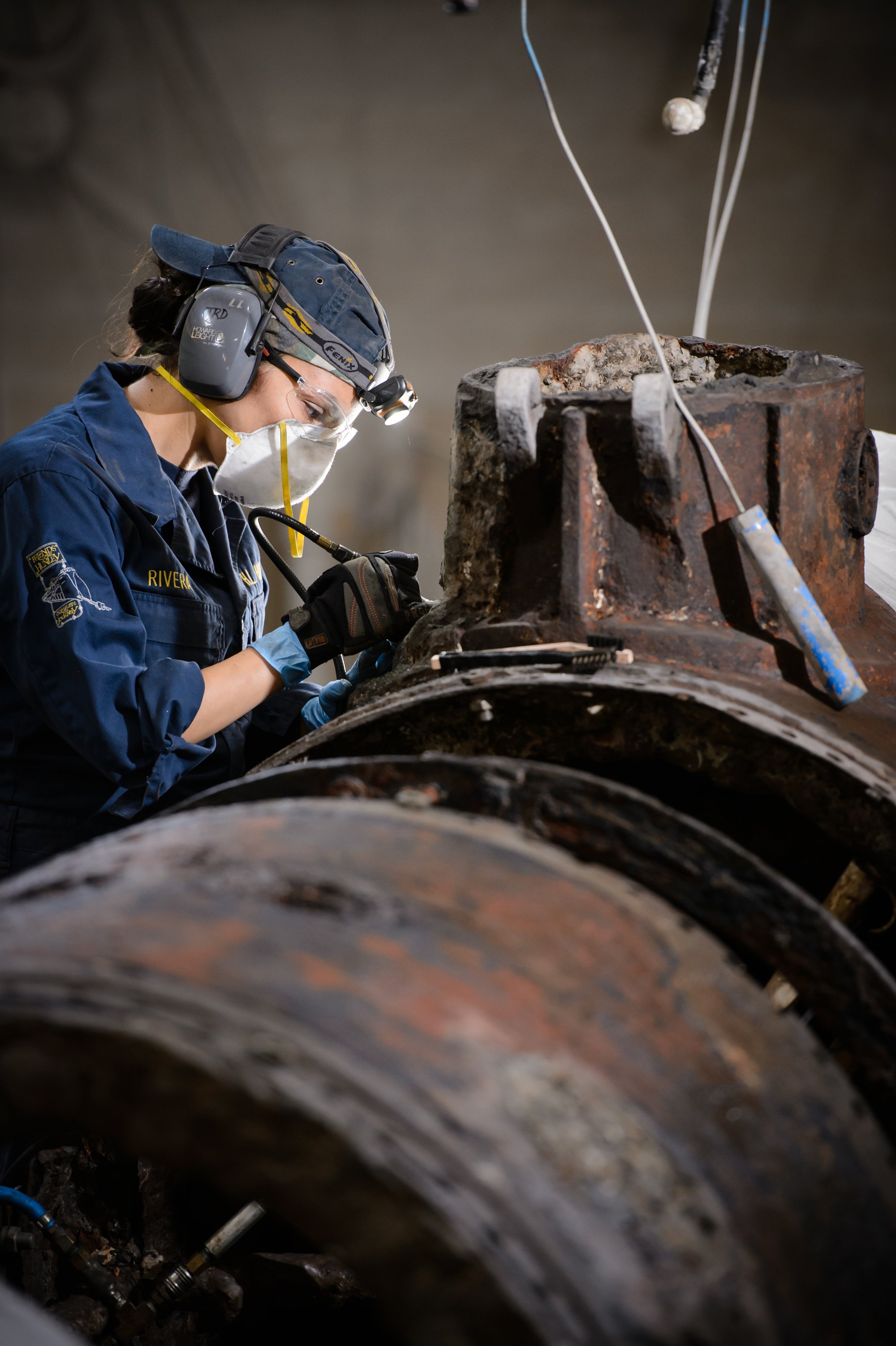
Even before the de-concretion process began in 2014, the team of conservators hoped the work would reveal tantalizing clues about the Hunley’s final moments, solving one of the Civil War’s most puzzling mysteries.
So far, the exhaustive restoration work has been punctuated by four pivotal events. Obviously the first, which drew world attention, was the recovery of the submarine itself from its muddy grave, moving it ashore and setting it up in a highly specialized holding tank. Four years later came the excavation of the sub’s interior, filled to capacity with thick, gooey sediment. That excruciatingly painstaking work culminated with the recovery and analysis of the remains of the sub’s eight-man crew, including the Hunley’s twenty-seven year-old skipper, Lieutenant George E. Dixon.
After years of study and intense debate, in 2011 the sub successfully underwent a risky procedure in which it was rotated to its original vertical position. Discovered resting on the seafloor at a 45-degree angle, the sub was recovered exactly as it was found. Archaeologists feared that righting it might destroy priceless archaeological clues that remained inside. Even after the recovery of the crew’s remains and dozens of artifacts, the team knew that rotating the vessel still posed the threat of irreversible structural damage.
To everyone’s relief, the project went smoothly and the sub was finally freed from a thicket of heavy slings that had held it in place for eleven years. Without this critical maneuver, team archaeologists say that the latest phase—removing the sub’s heavy coat of concretion—would have been all but impossible.
Paul Mardikian has been front and center for every phase of the Hunley’s restoration. Trained in conservation sciences at the Sorbonne, France, Mardikian signed on as the Lasch team’s senior conservator in 1999, a full year before the Hunley was raised. He’s worked on other Civil War projects as well, notably restoring cannon recovered from the CSS Alabama, which, like the Hunley, also sank in 1864, albeit off Cherbourg, France.
As he chiseled away the last deposits on the Hunley’s propeller last June, Mardikian reflected on why the meticulous de-concretion work was necessary and what it had revealed so far.
“We are now able to essentially read the hull,” he said. “Before, with all the concretion there, we basically had only x-rays of the sub to look at and study. Now, we can look directly at the surface, and there’s just no substitute for that. Now the challenge is to read and properly interpret what we can see with our own eyes.”
Before the sub’s hull was stripped of its crusty shell—which was found to be over an inch thick in places—every bump, curve, indention, ripple, or other surface anomaly was masked so heavily that the vessel resembled a piece of natural rock snatched from the seabed. Contrasting before-and-after photos show a stunning transition from what once could have passed for an entirely organic object to a sleek slab of incredibly specialized Civil War iron.
Mardikian traced a gloved hand over a cleaned propeller blade. Beside it was its crusty mate, still bearing the likeness of a shard of curved concrete.
“This is just like looking at someone’s body, looking at the scars. We see scars but we don’t always know the chronology, the full story of how they got there. After all, we’re dealing with a submarine that sank not just once but three times.”
The Hunley at ground zero
Assuredly, well before the de-concretion process began in early 2014, the team was optimistic that the work would reveal tantalizing clues about the Hunley’s final moments. In the forefront of everyone’s mind was what could be called the eureka discovery, incontrovertible evidence that would finally solve one of the Civil War’s most puzzling mysteries.
Clearly, on that cold February night of 1864 some four miles off Sullivan’s Island in Charleston Harbor, something went terribly amiss. What happened? Alas, the latest work sheds scant new light on a question that has vexed historians, naval experts, scientists, and Civil War buffs for over a century-and-a-half now. A definitive answer may never be found, but the Hunley team is justifiably proud of having now assembled the most complete set of clues ever compiled. They are anxious to explore the only place where the final clues can be hiding, and that’s beneath the still heavily encrusted walls and machinery of the sub’s interior.
Interestingly, two of the best clues were found just before the latest cleaning process began. In 2013 the team finally finished cleaning and restoring the tip of the 17-foot iron spar that had been soaking in solution since the sub was raised. The spar served as the Hunley’s only weapons delivery system, essentially a lance tipped with a torpedo loaded with 135 pounds of gunpowder. It was found detached from the sub and lying only a few feet away from the hull in 1995.
What researchers found upended a Hunley narrative that had reigned since almost the night the sub vanished. The torpedo was revealed to have been bolted to the spar with a copper casing, and therefore apparently was never designed to be detached and detonated from a distance, a central tenet of Hunley lore. With the concretion gone, it was obvious that some mighty force caused the casing’s sheath to peel back onto the spar like a ripe banana skin, ripping a gash in the casing where it was thrubolted. The discovery proved beyond any doubt that the Hunley was only seventeen feet away from the torpedo when it went off. Until then, researchers could only speculate about the sub’s proximity to its lethal attack.
The blast-deformed torpedo casing means that the Hunley and its crew felt the full force of a horrendous underwater explosion from a distance of just short of half the length of the sub itself. The proximity of the explosion could almost be likened to the Hunley having struck a mine.
In Harm’s Way
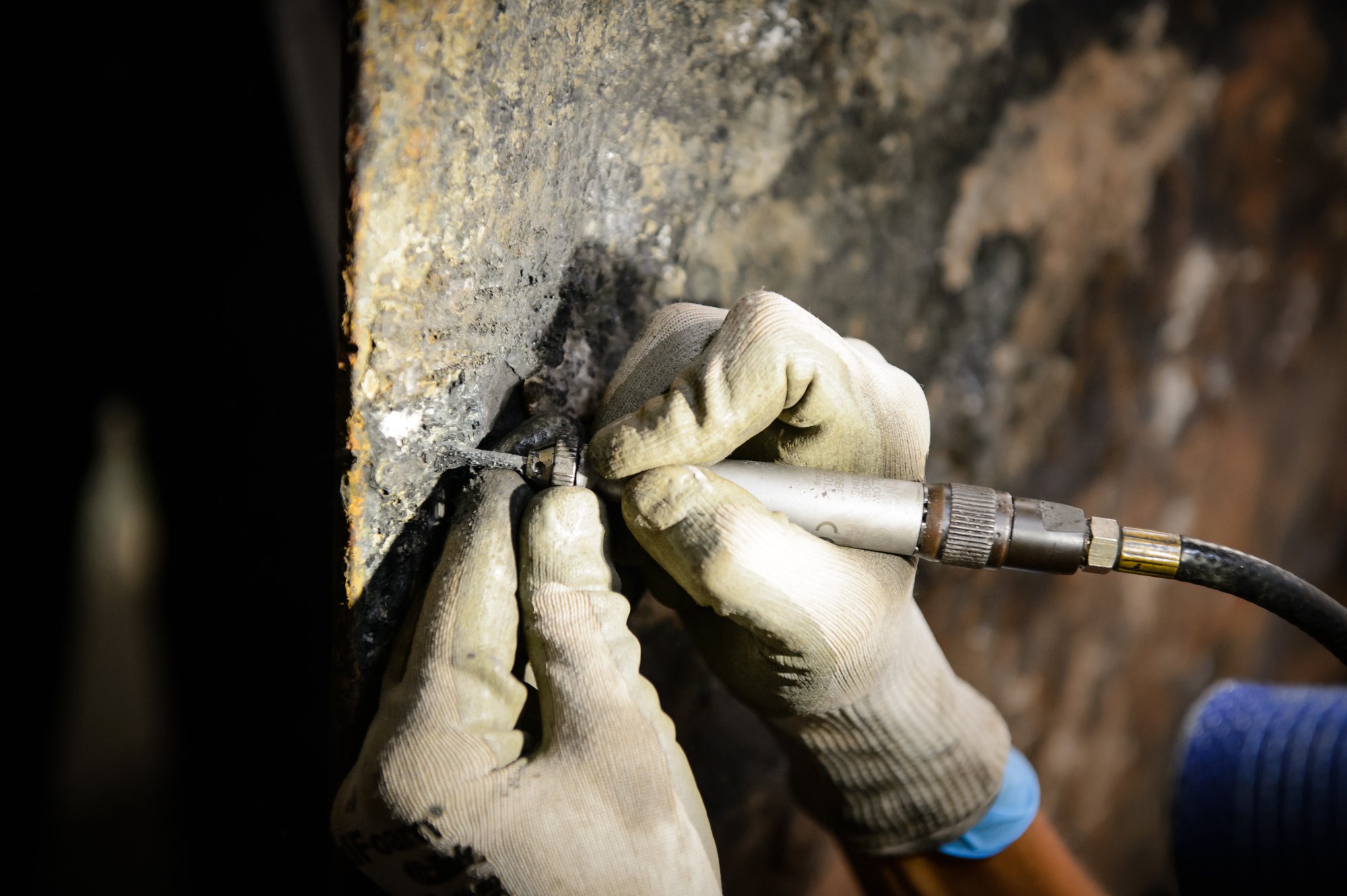
A thick, hardened coat of sand, sediment, and shell, the concretion on the sub is being carefully chiseled away.
Even so, with the sub now completely out of its shell, the most obvious finding reinforces what conservators had surmised early on: namely, that the Hunley was an amazingly tough piece of war-making machinery. Mardikian and his teammates found no evidence that the explosion inflicted any damage at all on the Hunley’s primary defense—its sturdy, wrought iron hull. None of the sub’s 3/8″-thick hull plates showed any sign of shrapnel damage, much less cracking or buckling, injuries that surely would have sent the sub to the bottom in a hurry. The absence of such damage helps explain why the sub was able to survive sinking for a considerable length of time. The sub eventually sank more than three football fields away from where its victim, the Housatonic, dropped to the mud within five minutes of the attack.
A computer-simulated test conducted in 2013 by the U.S. Navy’s Surface Warfare Center in Washington, D.C., suggested a reason why the sub was able to survive the blast at what amounted to point-blank range. The navy researchers concluded that the charge carried by the Hunley would likely have generated only 350 pounds per square inch of pressure—a force determined to be insufficient to breach the sub’s walls.
But significantly, the navy conceded that the blast could have severely, even fatally, injured the sub’s crew. Forensic analysis of the crew’s skeletal remains in 2004 showed no evidence of bone fractures. But medical literature is full of accounts of the lethal effects of underwater explosions, which can be far deadlier than surface or airborne blasts yet cause no broken bones or lacerations. The Hunley’s eight crewmen were hit with a vicious underwater concussion unlike anything they or any of their Confederate comrades had ever experienced in either training or combat. (At this writing, the navy still has plans for another experiment, this time using real gunpowder—made with the same formula used by the Confederacy—in a test at sea.)
Finding that the Hunley’s hull withstood the brunt of the explosion, while fascinating, hardly means that the blast didn’t seriously damage the vessel in other ways, said Mardikian. Finally able to study the outer skin in great detail, Mardikian is now convinced more than ever that a discovery he made several years ago is solid evidence connecting the explosion to the Hunley’s fate.
While trying to understand how the Hunley’s ballast system worked, Mardikian noticed that the bronze intake pipe attached to the sub’s forward seacock—a valve for letting in water—was oddly misaligned. Closer inspection revealed that the seacock’s pipe—almost the diameter of one’s wrist—was snapped in two right where it went through the hull. Because bronze is essentially impervious to seawater corrosion, Mardikian knew that corrosion couldn’t possibly have caused the damage he’d found.
In their test, the navy researchers took into account the broken seacock pipe and deduced that if it had been caused by the explosion, the damage could have allowed a lot of water to pour into the Hunley’s crew compartment very quickly. Even if the pipe initially suffered only a hairline fracture, researchers speculate that the leak still could have threatened to sink the sub if the crew didn’t take immediate action to staunch the flow. In the excavation of the interior, completed in 2004, no evidence was found to suggest that the crew made any effort to address any leakage problem.
Mardikian is convinced that the broken pipe was “a catastrophic failure” that played a major role in the Hunley’sdemise. He likens the damage to what’s depicted in every movie depicting submarine warfare. When nearby depth charges go off, submarines that star in films unfailingly start spewing water and steam. It’s not Hollywood fiction—survivors of submarine combat during WWII lived to describe the horrors of watching their ships fill with water from pipe fittings sheared by fierce explosions.
“It’s easy to imagine that something similar happened here,” Mardikian says. “The (shock of the) explosion was enough to cause the sub to flex. The seacock pipe was fixed and very rigid. It’s reasonable to suggest that any flexing would have broken it where it did.”
The valves of life (and death)
Launched in July 1863 from its birthplace at a foundry in Mobile, Alabama, the Hunley led a brief and frightening life.
Rushed by rail to Charleston to help fight off the Union’s fleet of blockade ships, within eight months of leaving Alabama the forty-foot-long, twenty-ton submarine would be on the cold bottom of Charleston Harbor with its third ill-fated crew still aboard. It had already sunk twice before in sea trials, killing five crewmen the first time and all eight the second, including the vessel’s namesake, Horace Lawson Hunley. Each sinking forced desperate Confederate commanders in Charleston to pay salvors handsome sums to raise the vessel, recover the bodies and make whatever repairs or modifications were necessary to throw the Hunley into battle.
Both sinkings, the second in particular, were suspected of being caused by human error. Even with its namesake Hunley at the controls, the sub’s loss was blamed on mistakes made in handling the all-important ballast system. Controlled by forward and aft valves for regulating both the intake and expulsion of seawater, the sub’s fate literally lay in the hands of men who knew how the system worked.
“If you can’t control the valves, it’s life or death,” says Michael Scafuri, an archeologist on the project. “You had to be absolutely certain how the valves were positioned at all times.”
Scafuri and his research assistant Brad Blankemeyer study the Hunley’s ballasting and propulsion systems. They have successfully removed, de-concreted, and restored one of the sub’s two ballast tank pumps, the aft unit. The forward pump remains heavily concreted and sits in its original place, awaiting the final cleaning of the interior. Both pumps were capable of forcing water out of the ballast tanks or the sub itself if necessary, but to work, both required their independent valves to be properly set.
They found that the aft pump apparently was in proper working order when it was last used, and even contained seawater still sealed inside by its single piston, whose cotton gasket was found to be remarkably well preserved. The valve controlling the aft pump was found to be closed, as it should have been, given that both ballast tanks were probably full to allow only the Hunley’s twin conning towers to be visible as it approached its target.
But what about the forward valve? In attempting a dive during a training exercise, Hunley drowned himself and his crew when he apparently failed to close the forward seacock valve when he should have.
Scafuri and his team have discovered that even though the forward valve appears to be in a closed position (its handle is perpendicular to the pipe), there’s something curious in the setup. Space being what it was on the impossibly cramped Hunley, the captain’s seat was squeezed into position directly atop the valve’s handle. This configuration would have made it difficult, if not impossible, to operate the forward valve the same way as the aft valve.
“The captain simply couldn’t fit his seat on there and operate the (valve) handle,” Scafuri says. “So, we have to wonder whether these two valve handles were put on differently.”
As found, the forward valve’s configuration appears to be in the open position. Could the Hunley’s brash young commander, George Dixon, have repeated H.L. Hunley’s mistake on his famous run to destiny?
“We won’t be able to know (whether the valve is on or off) until the interior is fully de-concreted,” Scafuri says. “Was human error involved again? Right now, it’s an open question.”
Final approach
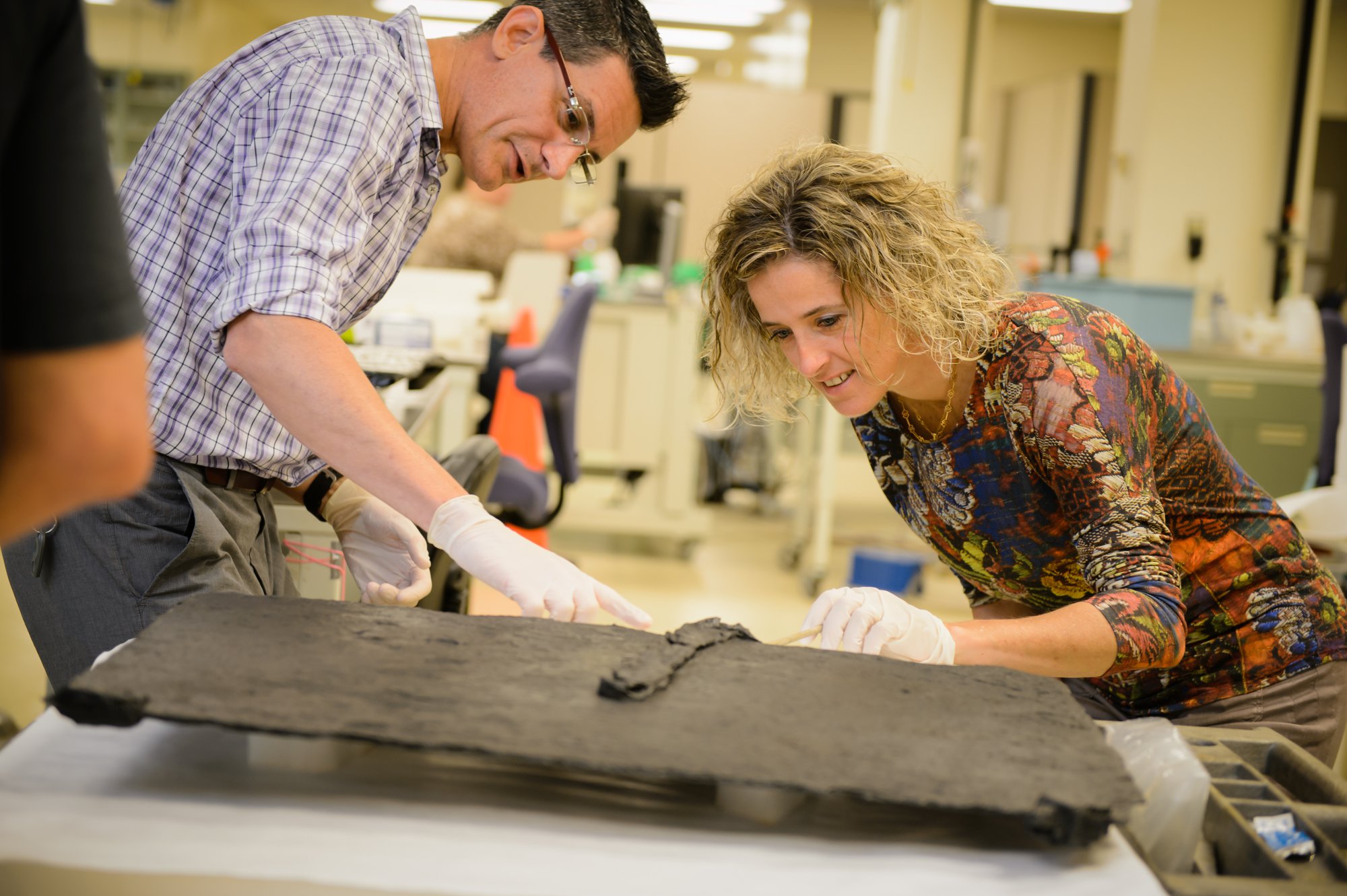
Stéphanie Cretté, director of the Warren Lasch Conservation Center and a research professor of materials science and engineering, is hopeful that the work will be done by next summer.
The Hunley’s restoration team begins the next phase with some trepidation. Taking the shell off the sub’s interior will require a more delicate approach, Cretté says. Not only can the interior be a beastly place to work because of its size (3½ feet in diameter), the old vessel’s bones are fragile.
“We can only put two conservators inside at the same time because of the weight. So, this will likely mean that (deconcreting) the interior probably won’t go as fast as did the exterior.”
Still, Cretté is hopeful that the work will be done by the summer of 2016 or the summer of 2017. After that, the sub’s tank will once again be filled with salt-removing chemicals for a final long soak, this one expected to take roughly five years to complete. Cretté says the current schedule calls for the Hunley to be ready for its final transition to a museum sometime in 2020. A quarter century after its discovery, the H.L. Hunley will finally be fully displayed to an eager world audience. Visitors are likely to see a sleek, almost solid black vessel, its iron skin darkened by special, deep-penetrating corrosion inhibitors. Touching the sub won’t be possible, because it will be permanently housed in an air-free, ultra-low-humidity cocoon of sorts. To keep corrosion in check, the container also may be filled with argon or some other inert gas.
After the Hunley goes on public display, Cretté says, the work of the Lasch team is poised to continue, thanks to some one-of-a-kind spin-off technologies and talents that the project generated during its fifteen-year run. In particular, she says, the lab is building on its expertise in such diverse fields as materials analysis and 3-D imaging. Techniques developed by the lab already have helped conserve and analyze a wide variety of metals and textiles used in fields outside of archaeology.
“We’ve built a wonderful resource here and we’re looking forward to the future.”
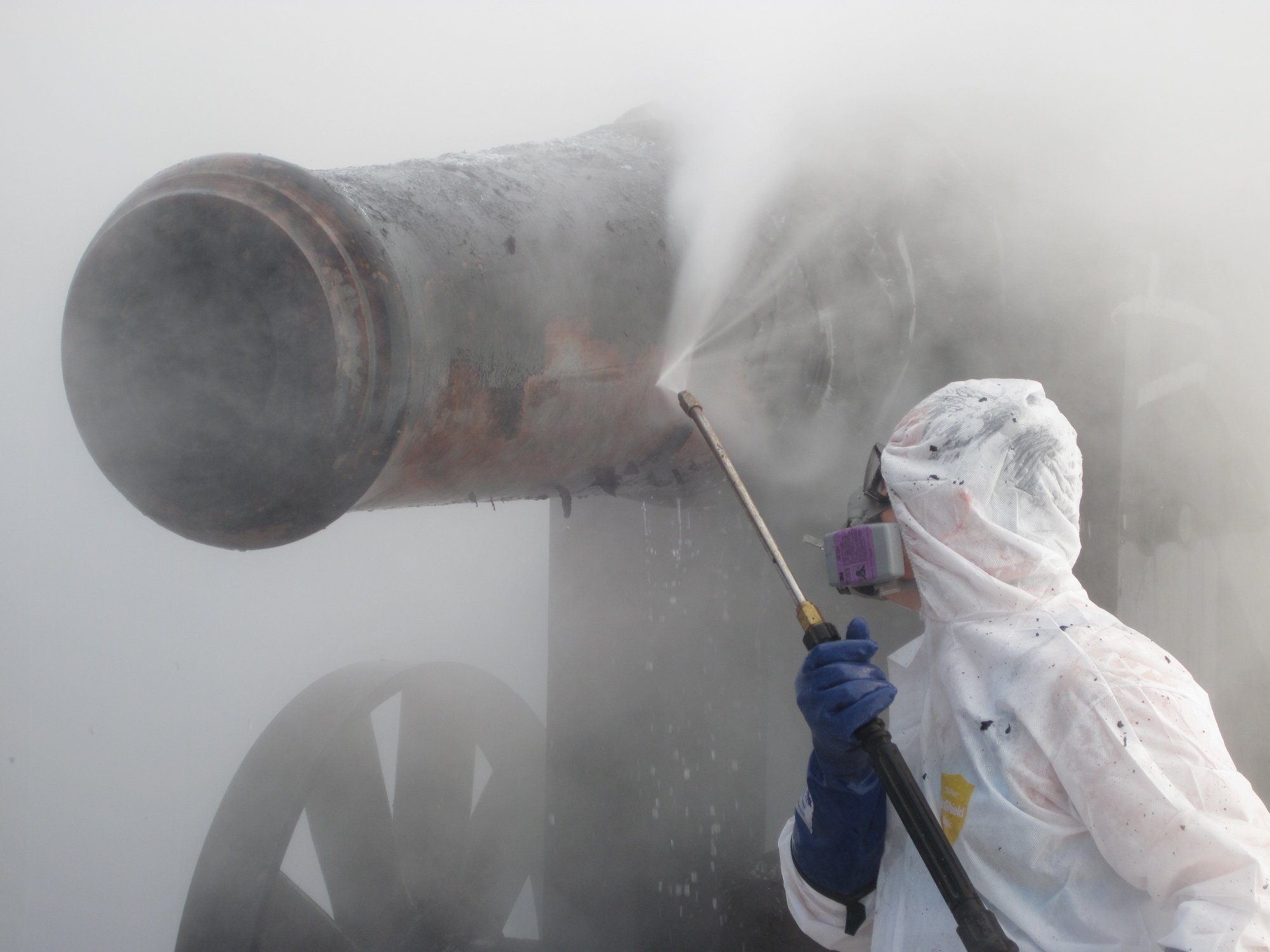
Beyond the Hunley’s past—into conservation’s future
The Warren Lasch Conservation Center is more than the H.L. Hunley.
In previous issues, we’ve covered many of the center’s other conservation projects. Subcritical technologies, which accelerate the desalination of iron exposed to maritime environments, were explored in Glimpse Fall 2012, and now Liisa Näsänen, a doctoral candidate at the University of Cardiff, is researching in collaboration with the Warren Lasch Conservation Center (WLCC) the possibility of applying the subcritical process to the desalination of copper and copper alloy artifacts. In the spring 2013 issue, we covered the conservation of the ordnance and architectural elements of Fort Sumter and Fort Moultrie, where the WLCC is the only U.S. institution to apply ThermaTech technology to metal conservation, using donated equipment from Restorative Techniques-UK that removes coating layers with superheated water so that conservators can reapply commercial coatings that will protect these objects from the elements. Additional work is being done on ordnance, as the WLCC has received three cannons recovered from the Pee Dee River by the South Carolina Institute for Archaeology and Anthropology (SCIAA). The center is also working with the University of Montana and the Naval History and Heritage Command to conserve ordnance from the historic U.S.S. Maine.
But what we haven’t yet explored in these pages is the Low Country Digital Initiative, created to systematically document the cultural and architectural history of South Carolina’s Low Country and beyond. This, and the Warren Lasch Conservation Center’s similar projects in 3-D scanning, offer new opportunities to those interested in historic conservation—so that we can understand the history around us better than ever before.
Stéphanie Cretté, director of the WLCC and a research professor of materials science and engineering, says, “The laboratory champions an integrated approach where conservation practice, archaeology, architecture, and materials science work together to solve preservation challenges; the facility houses a state-of-the-art materials analysis, characterization, and documentation laboratory. Currently the WLCC employs a wide range of digital documentation technologies, including photogrammetry, structured-light scanning, and 3-D laser scanning.
“Laser scanning is becoming extremely accurate, and it can be applied under many circumstances,” continues Cretté. “It’s more important than ever to have good documentation on the 3-D level instead of photos, because if something happened, like a natural disaster or even wanted destruction, you can have a building rebuilt from its 3-D scan. You can recreate the blueprint.”
Here are a few examples of 3-D digital documentation projects that are part of the Low Country Digital Initiative:
• At the Colonial Dorchester State Historic Site, conservators have used 3-D laser scanning to document a delicate window frame on a bell tower, which is now undergoing treatment in the conservation laboratory.
• In St. George, Bermuda, conservators and architectural historians plan to scan and assess King Square and the King Street corridor. Depending on funding, this contract may be extended, and the entire city may be scanned and documented, taking an already ambitious project to an unprecedented level.
• In collaboration with the Charleston Preservation Society, the WLCC has laser scanned the Old Sheldon Church Ruins in Yemassee, South Carolina, adding in raw point cloud data with high-resolution color photographs, resulting in a 3-D model that’s accurate to within two millimeters and that additionally contains mortar data, as different mortars were determined through chemical analysis and then mapped onto the model.
• The WLCC has also performed the scanning and digital documentation of the exquisite Pompion Hill Chapel through a State Historic Preservation Office grant over the summer of 2015. By using the highly accurate and noninvasive laser scan, the researchers produced a model of the chapel that could be used for identifying and monitoring repair issues. The model, integrated into the site management plan, is an important tool for planning future repairs and maintenance.
• The center has several adjunct professors teaching in the Graduate Program of Historic Preservation and this spring is offering a course on the utilization of x-ray fluorescence (XRF).
• Additionally, the Warren Lasch Conservation Center intends to offer a summer field school, taught by Brent Fortenberry, an architectural historian and archaeologist of the WLCC, where undergraduate and graduate students can receive training in methods of digital documentation like structural scanning, photogrammetry, and 3-D laser scanning.
To create a complete picture of a historical object, in addition to using documentation techniques like laser scanning or photogrammetry, the conservators need to get an idea of the material composition. Analytical tools such as x-radiography, Fourier Transform Infrared Spectroscopy, Raman spectroscopy, XRF or Variable Pressure Scanning Electron Microscope Energy Dispersive Spectroscopy can enable them to determine an object’s chemical composition. In some cases where the testing has to be done on-site, conservators use a handheld XRF. Cretté explains that understanding the composition of an object is important because conservation techniques must be compatible with the object’s chemical composition.
“When we analyze materials such as wood, brick, metal, or mortar, we want to understand the best way to conserve or reserve a structure or an artifact,” Cretté says. “We always follow the ethics to conserve a site. We have to give the best recommendation to the stakeholders, and 3-D scanning can help toward best practice to preserve a site.”
But 3-D scanning offers additional benefits, Cretté says. Take the case of the bell tower frame. The delicate frame will not be put back up, but a 3-D model could be displayed to visitors. In the future, museums might use 3-D models to display artifacts to the public that are otherwise too fragile. Perhaps someday, with the help of a digital arts production team, 3-D cultural museums could be developed.
These digital documentation technologies, coupled with the Warren Lasch Conservation Center’s expertise in materials and conservation science, ensure that structures and artifacts around us can be understood more thoroughly than ever before.
photos by Craig Mahaffey
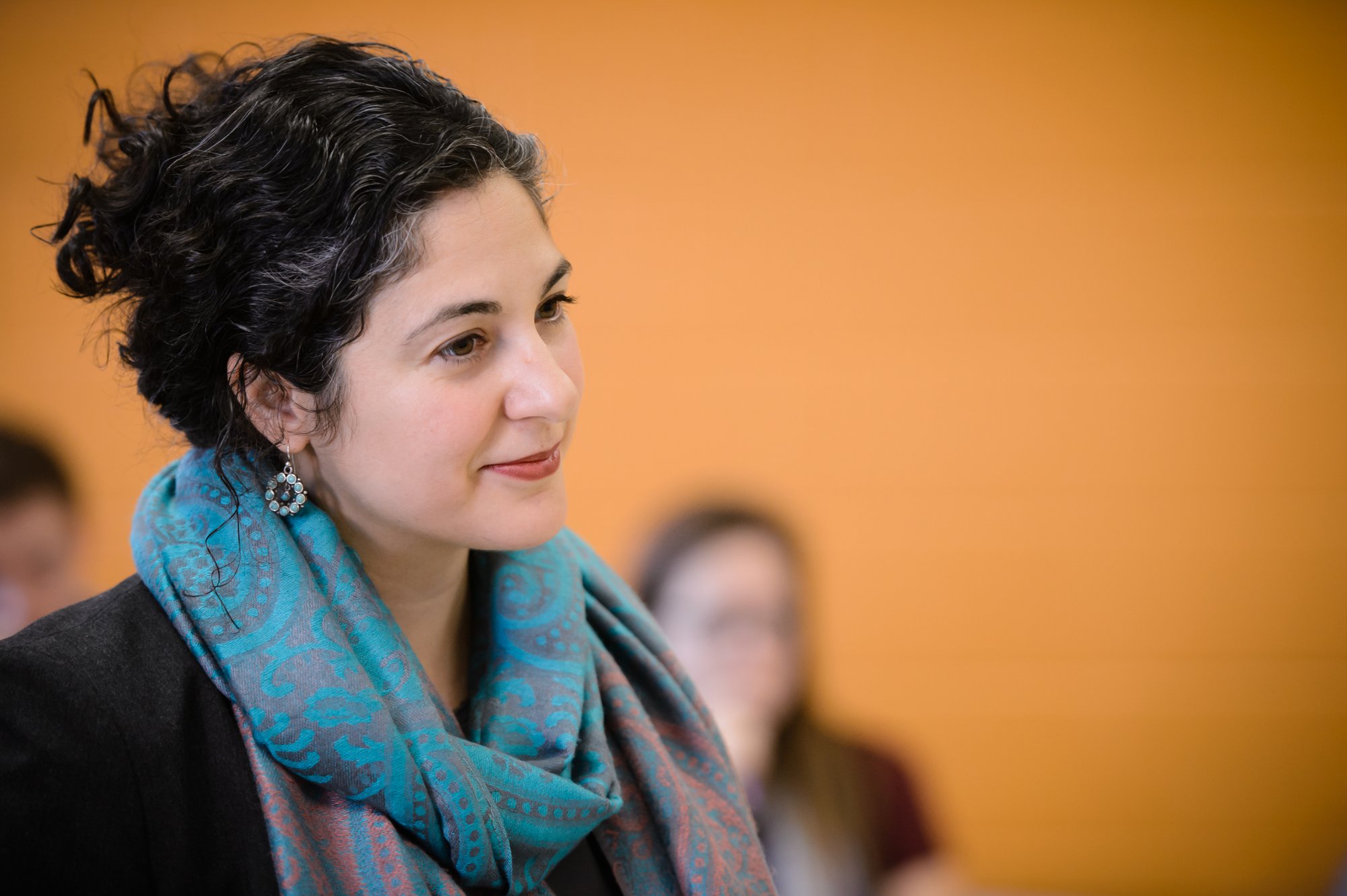
Angela Naimou, as a scholar of literature, asks the hard questions, questions that demand thought—that command a pause.
When Angela Naimou was a teenager and computers were young, her father would hand her a scrawled stack of notes, and say, “Oh, could you please type this letter up?” Naimou, paging through the writing, would realize that it was someone’s refugee application and that she was supposed to type up their account of what happened to them, having been persecuted by Saddam Hussein’s government in Iraq.
“It was a very daunting thing for me, as a teenager,” Naimou says. “Because, first of all, it can be very difficult material, and these people were friends of the family, or family members.”
Sitting in her Michigan home, before her blinking cursor on her blank page, Naimou knew so much rode on these applications. Customs officials would be reviewing the documents, looking for “the right story,” a story that was similar enough to others in detail but also unique enough to constitute an original experience. If she turned these jotted notes into sentences, did that mean she made the decisions a writer, a biographer, would make? Everything depended on staying true to the personal accounts while convincing the reader who’d process this application.
“To me, that’s really fascinating,” Naimou says. “You can be in this weird place of statelessness, and so much depends on your story and how you tell it.”
Naimou’s parents immigrated in the late ’60s and early ’70s, and her father always told her he’d never return to Iraq. Not until Saddam Hussein was gone. Even though some of Naimou’s relatives, part of an Iraqi Christian minority called Chaldeans, have returned in order to work as interpreters, Naimou herself has never visited the land of her parents’ birth, and considering the recent destruction of the Iraqi state and turmoil in the region, it’s an open question as to whether she ever will.
But perhaps it’s unanswerable personal questions like these that drive Naimou’s professional inquiries, as an assistant professor of U.S. literature and cultural studies at Clemson, to such intense, daunting subjects.
Her recently published book,Salvage Work: U.S. and Caribbean Literatures amid the Debris of Legal Personhood, explores the ultimately unresolvable questions of evolving identity, legal personhood and statelessness. Using the lens of contemporary literature, Naimou delves into legal background of these stories, to see, as she says, “the way literature shapes our historical imagination.” Salvage Work explores how past laws in the United States, Puerto Rico, and Haiti continue to shape our ideas of personhood into the twenty-first century, from the legal identities of the slave to those of the refugee, the disappeared, the sex worker, the corporation, the sailor, the fugitive, the pregnant woman, and the fetus, among others. Naimou hopes to demonstrate that contemporary fiction can generate provocative responses to these histories of legal identity and, in the process, reimagine what it means to be human and to live together in an ethical way.
In one chapter of the book, for example, she uses literary analysis and historical documents to uncover mariners’ identities, exploring possible modern ramifications based on historical sailors being press-ganged, or kidnapped and forced into service at sea; not legally slaves, neither were these men free. Complicating this further are the ambiguity of maritime international borders and the vagaries of maritime law. Naimou traces this history, along with the labor and penal histories of New York, in relation to the maritime fiction of Herman Melville’s 1855 novella Benito Cereno and Francisco Goldman’s 1997 novel The Ordinary Seaman.
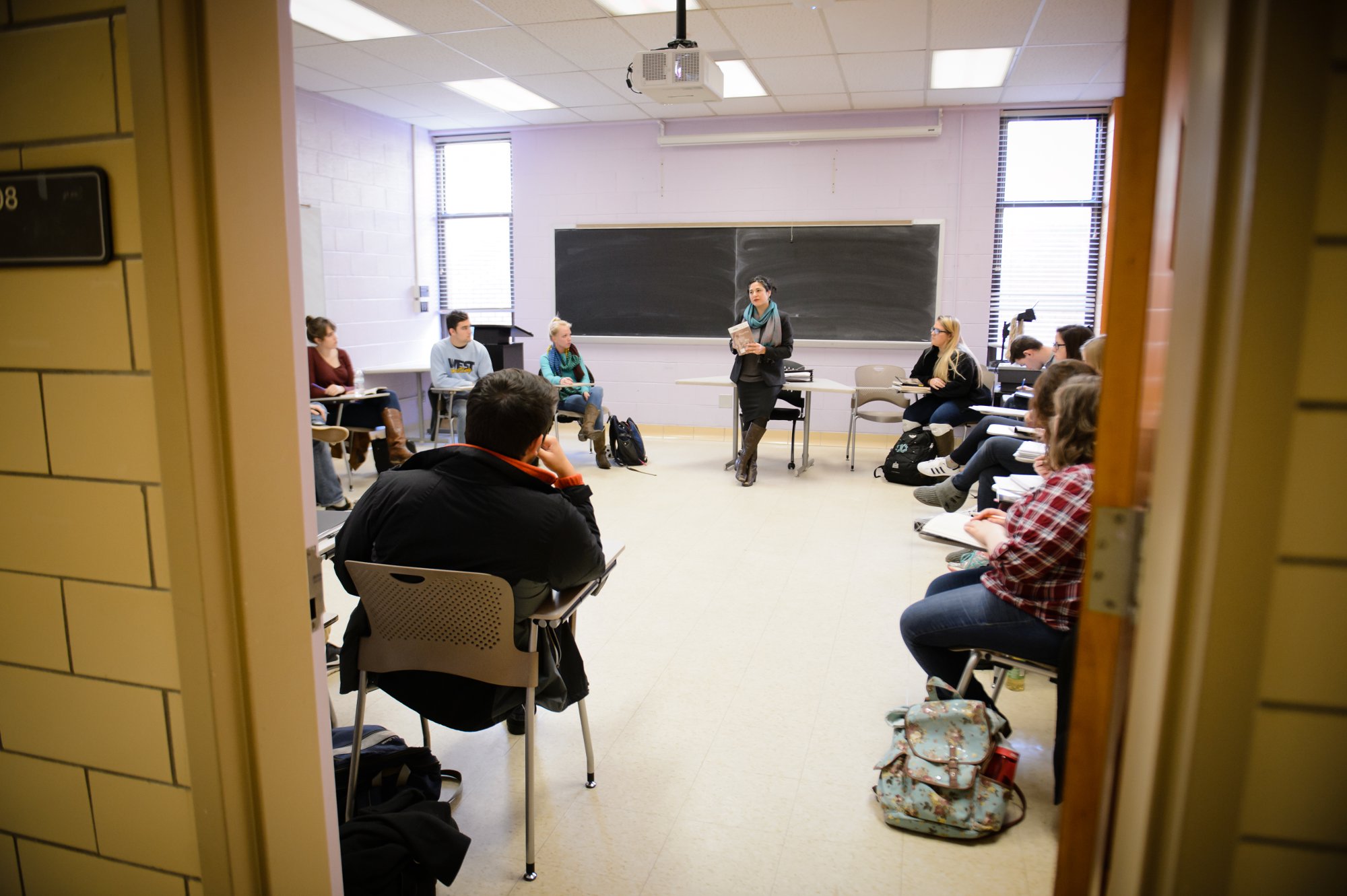
For every course, Naimou tries to include material on the syllabus that is completely new to her: “Then I get to read and learn right along with my students.”
But the idea that lends this scholarly work its title is that of the aesthetics of salvage, namely, Naimou says, that “salvage is a kind of partial recuperation, that you can pull from the ruins of history without erasing the marks of that history, of what can be painful, of what can be vast in shaping contemporary life.”
With this project recently having come to an end, Naimou must consider what’s next.
But, in the meantime, she does have something to tide her over. In a special issue of College Literature called “The Banalization of War” that she’s coediting with Graham MacPhee of West Chester University, she’s written a short piece concerning the debates over refugees and migrants in Europe and the United States as people to be welcomed, feared, pitied, or punished. Naimou examines what kinds of meanings are attributed to the category of refugee when used to identify those not only from the Middle East and Africa but also those fleeing Central America and Mexico. As part of her developing interest in art of the contemporary African diaspora, she’s also interviewed one of the most important artists working today, the Nairobi-born, Brooklyn-based artist Wangechi Mutu.
Before she can launch herself into a new book project, Naimou must first read new literature and study visual art, picking out the works that lend themselves to her type of in-depth analysis. Usually, she selects novels that experiment with language or poems that get her thinking about bigger things, or artwork that references histories she didn’t even know about. “I’m drawn to literature, essays, and art that demand a pause,” Naimou says, “and demand thinking without an easy answer. It’s not for the sake of being difficult alone, but it’s what difficulty allows.
“When we listen to our artists and our writers and engage with them and with each other through art, literature, or essays, spaces open up for real conversation,” Naimou says, “and it’s not because they agree. It’s because they ask so much of readers and viewers, inviting us to contend with disagreement and to imagine alternative visions for living in the world.”
As with her research for Salvage Work, Naimou plans to pair her study of literature and art with an exploration of how law constructs the concepts and meanings that shape society and culture. Combing through case studies and other original sources, she’ll piece together how the iterations of legal concepts have changed over time to culminate in the work before her, a snapshot in an ever-changing history.
“This approach to research requires things of me that I didn’t expect when I first began studying literature, like reading legal cases or reading histories of sailors or the slave trade,” Naimou says. “But basically learning from so many other disciplines for me has really been important. I’m resisting the idea that anyone is an expert or master of knowledge, but rather, that we’re always engaged in the process of gathering knowledge, of thinking, of reflecting, and in doing so, we’re bringing people and ideas from various fields into conversation with each other.”
In the end, for all Naimou’s use of law and history, her questions are attuned to, as she says, literature, and the generative power of art. For her, the way that art continues to shape how we give meaning to the world will help us all gain insights that are timely and worth sharing.
